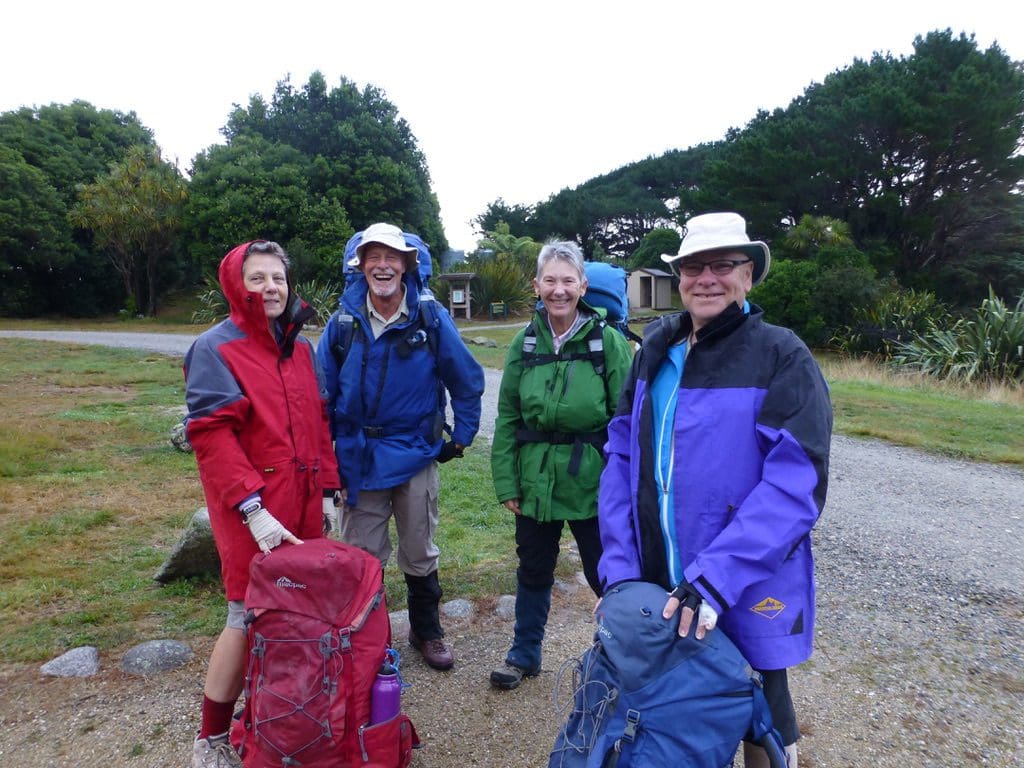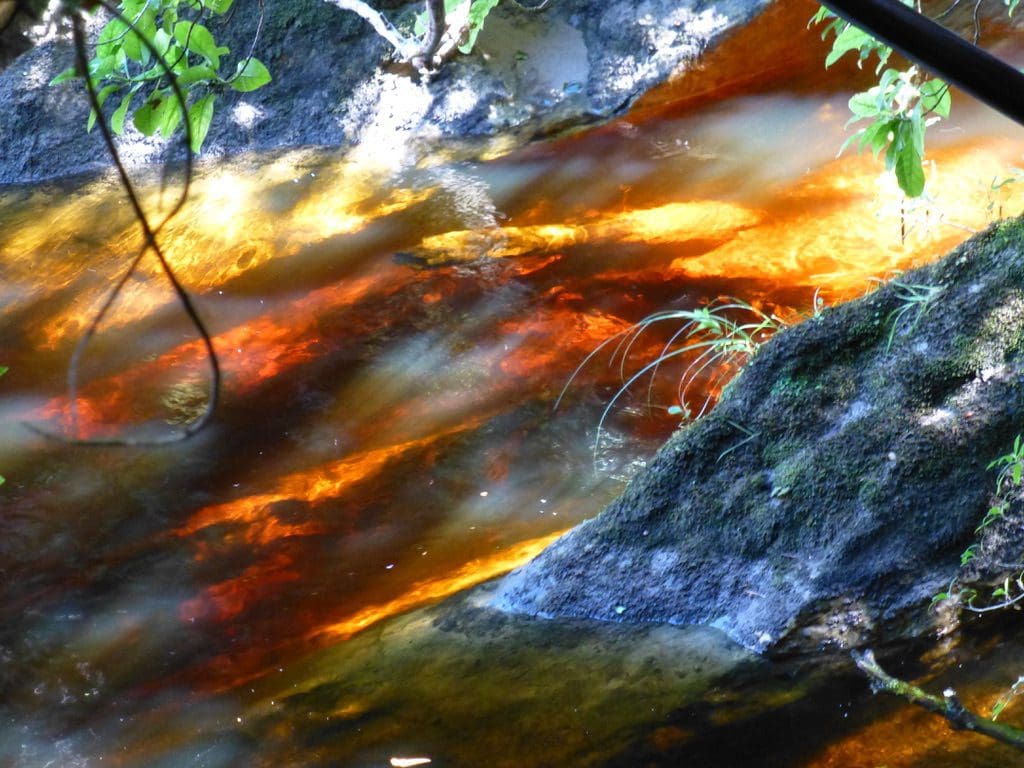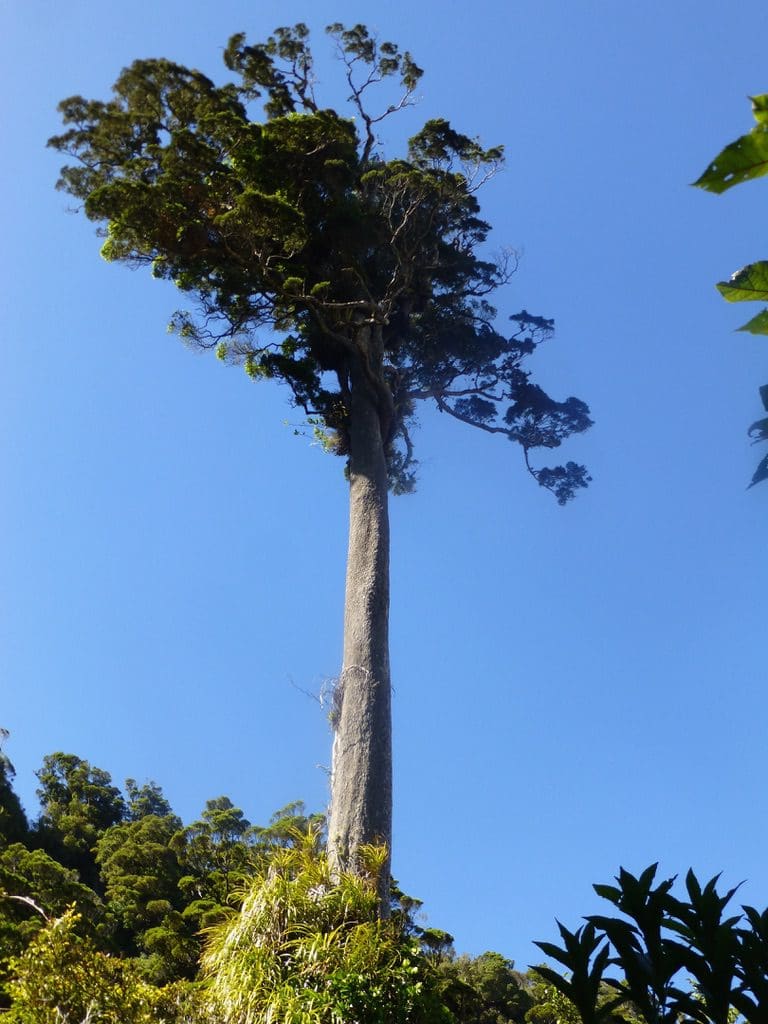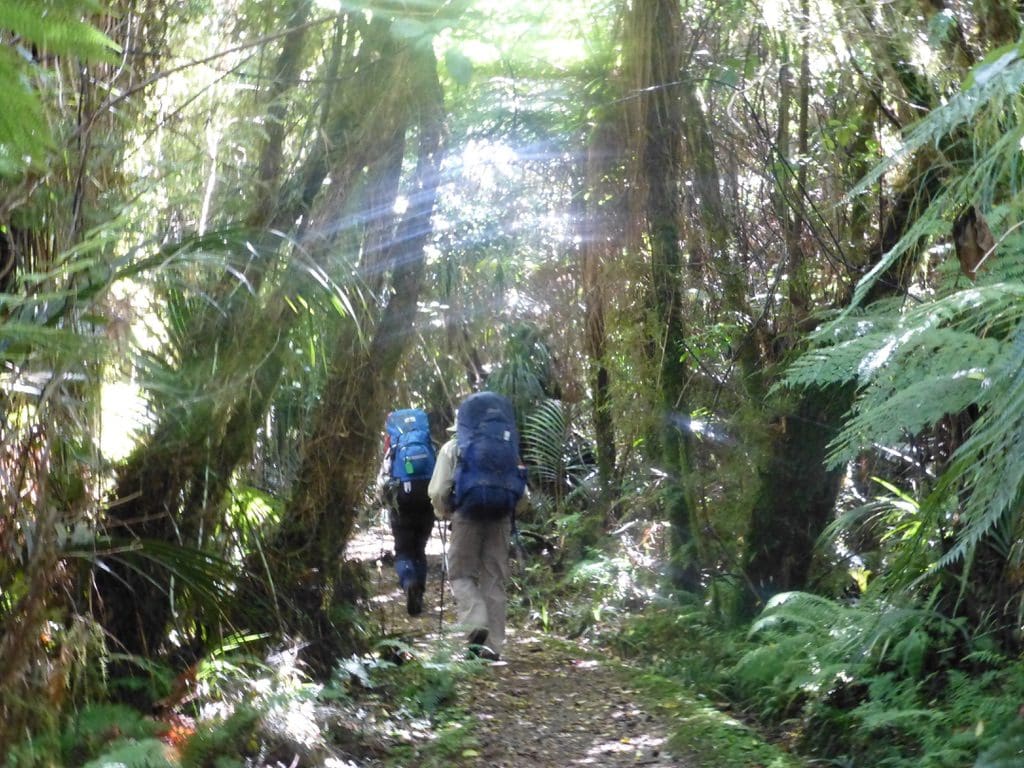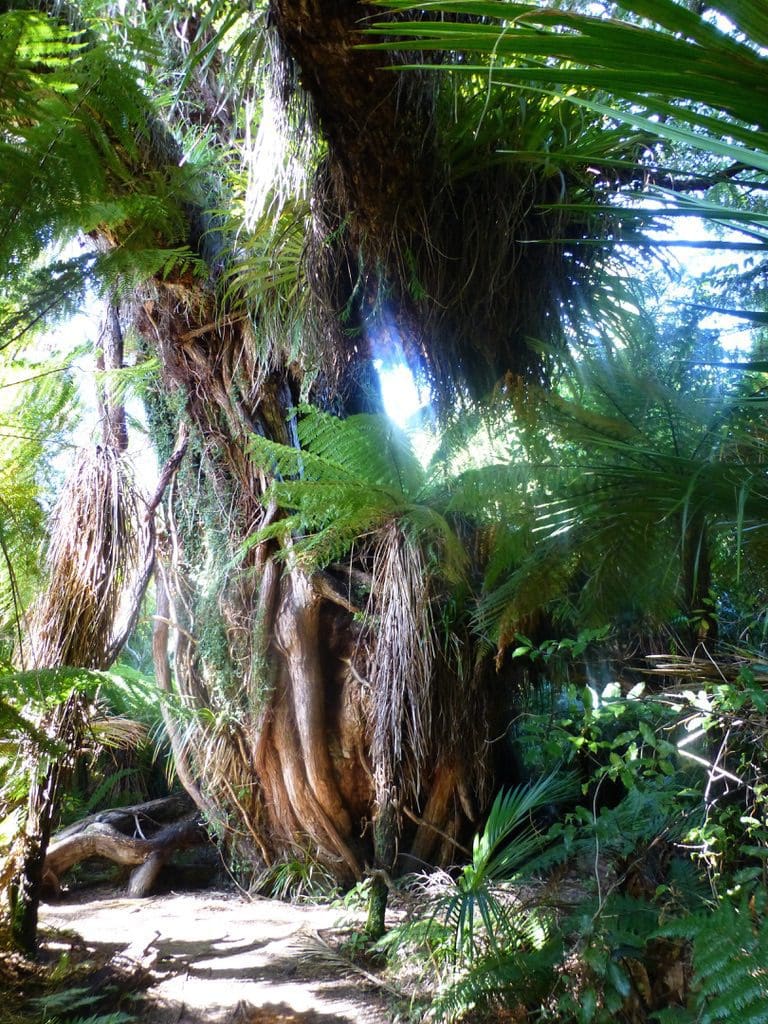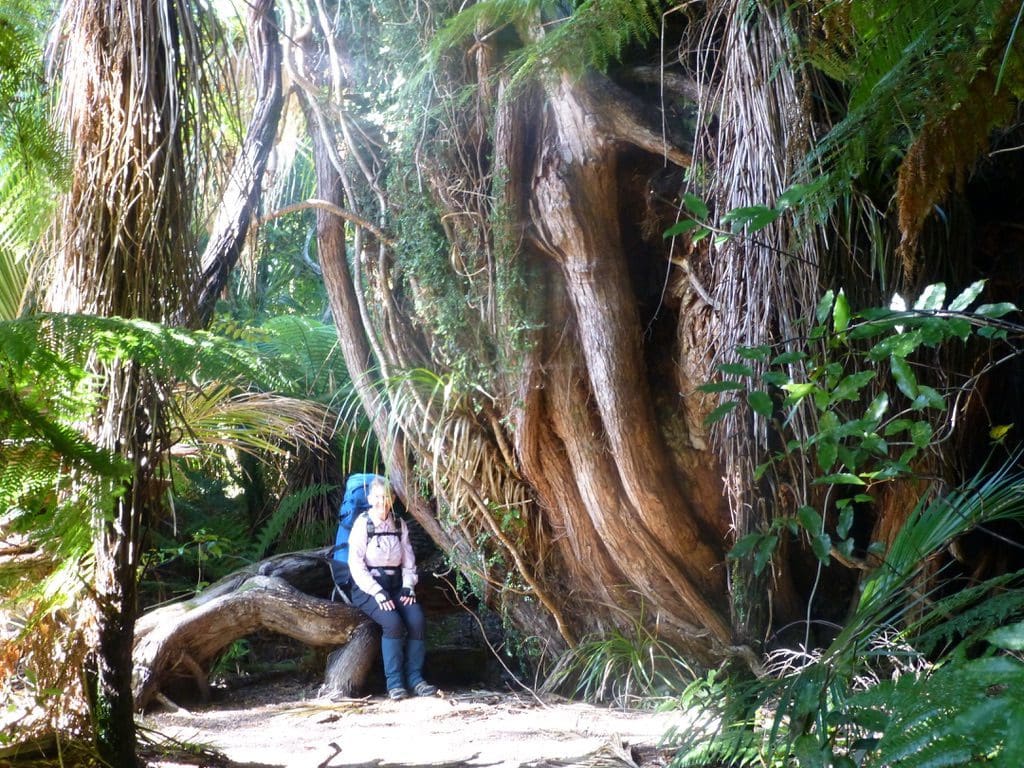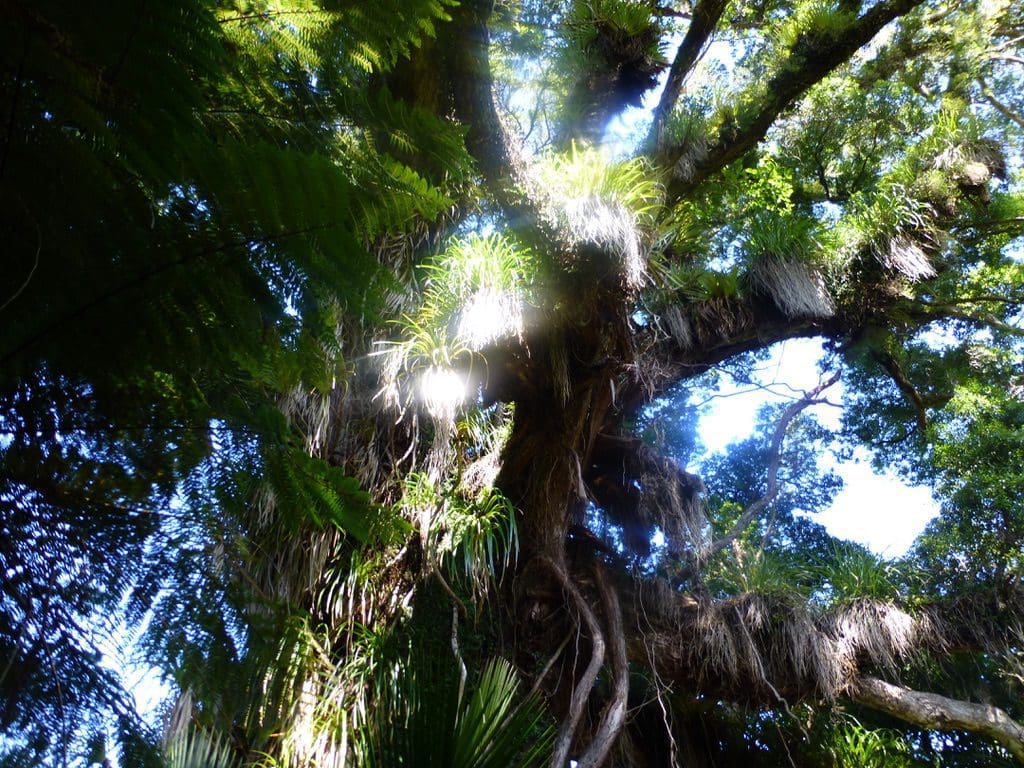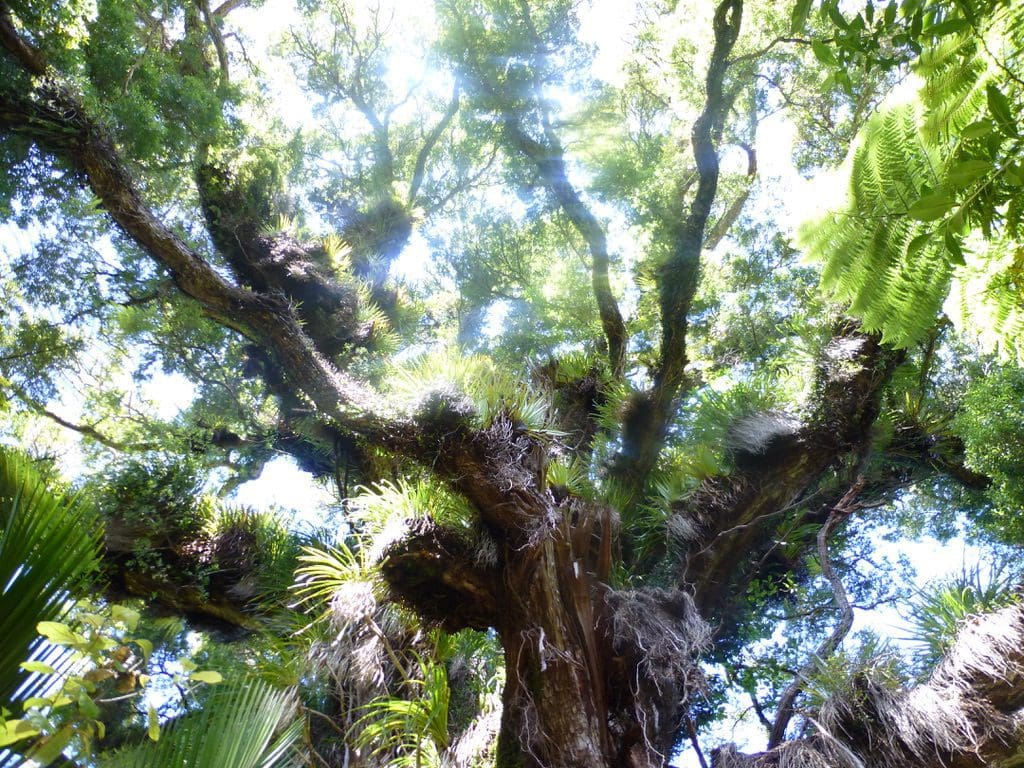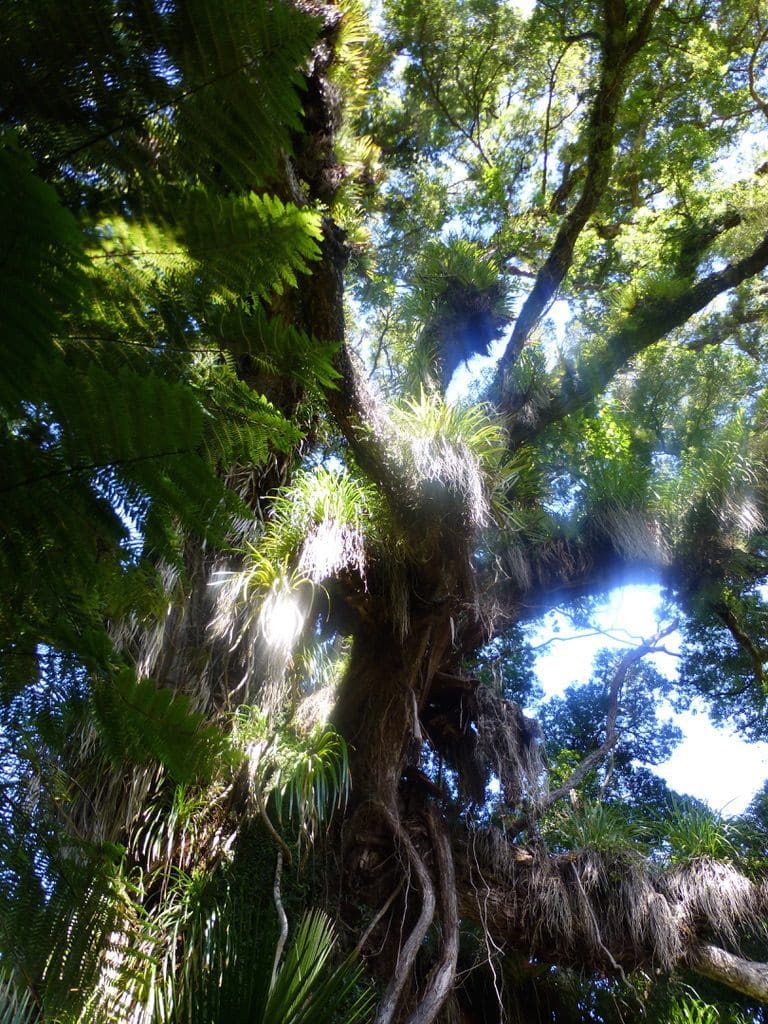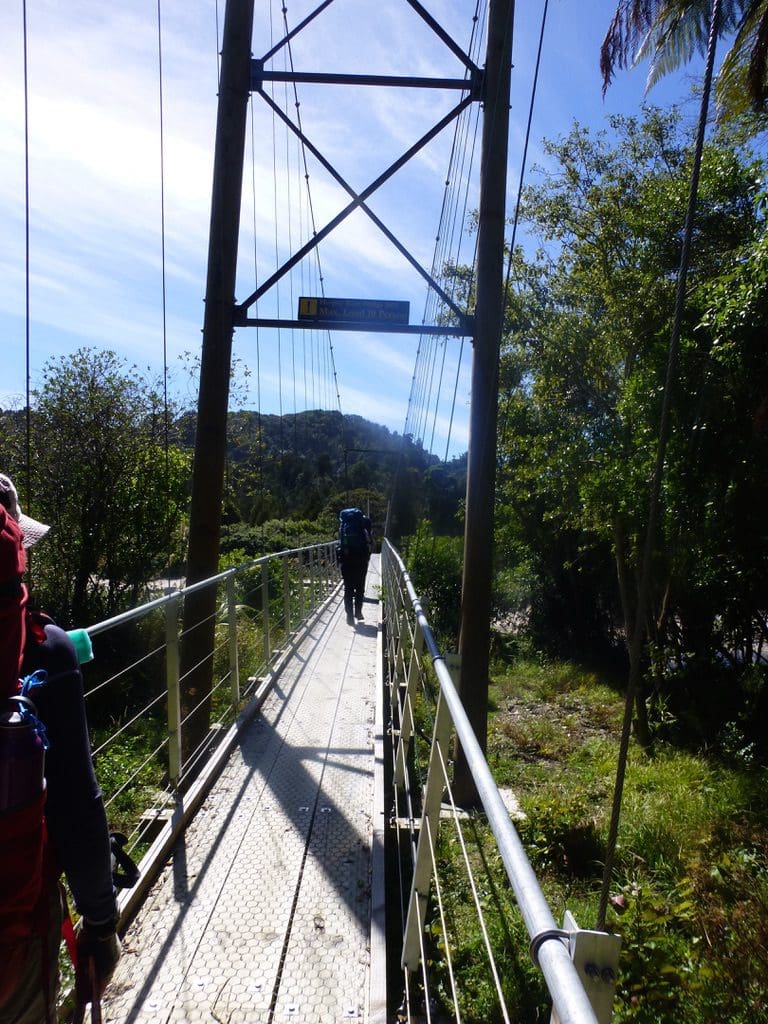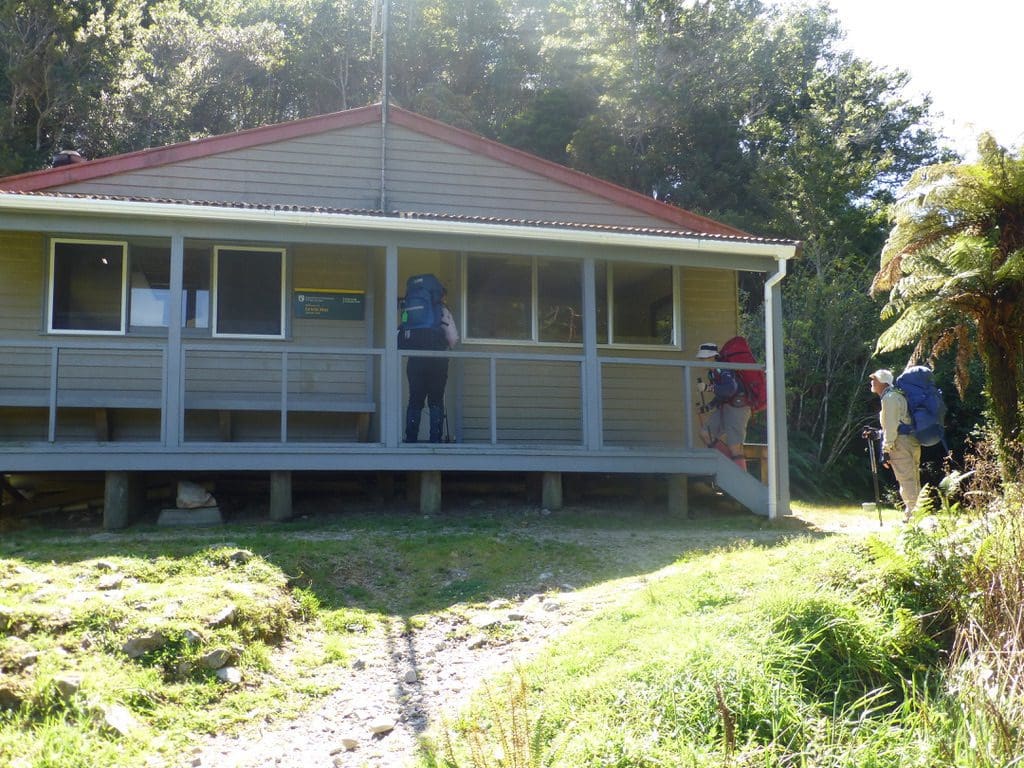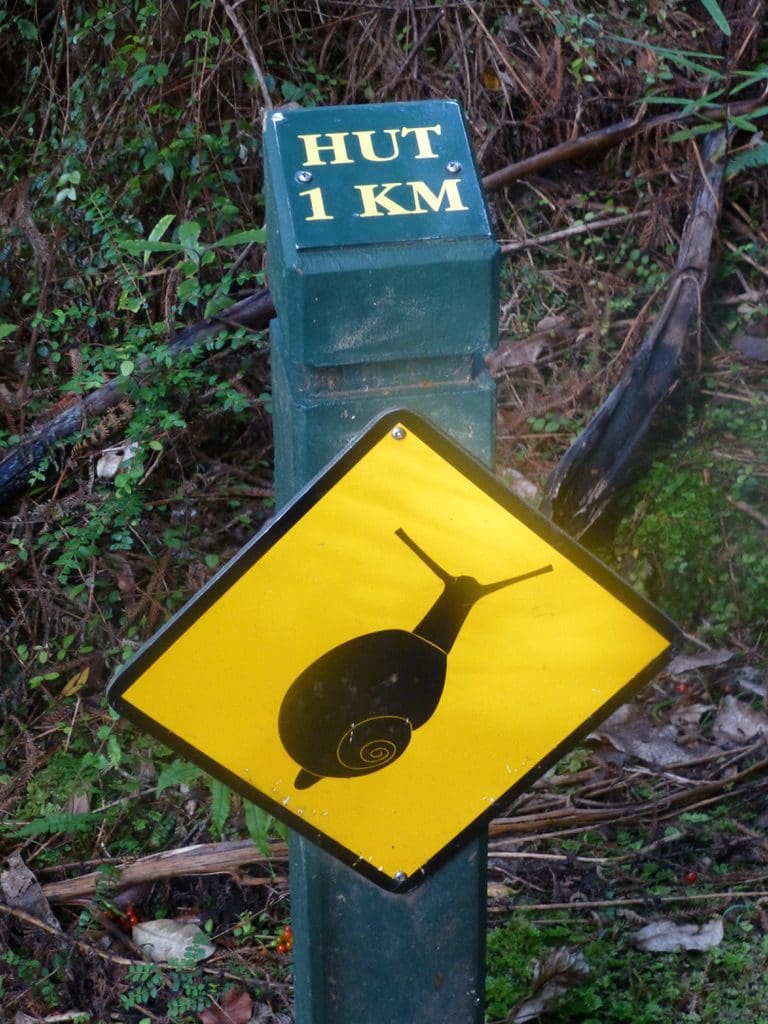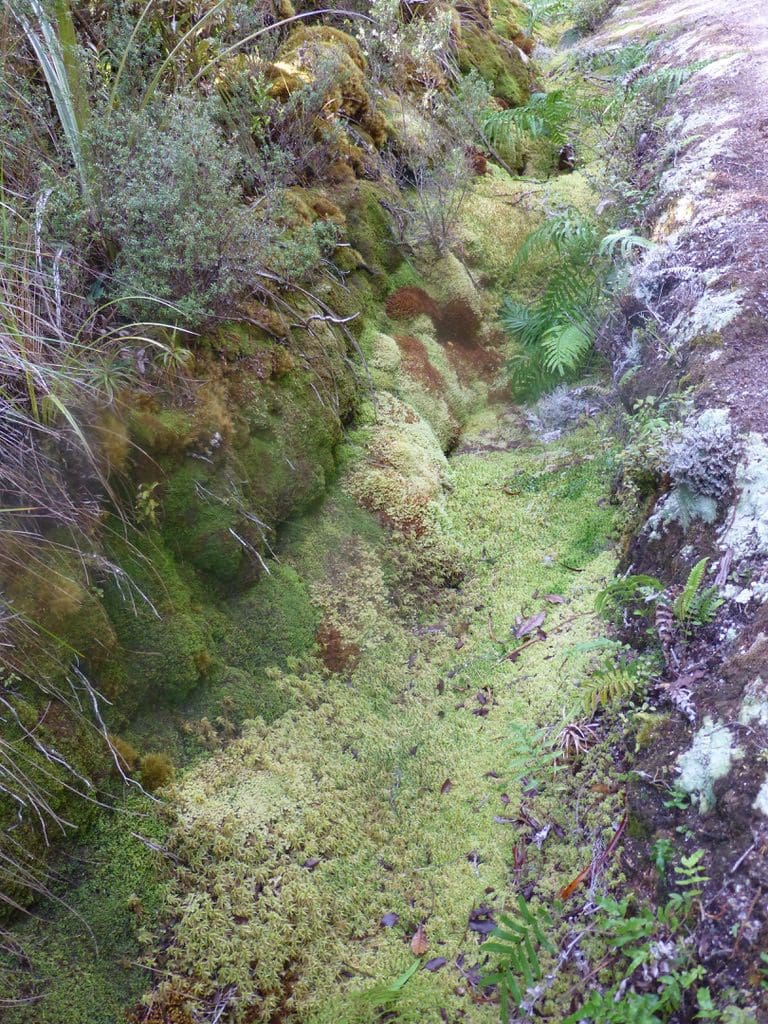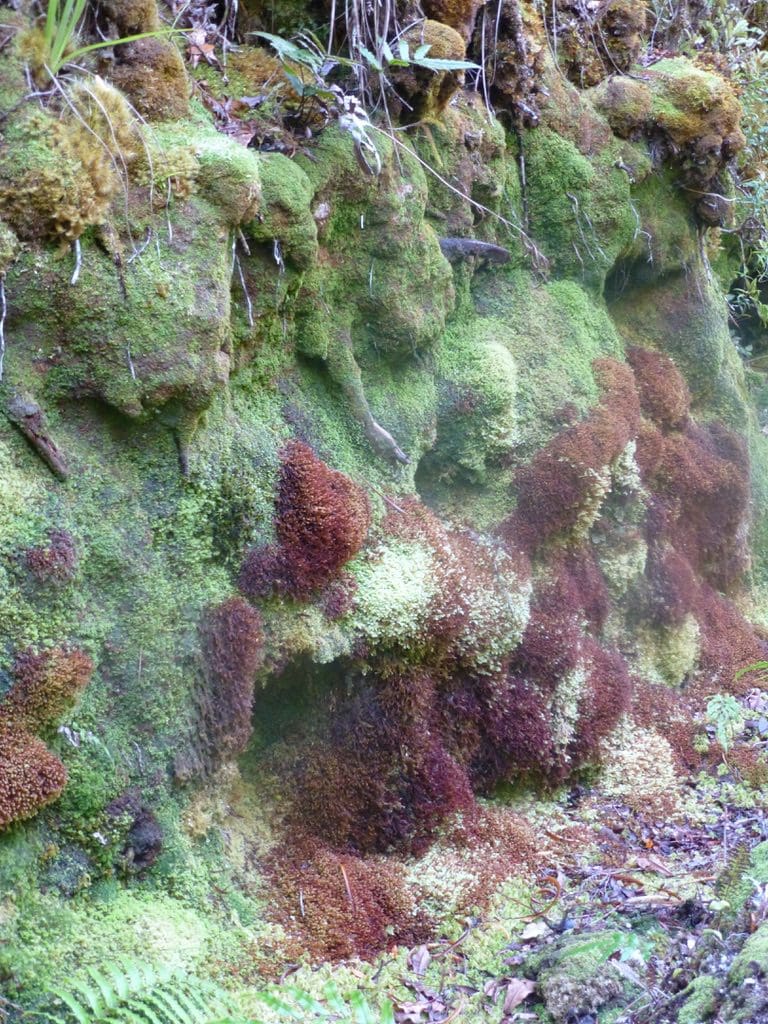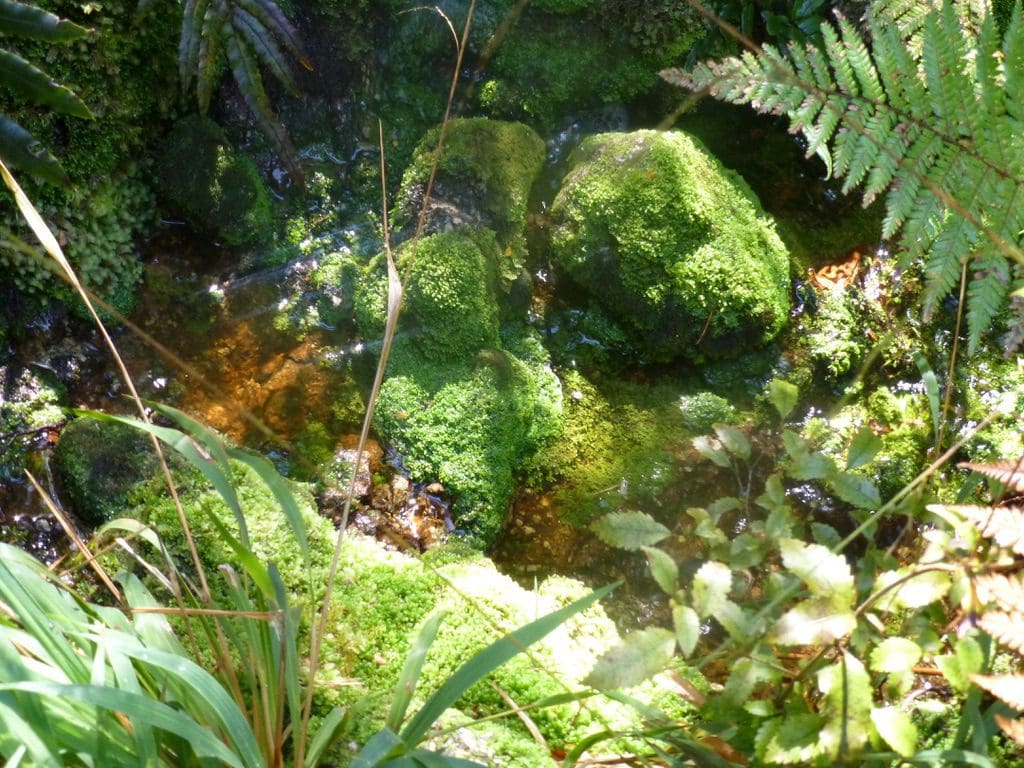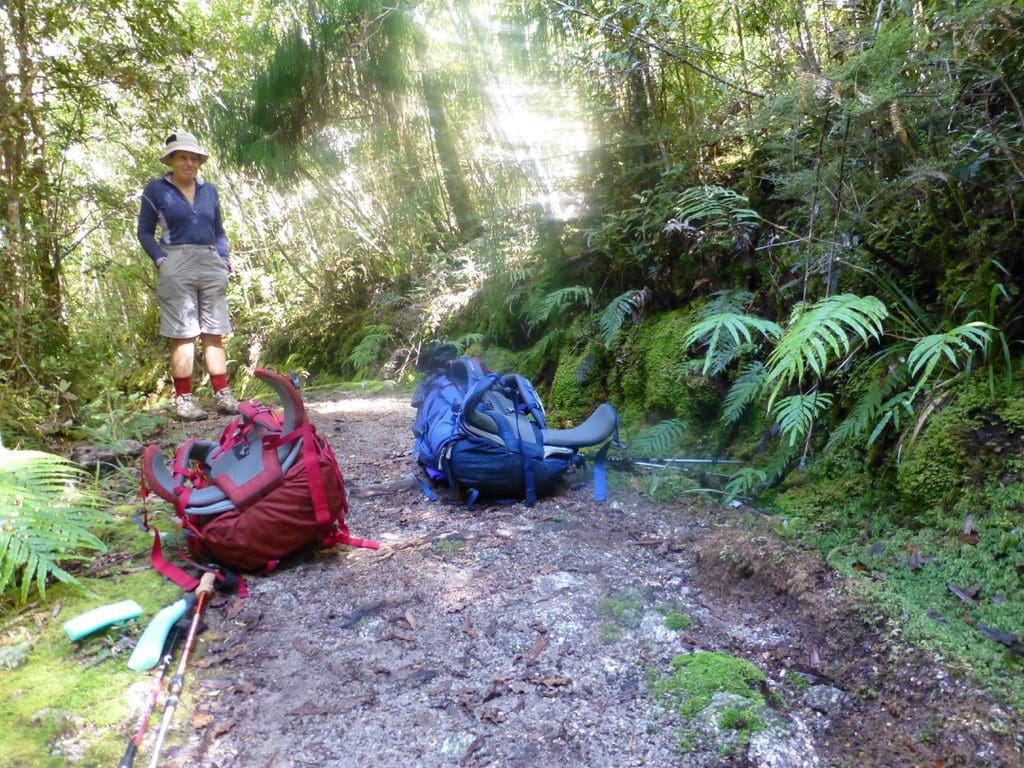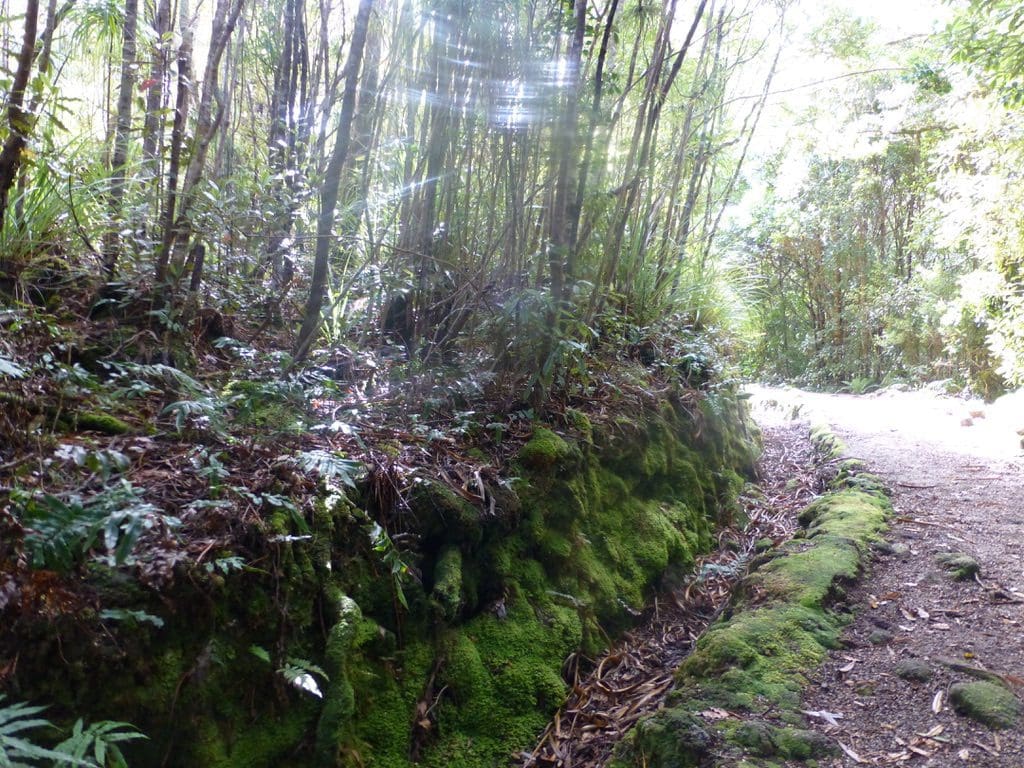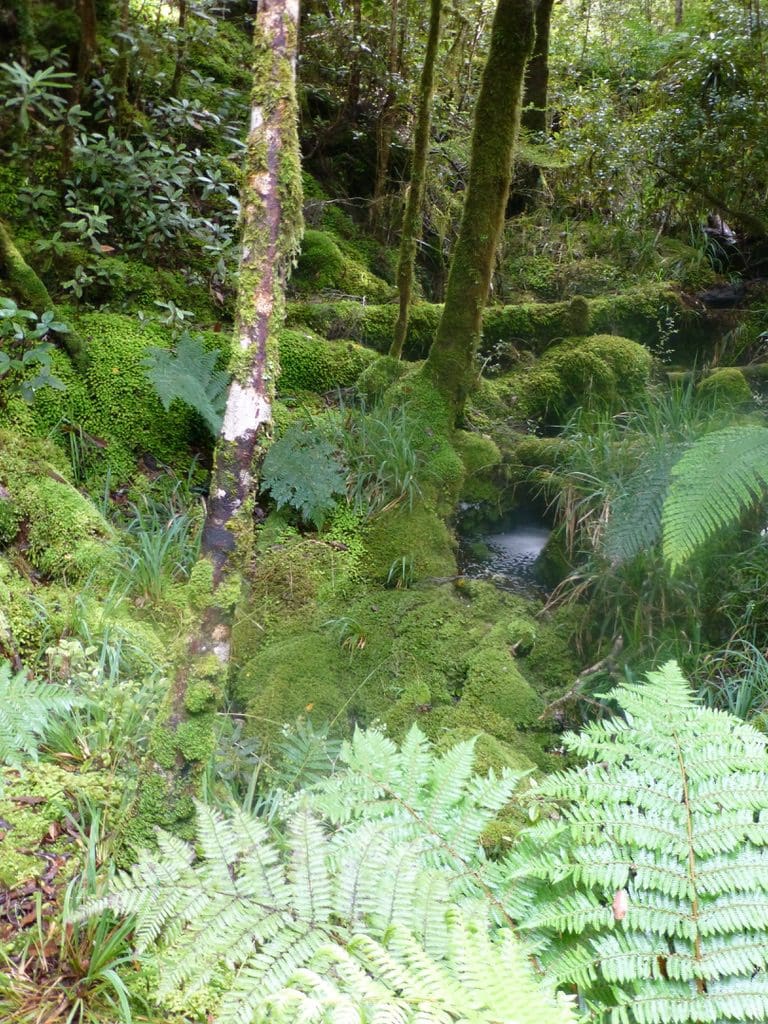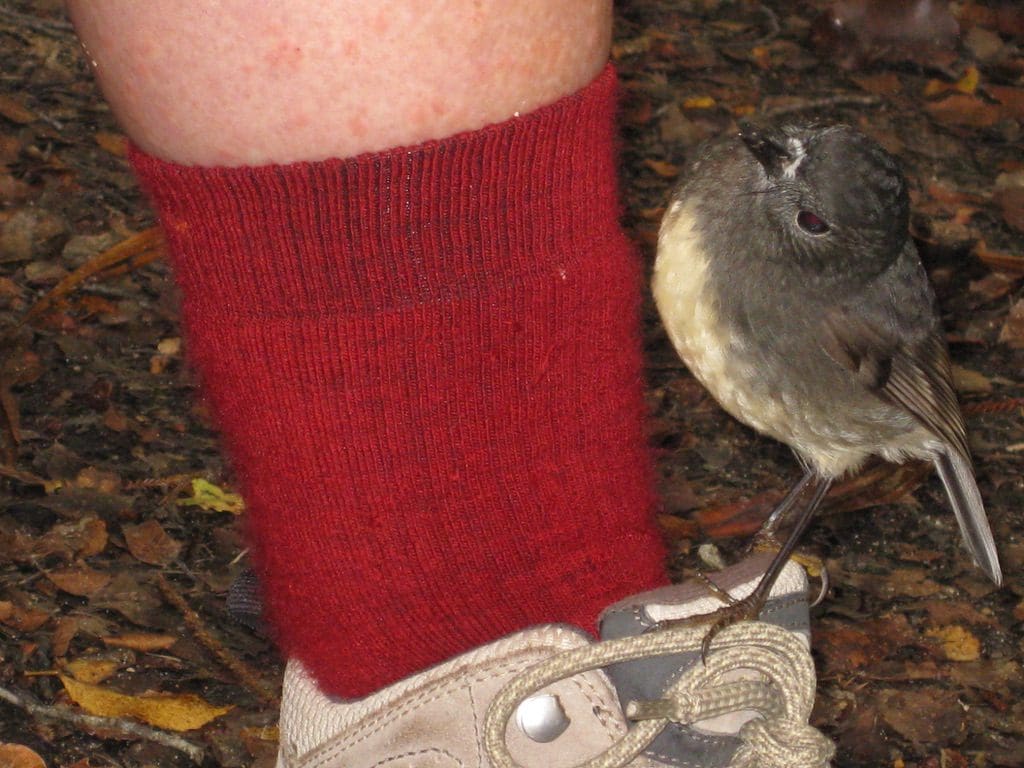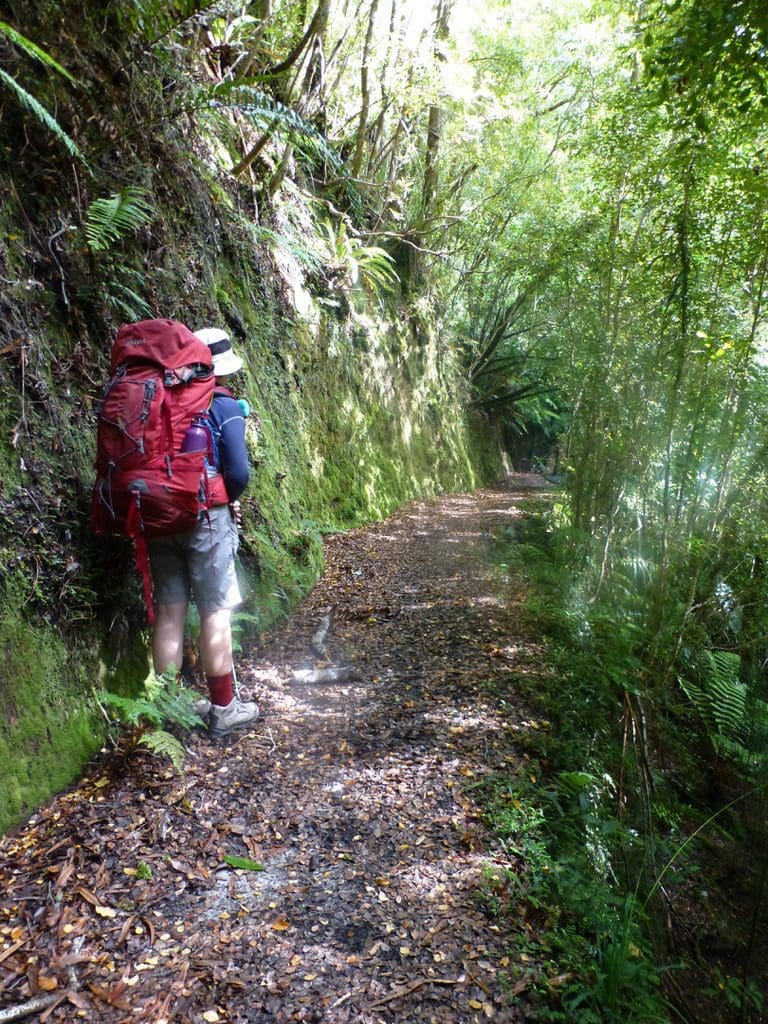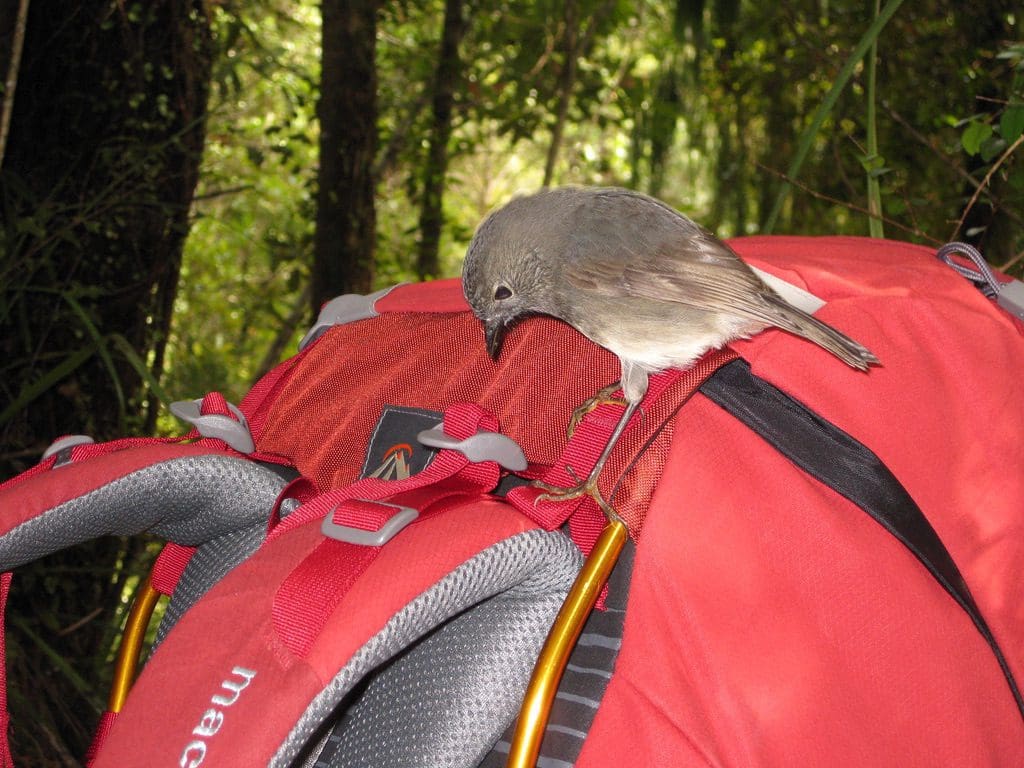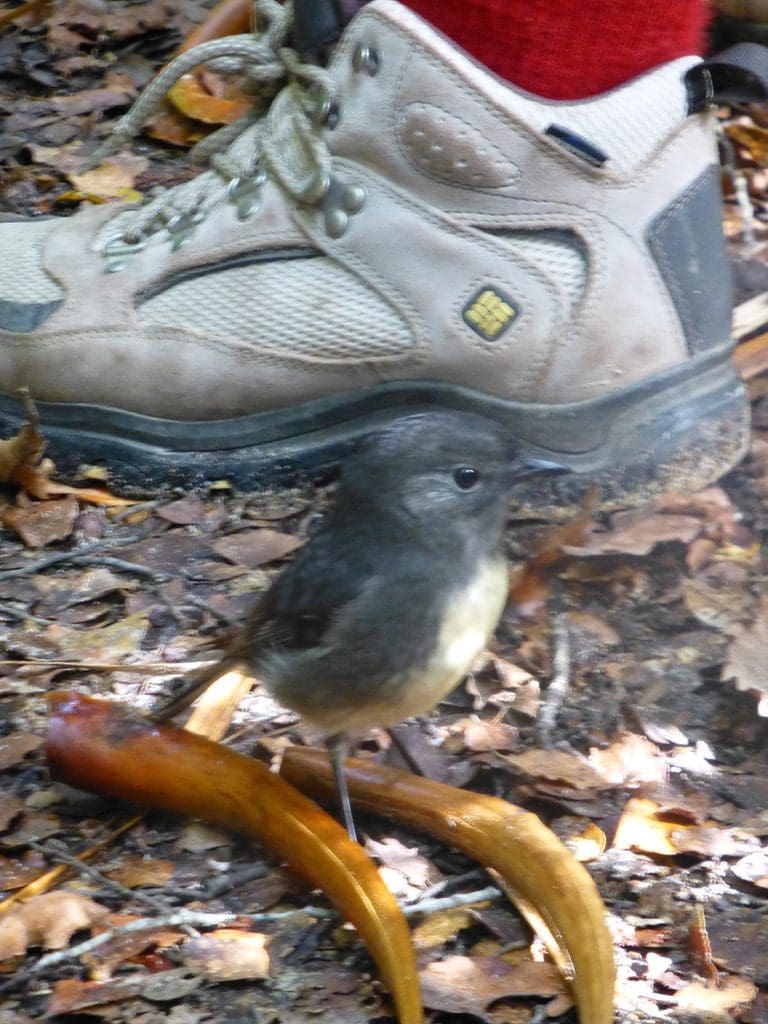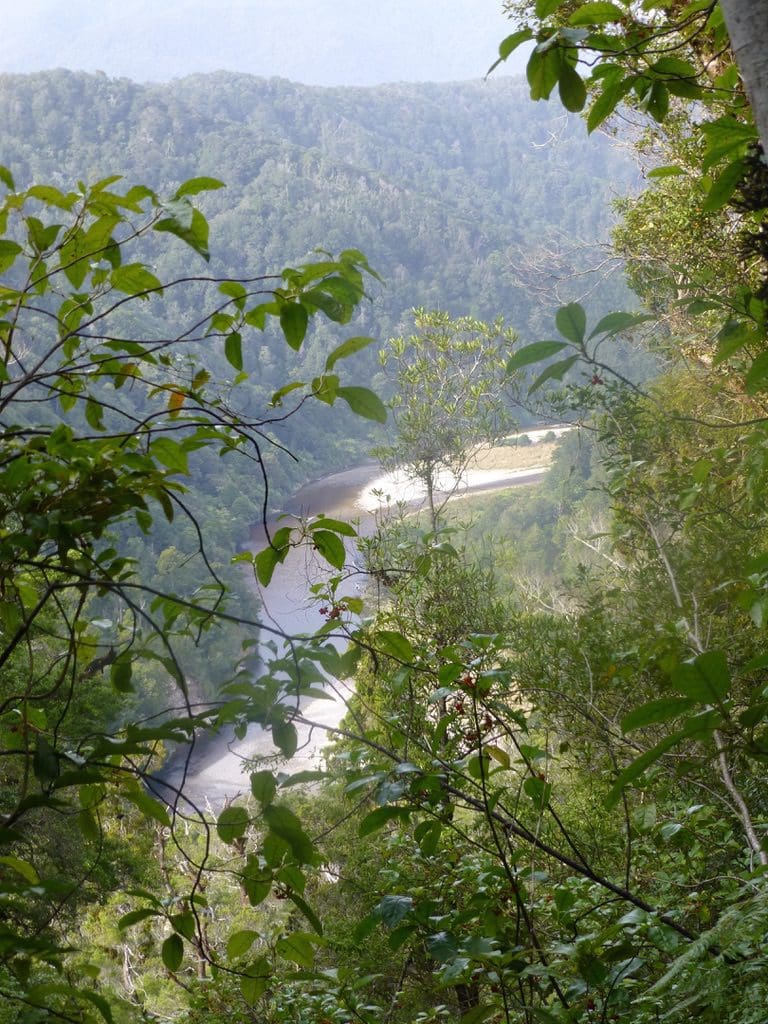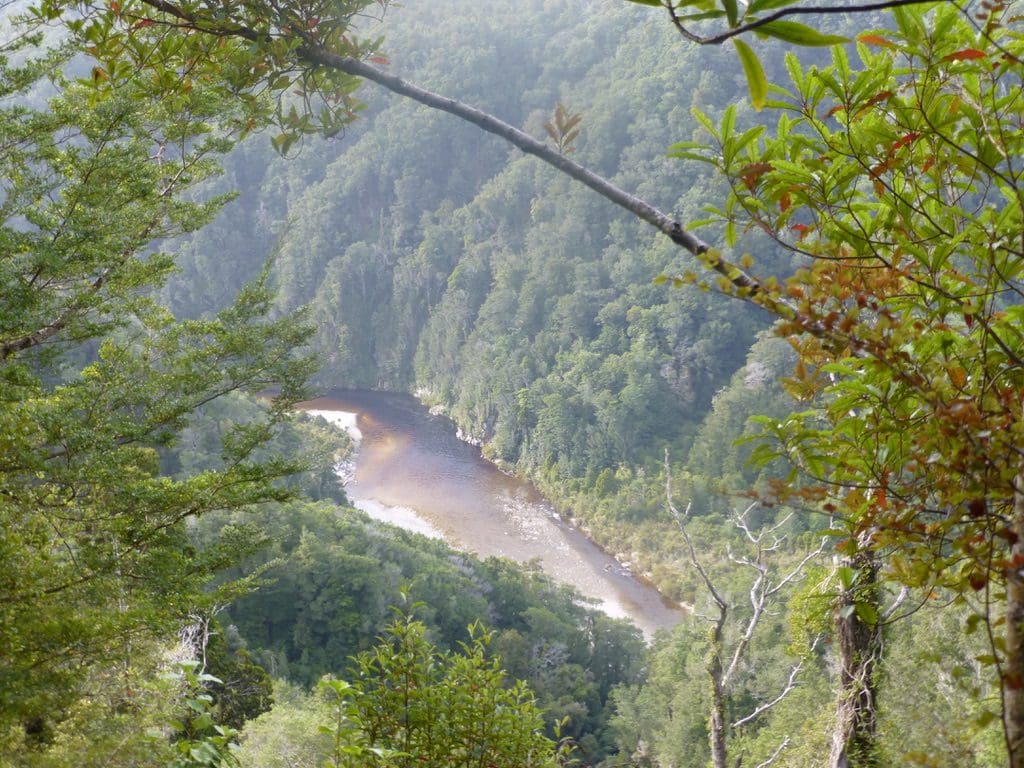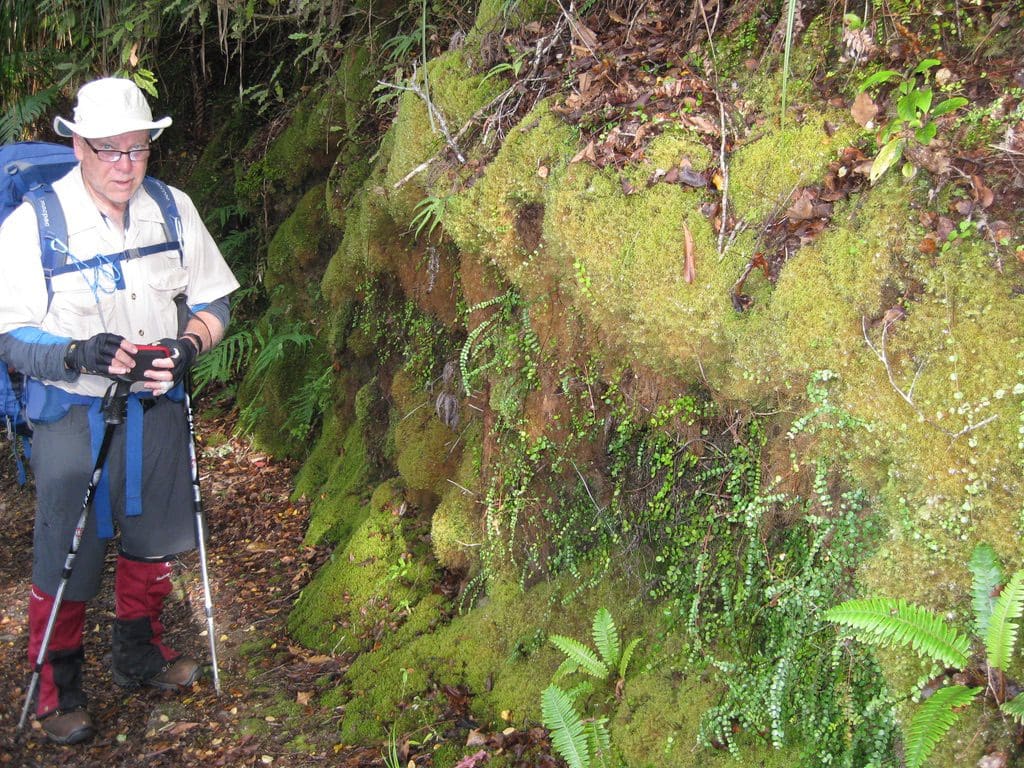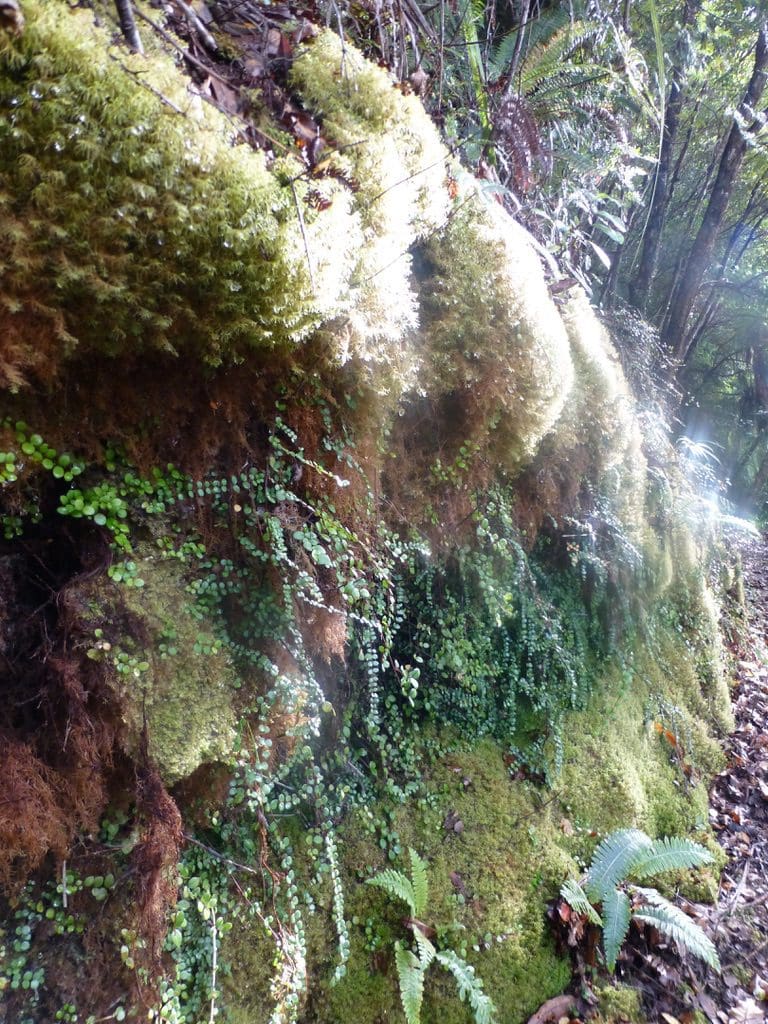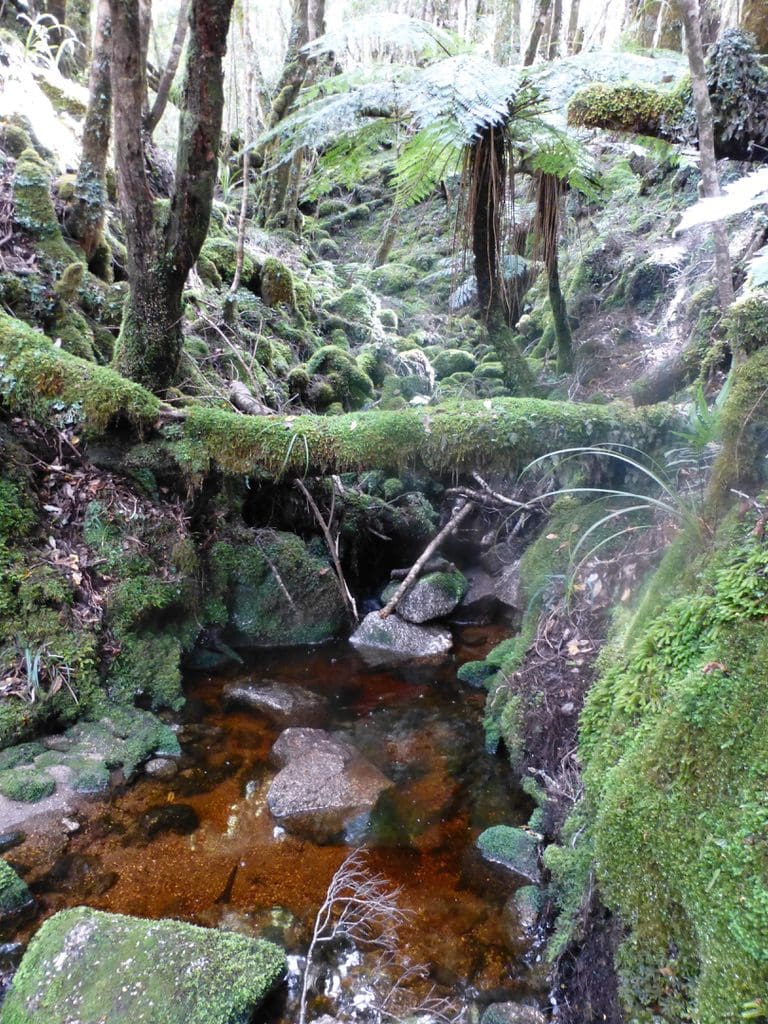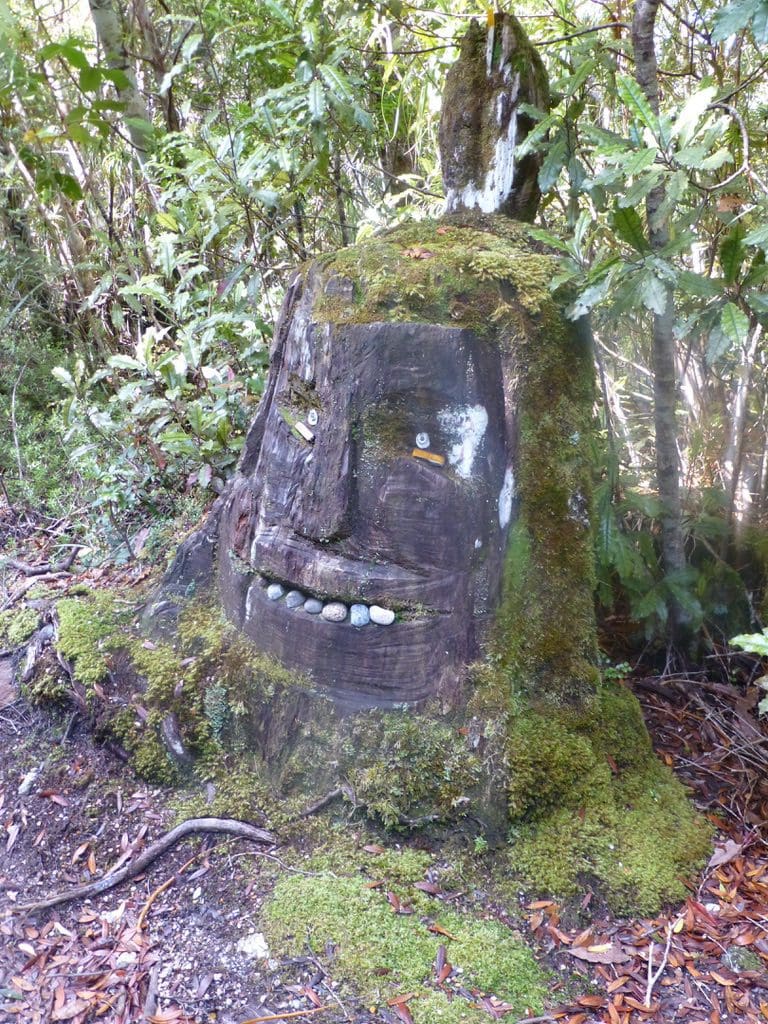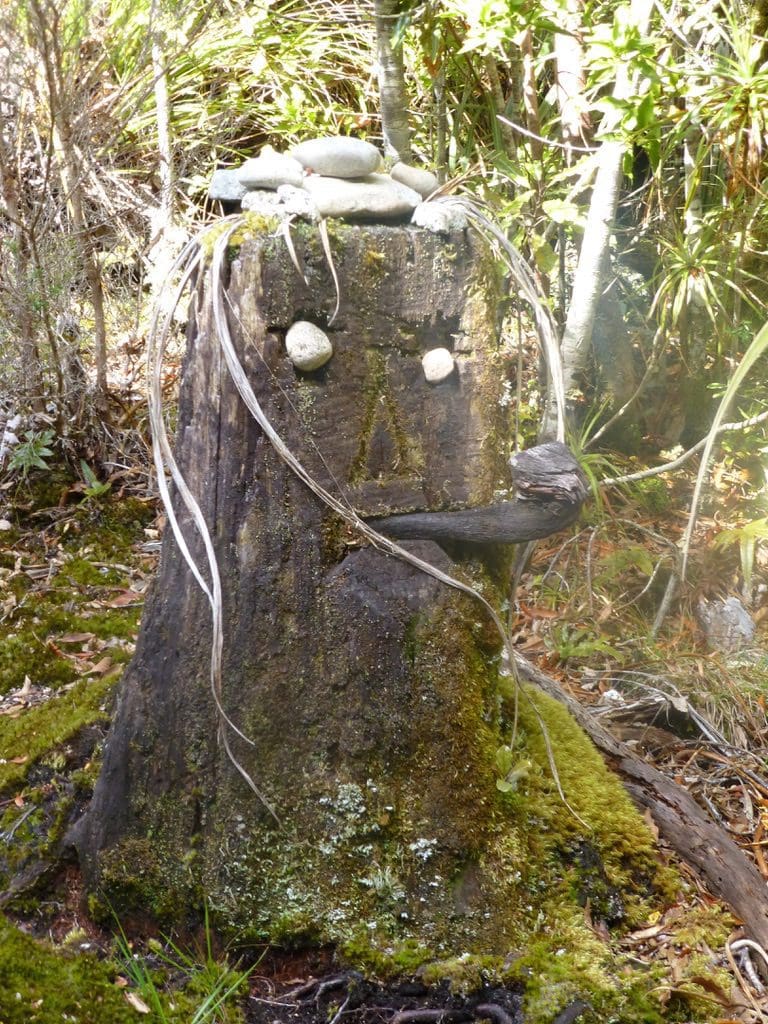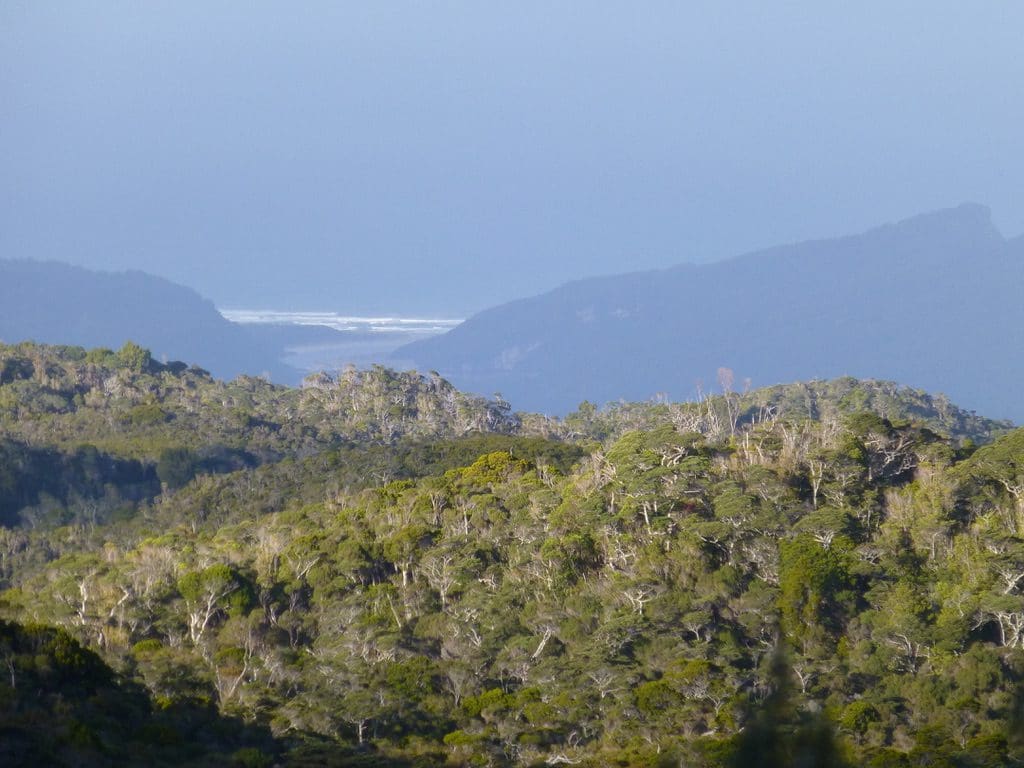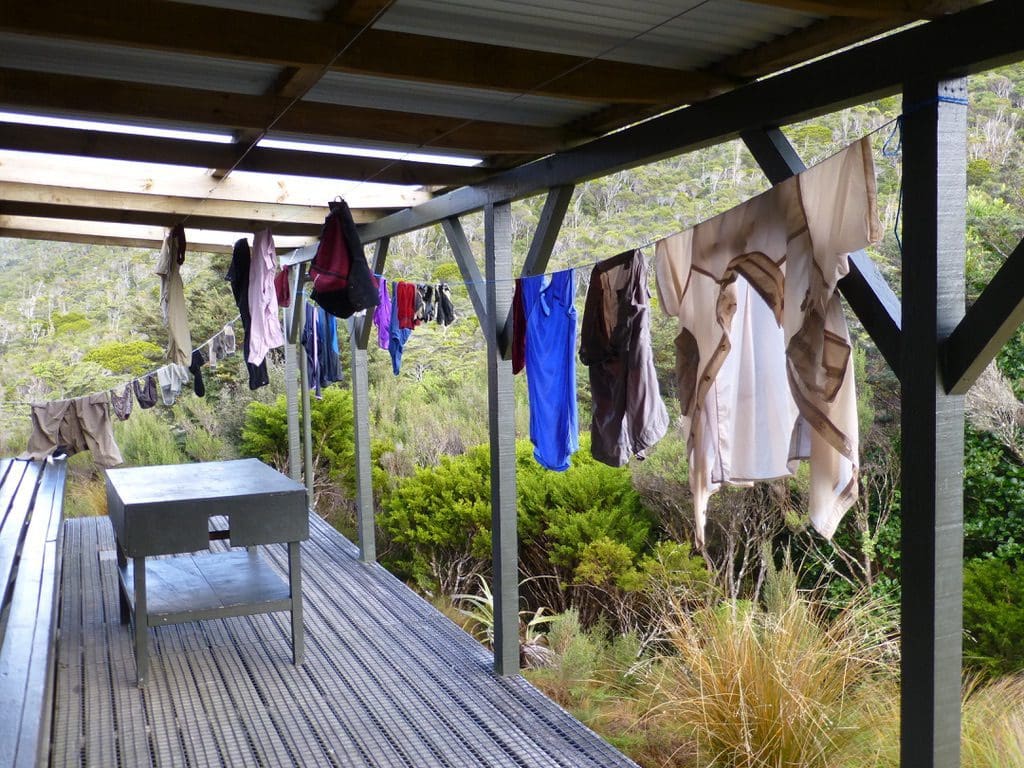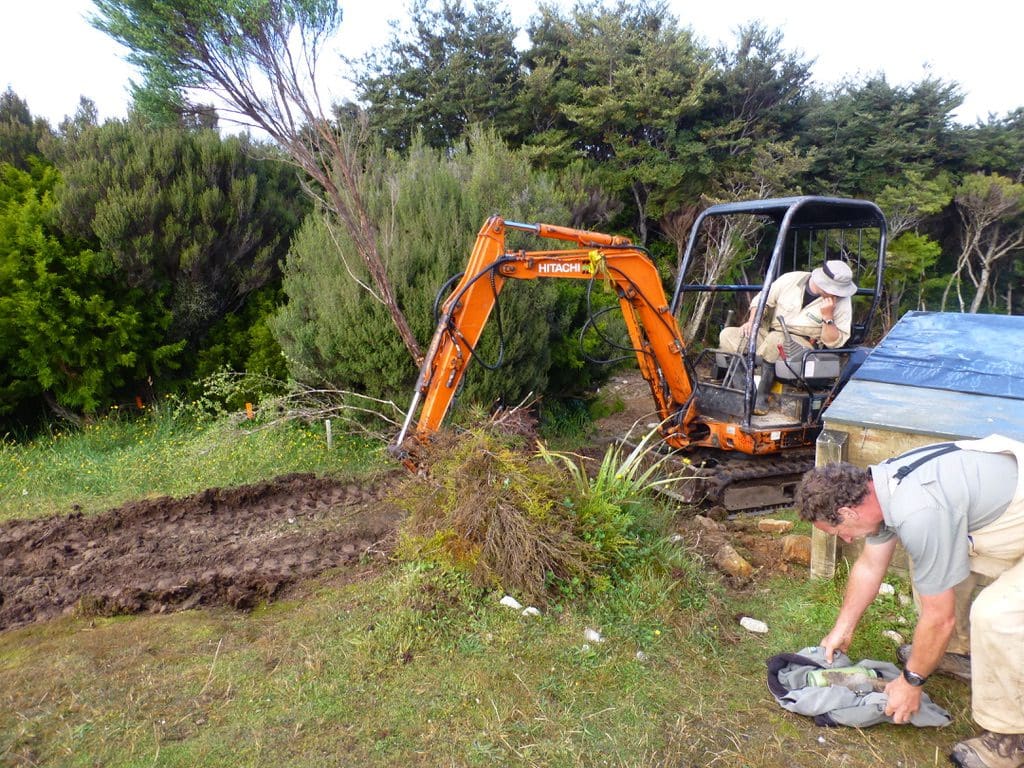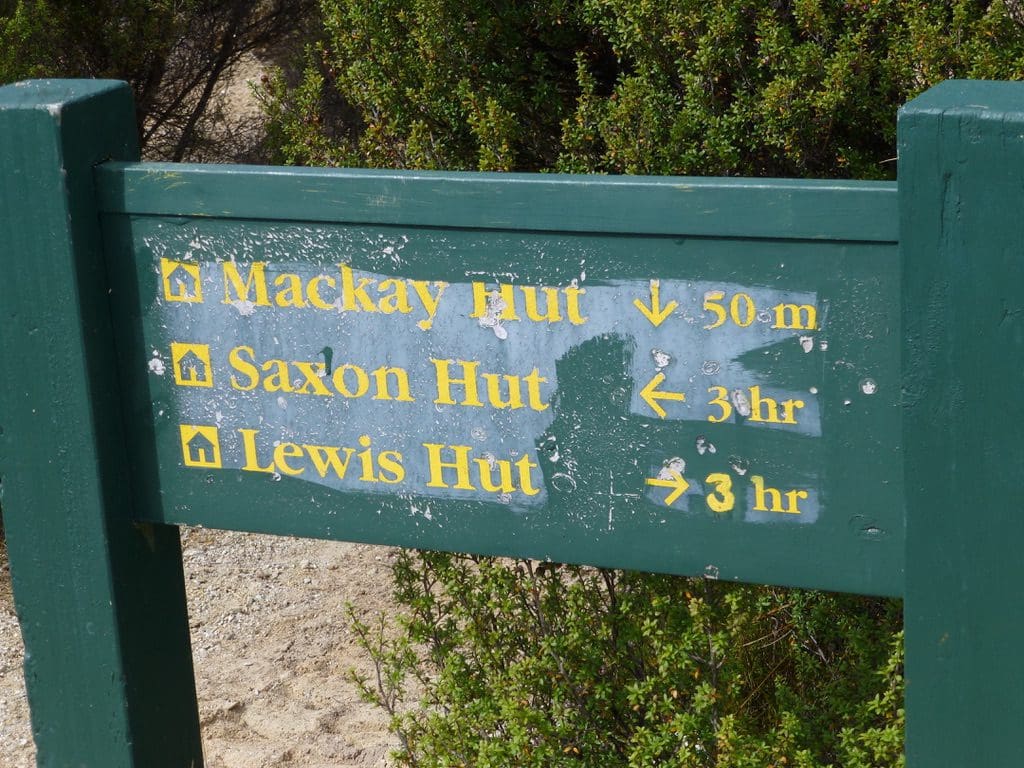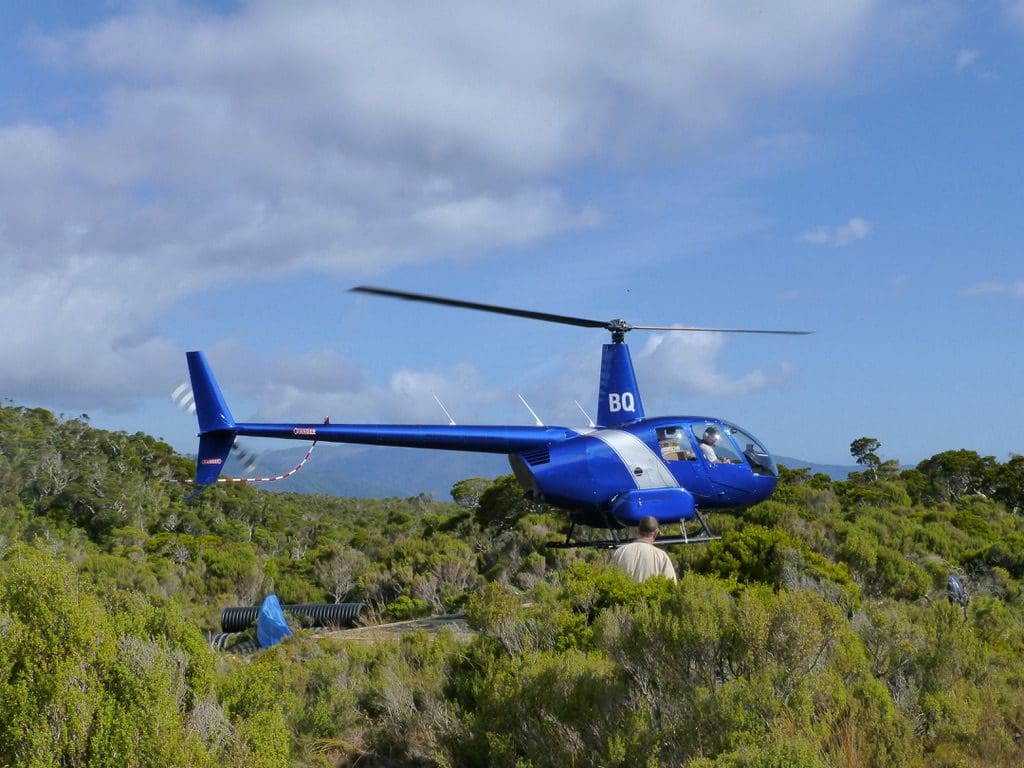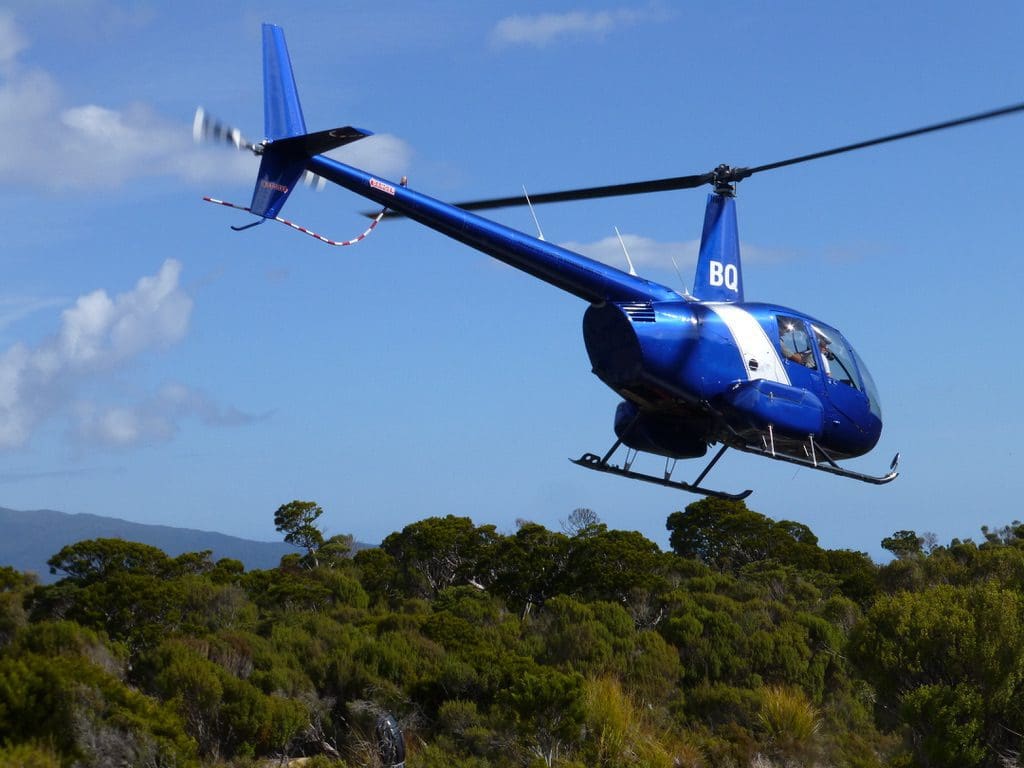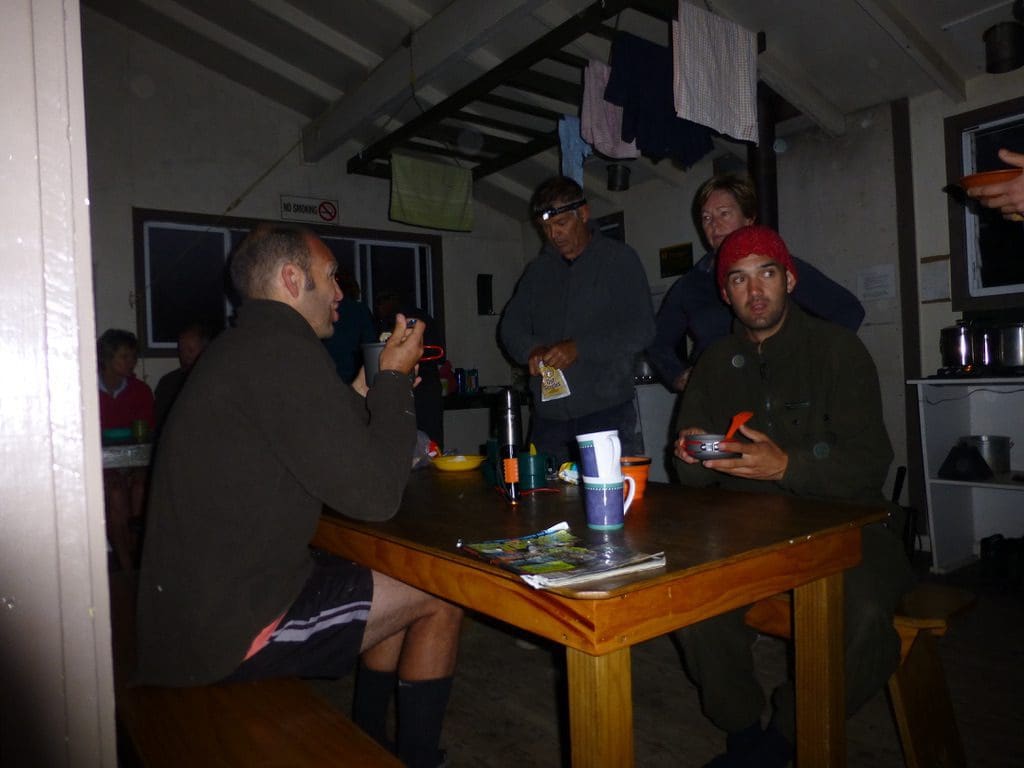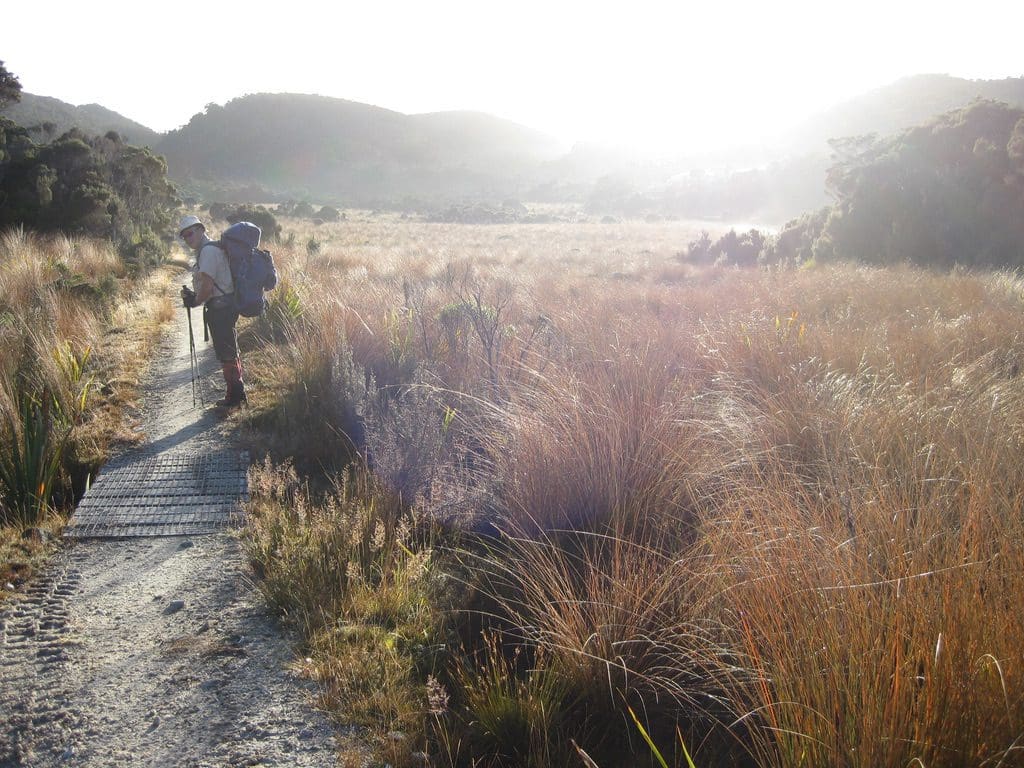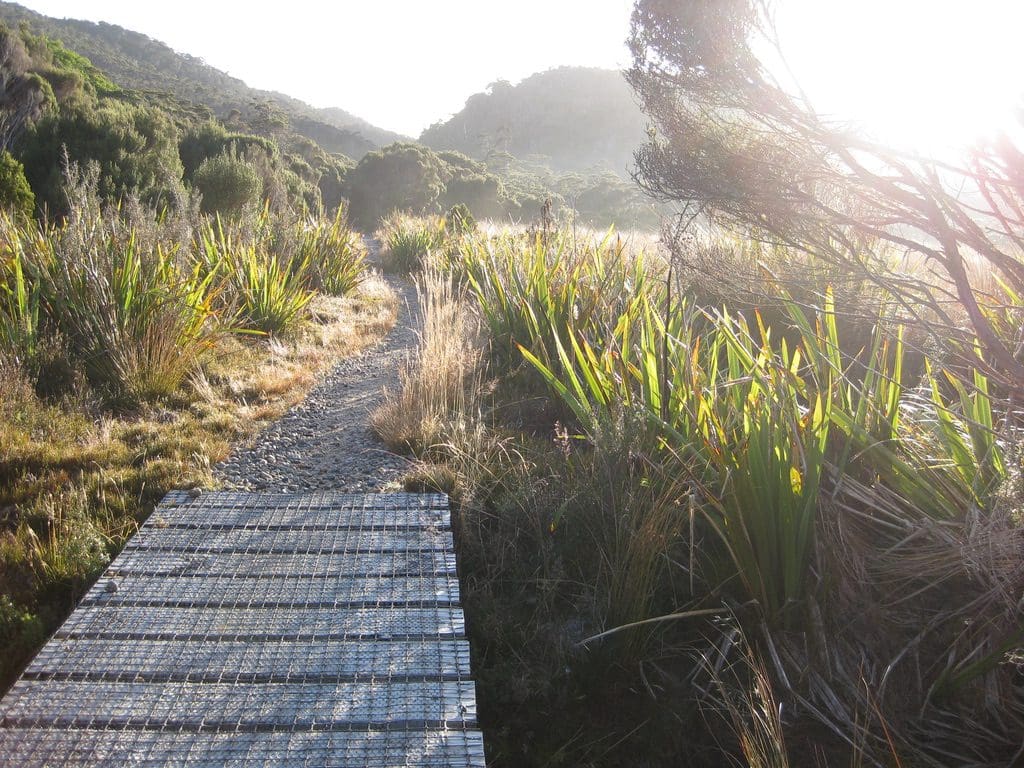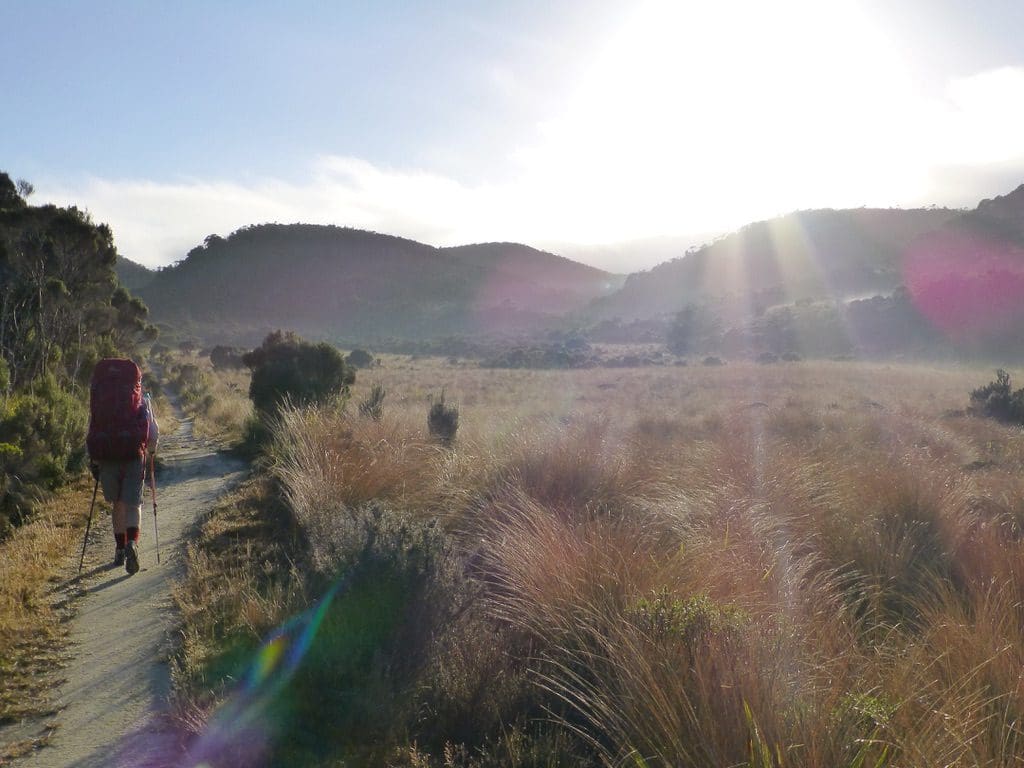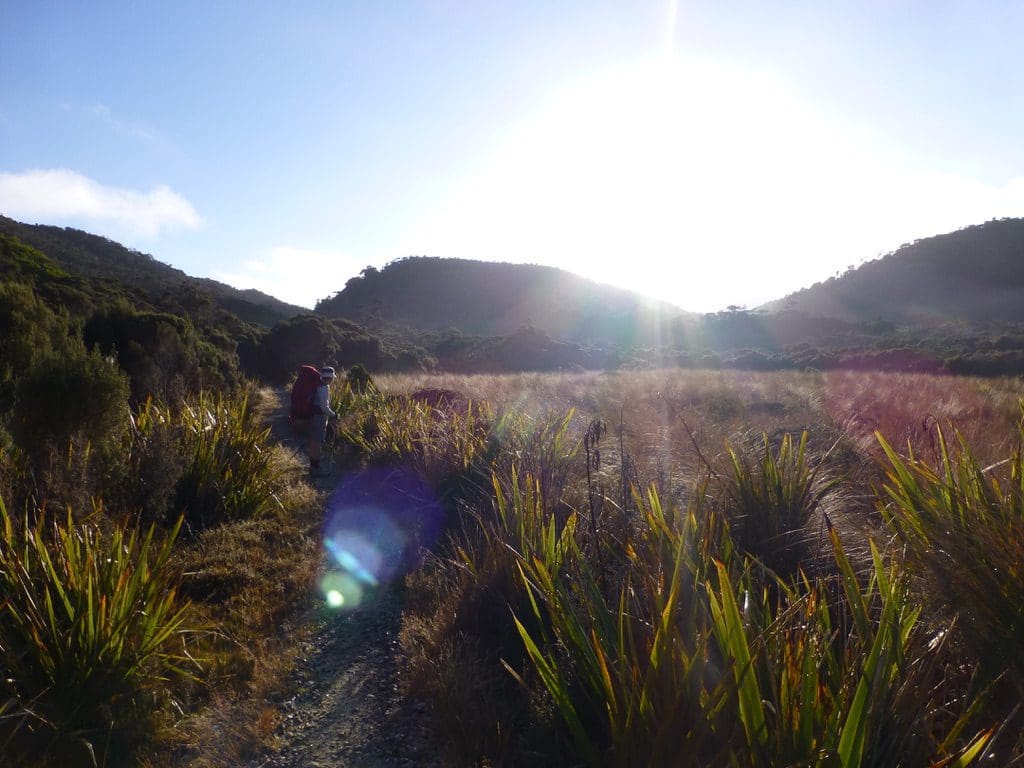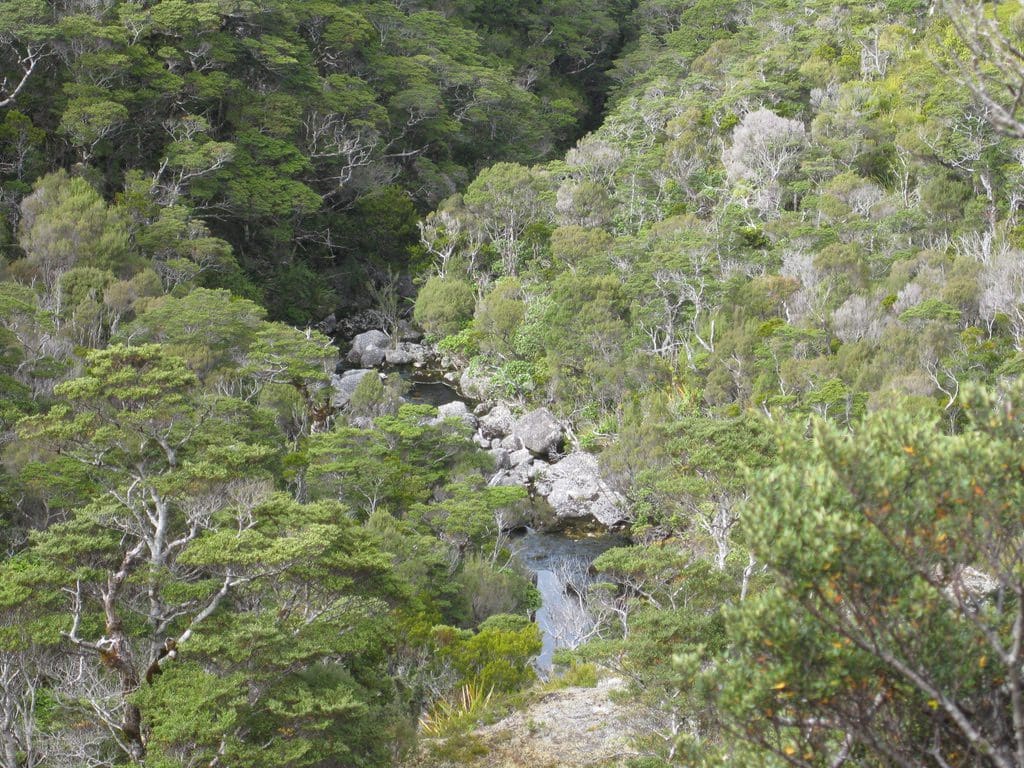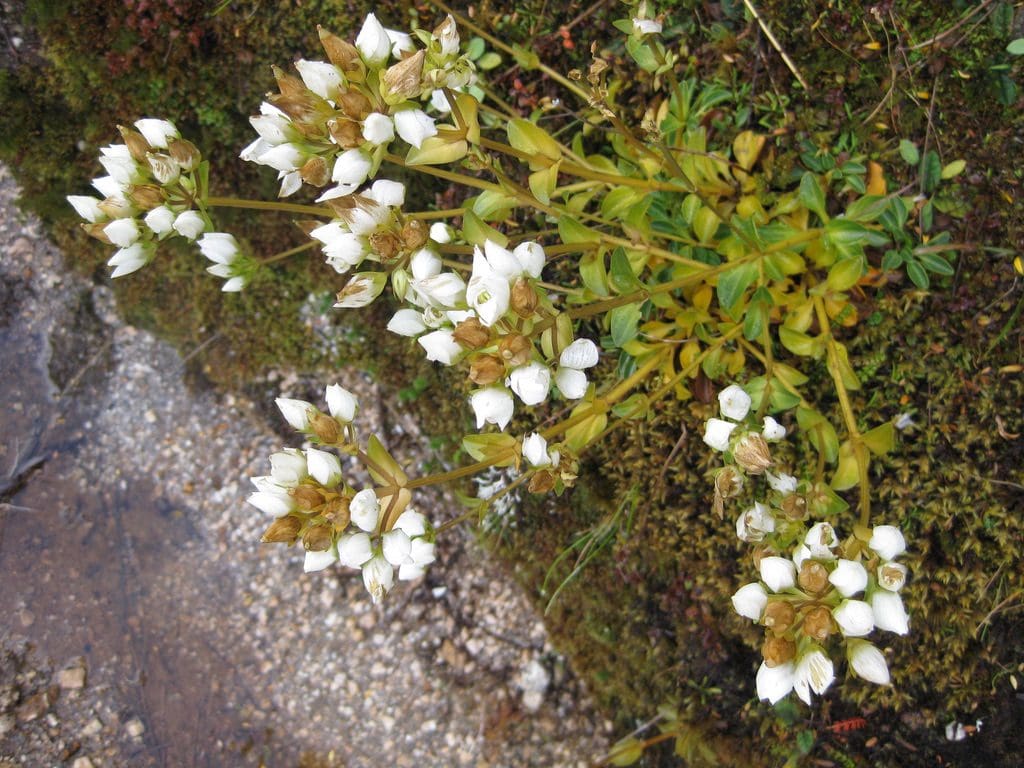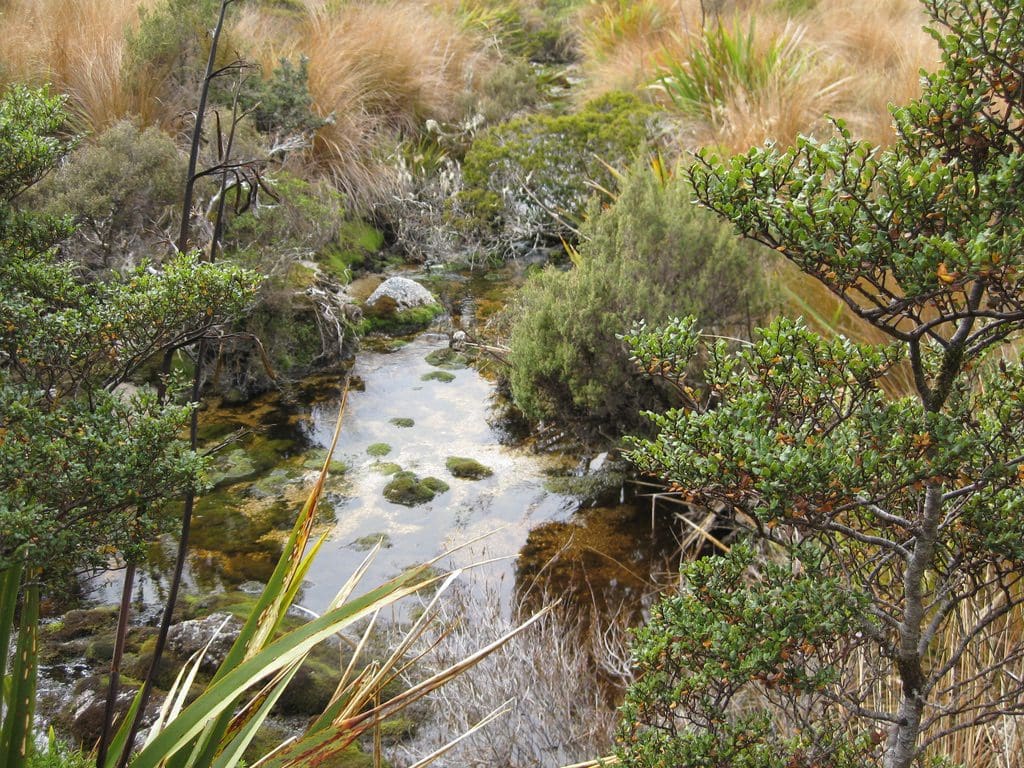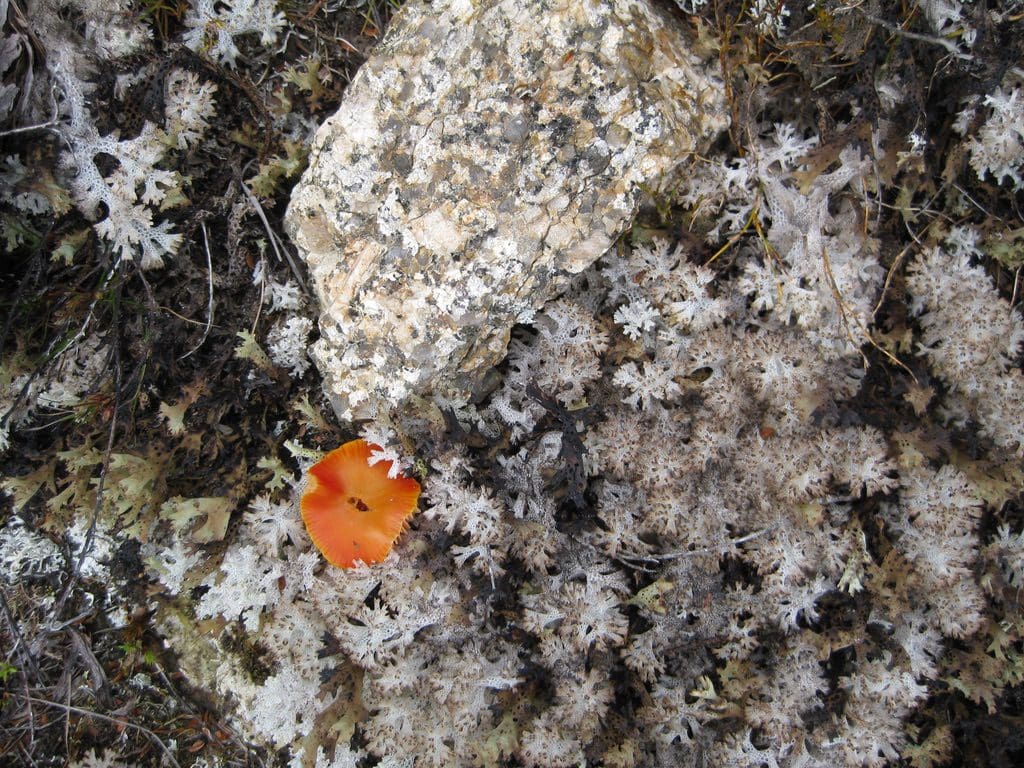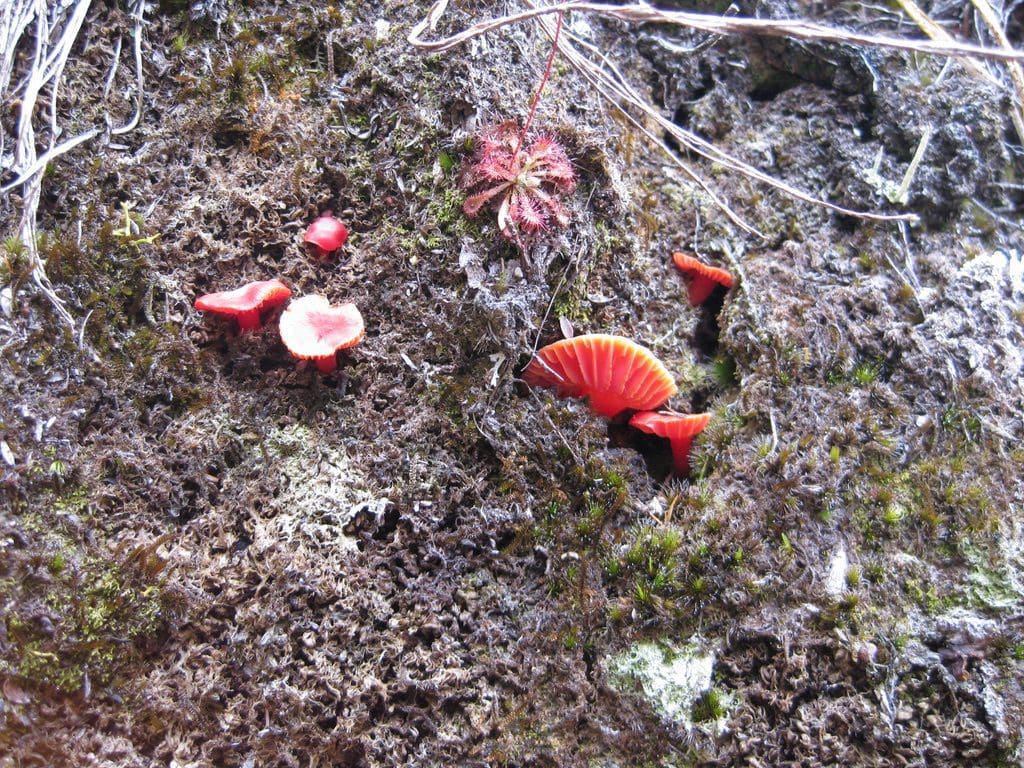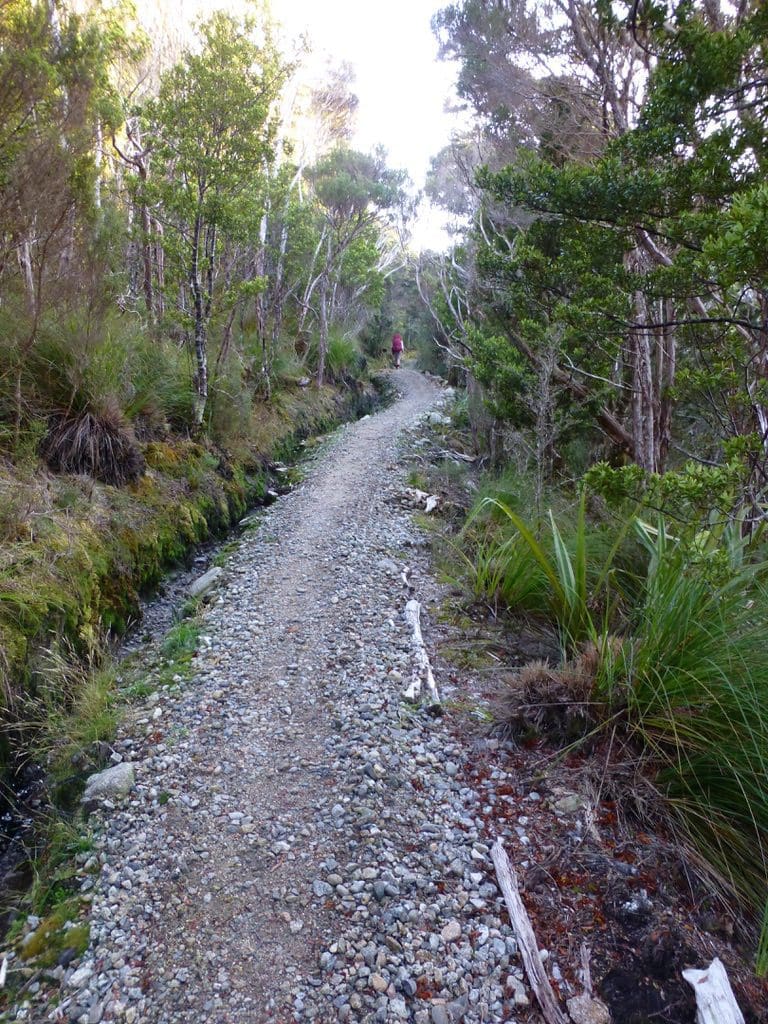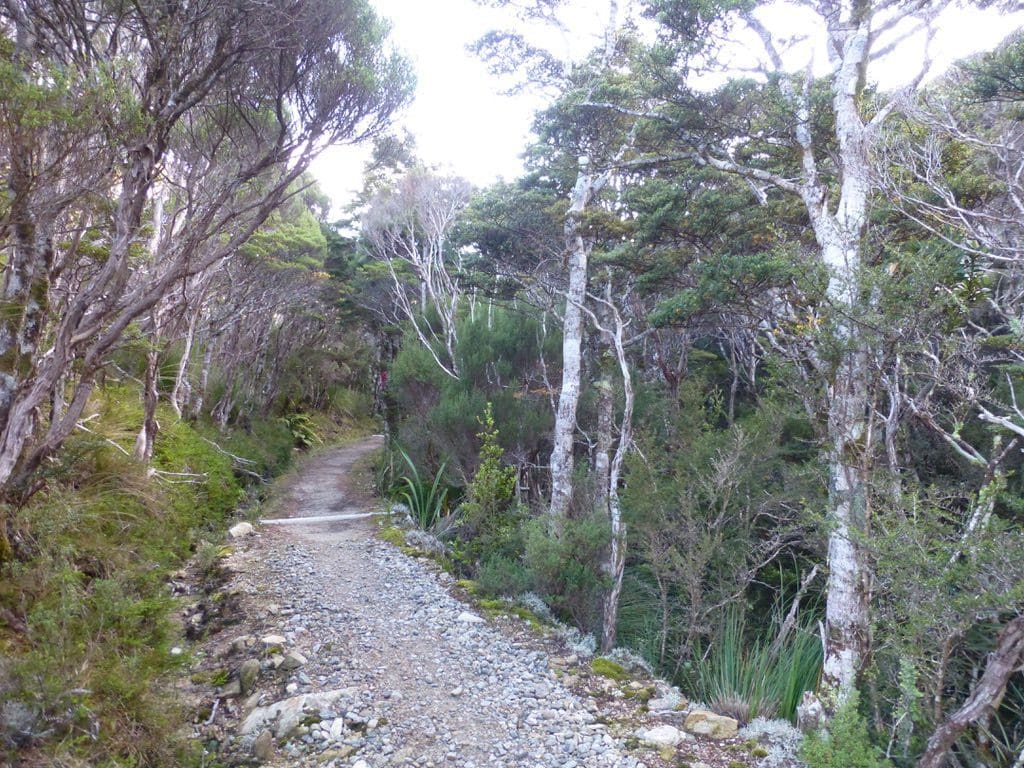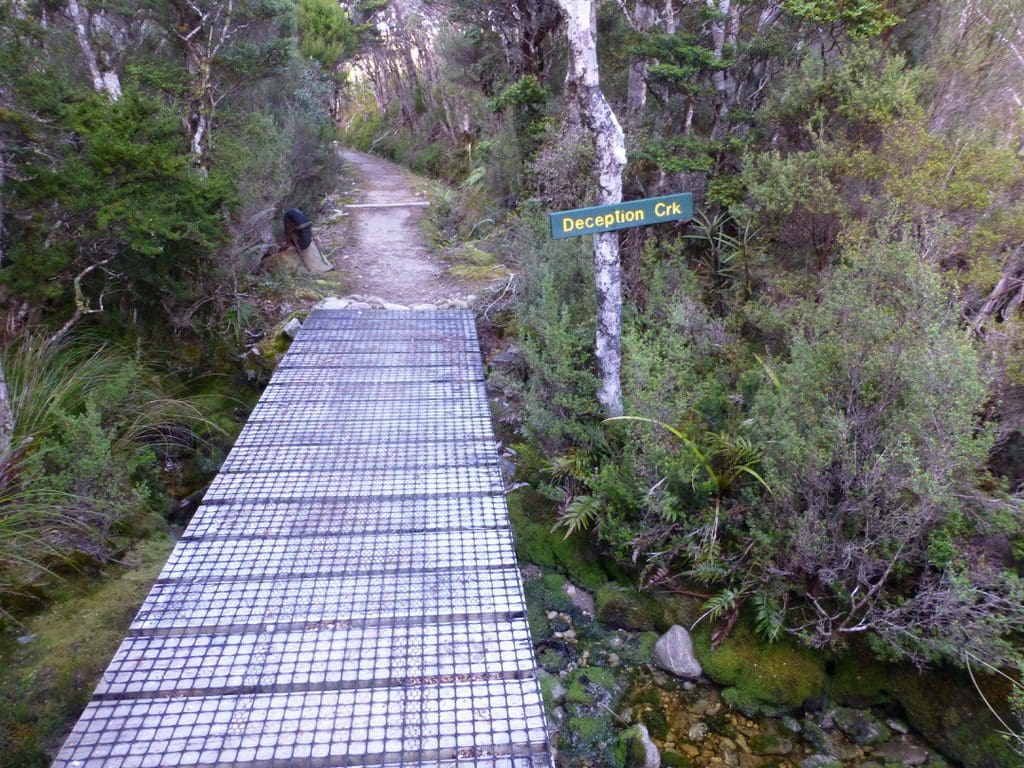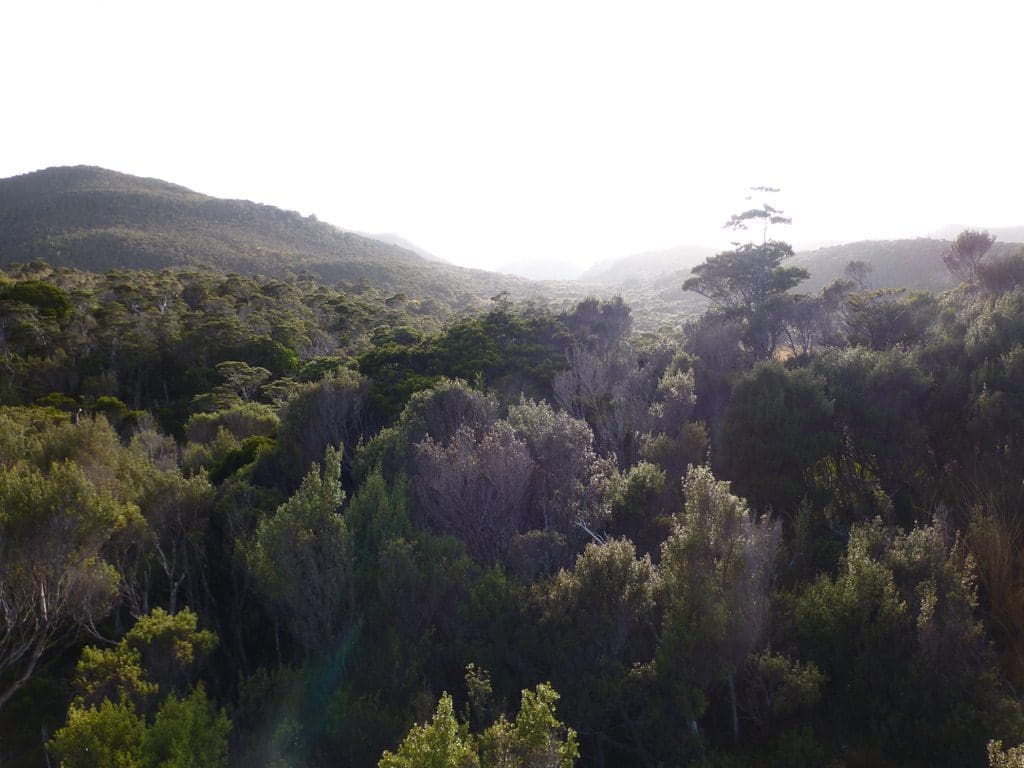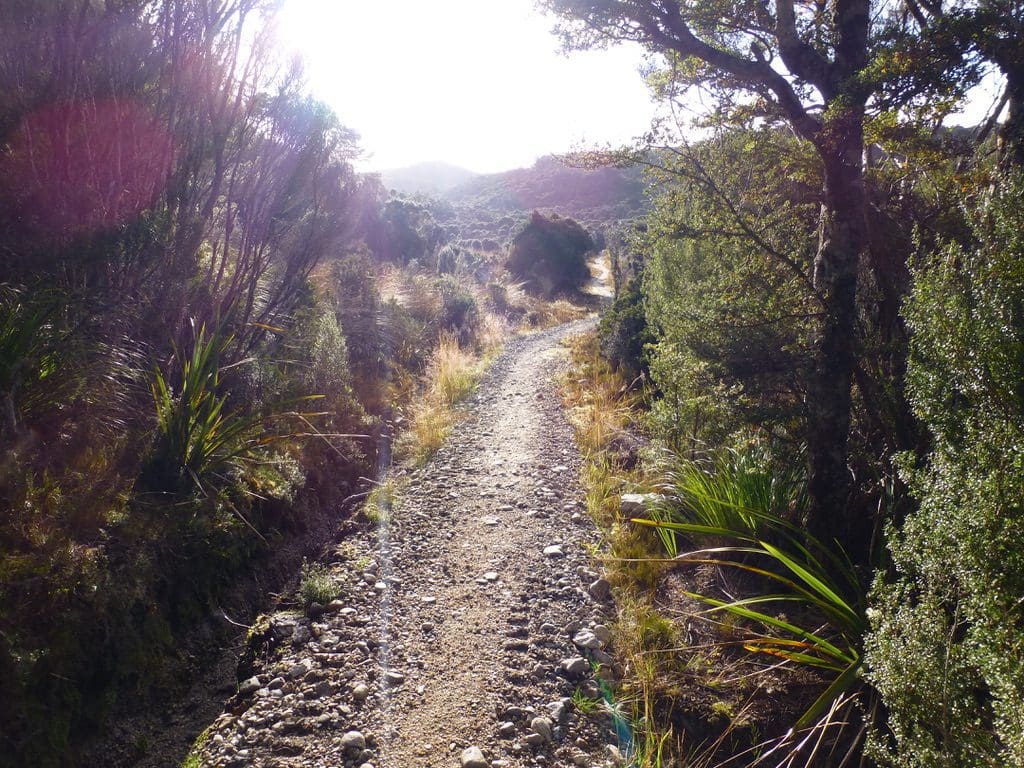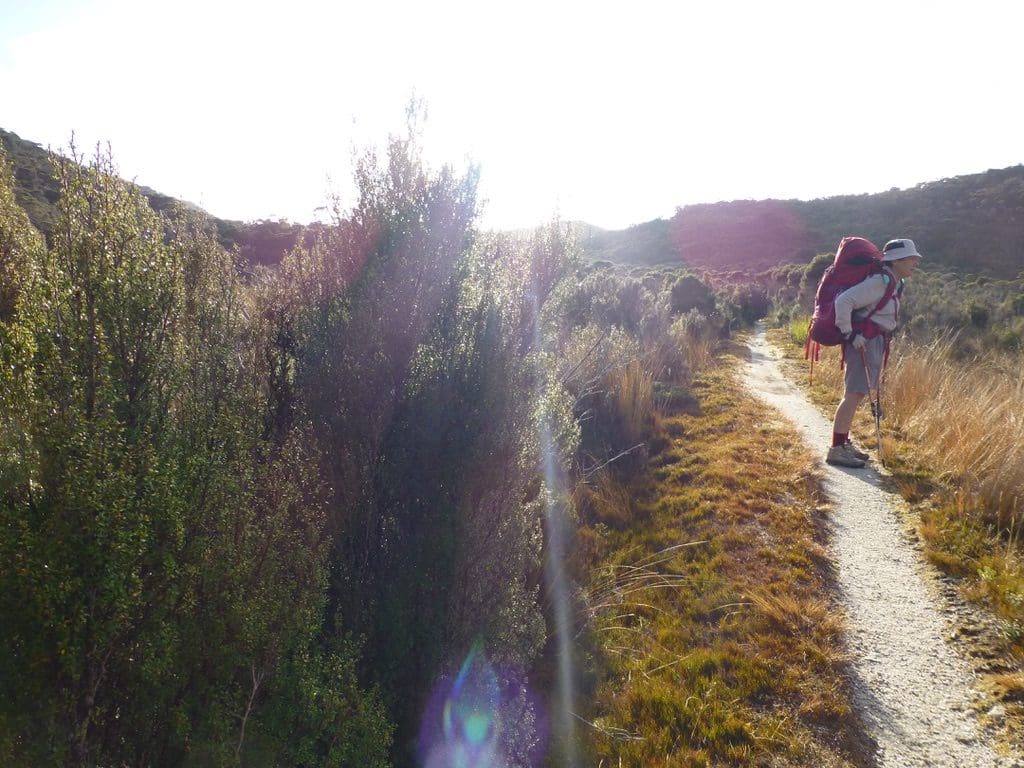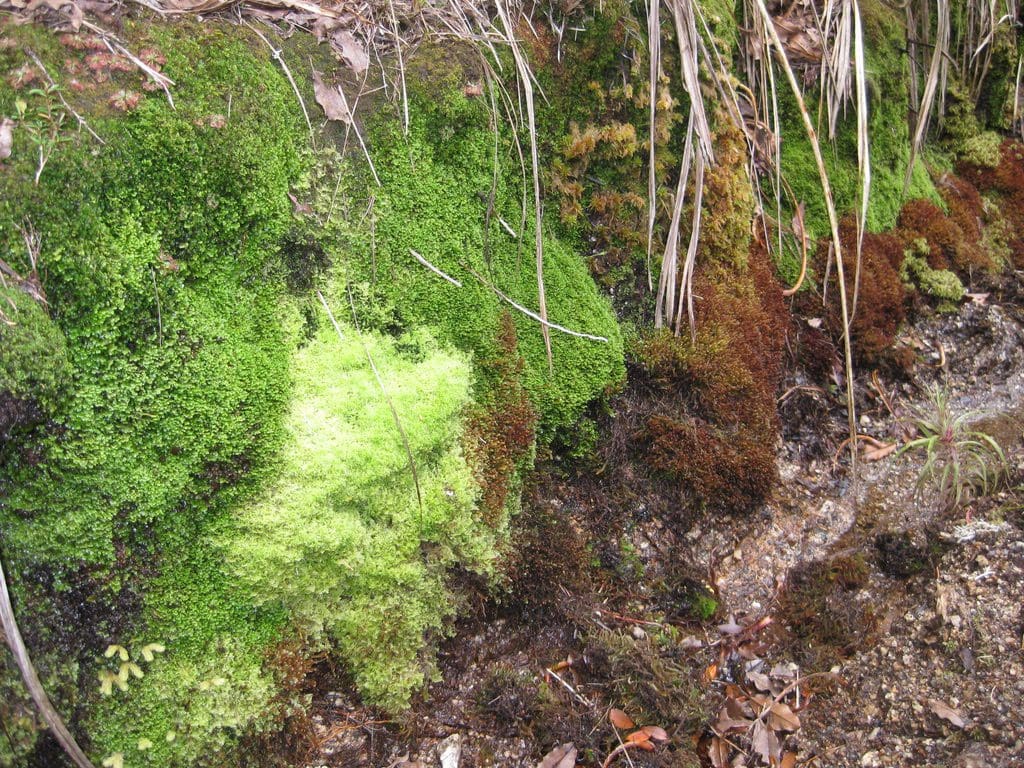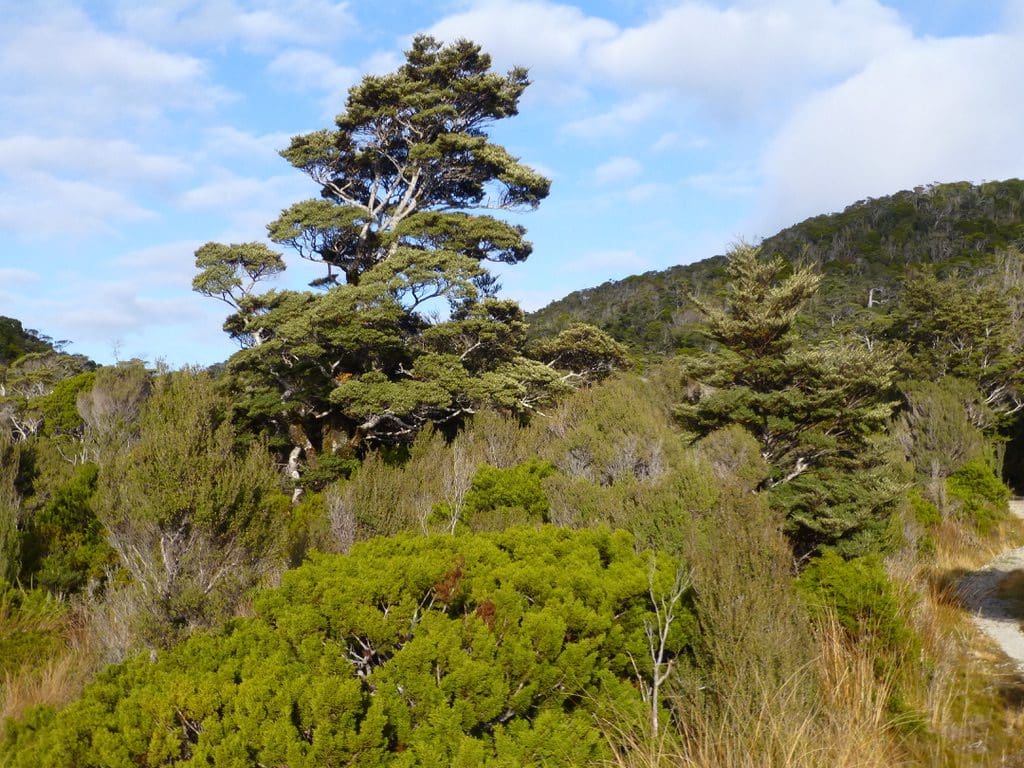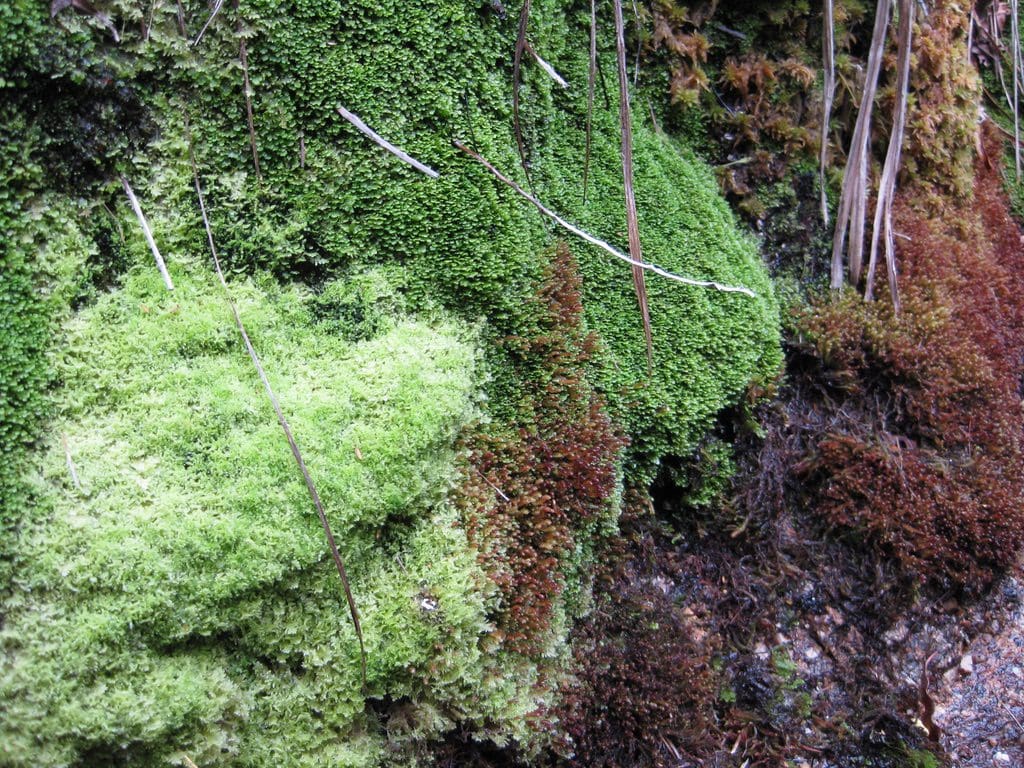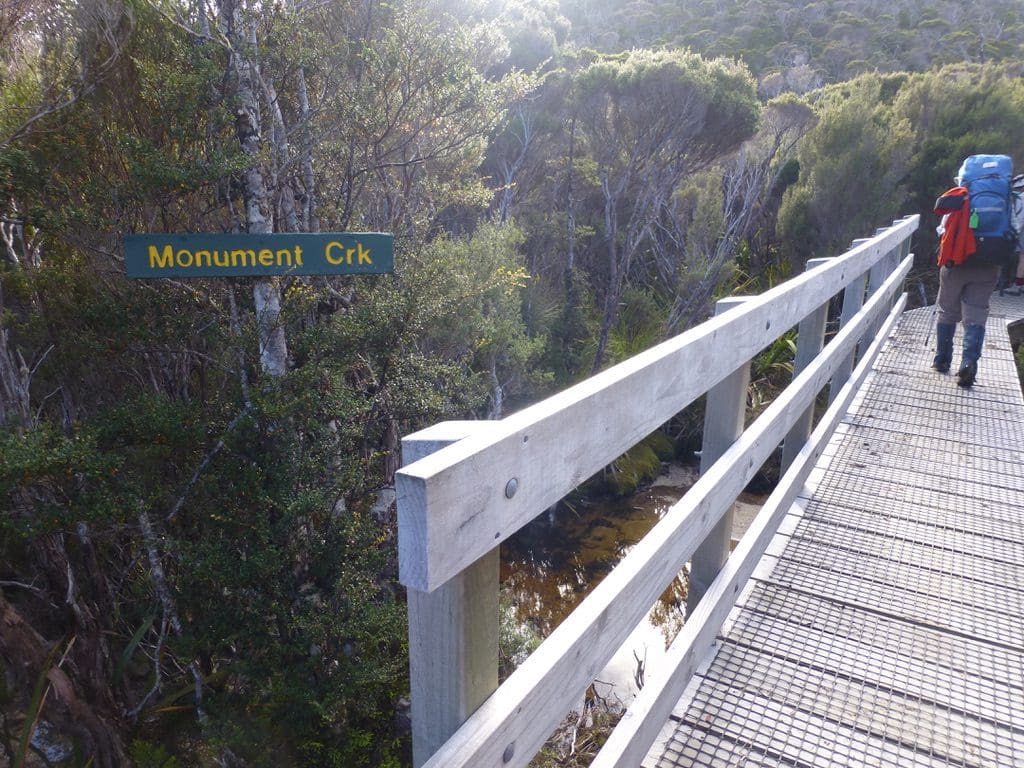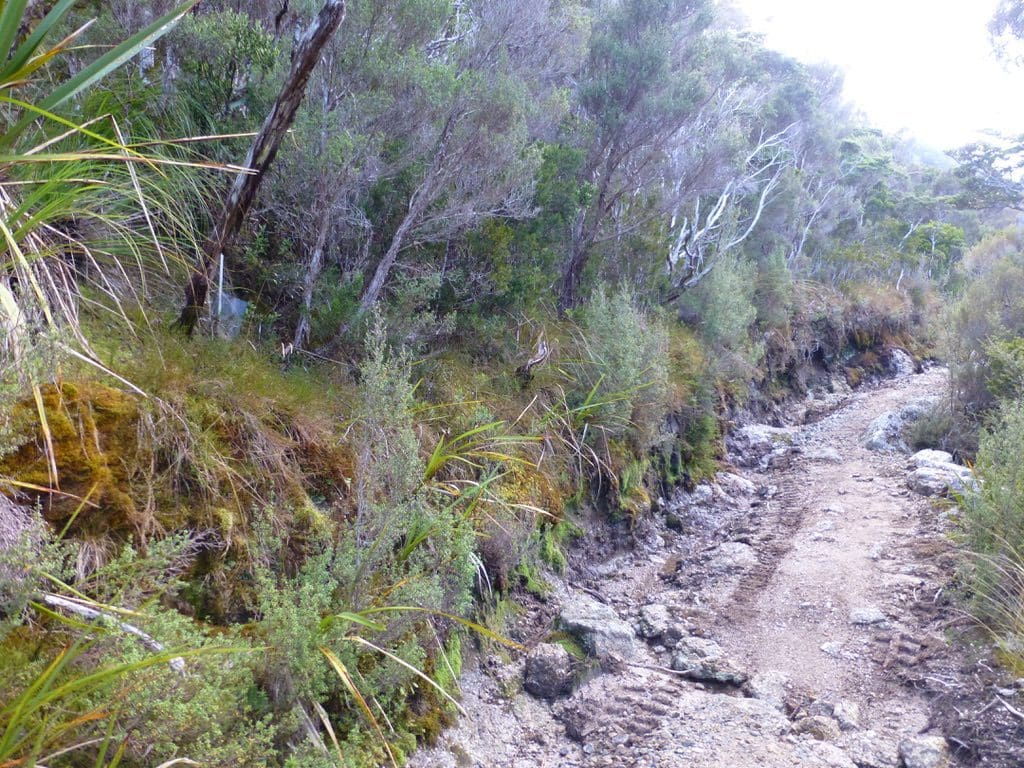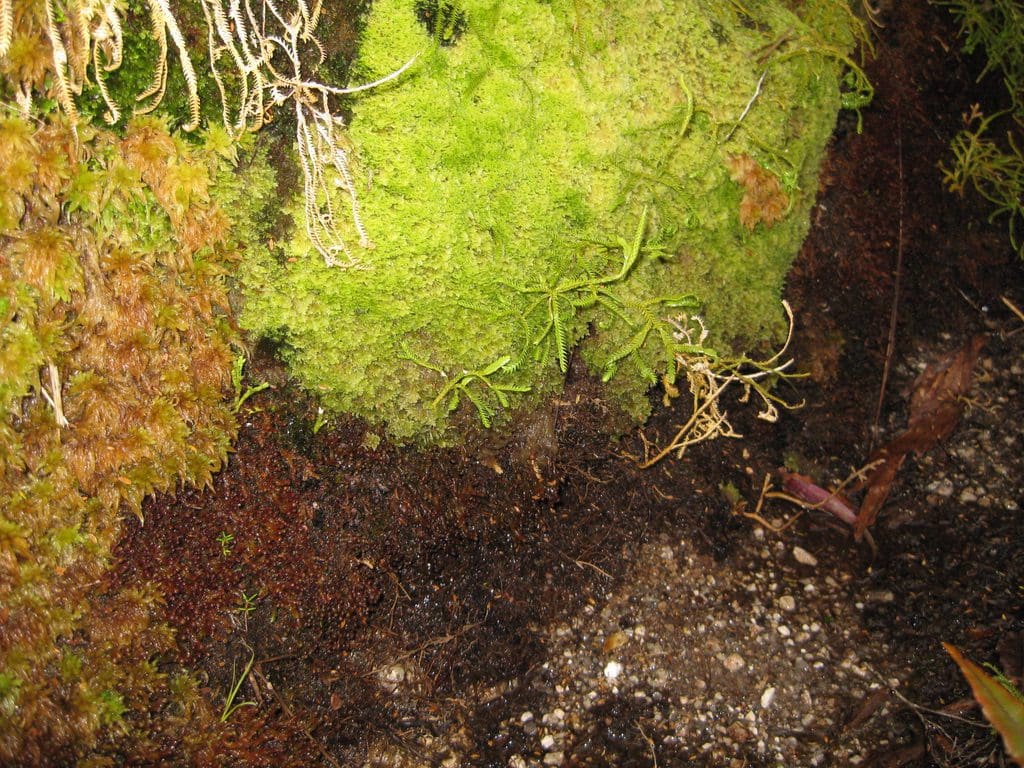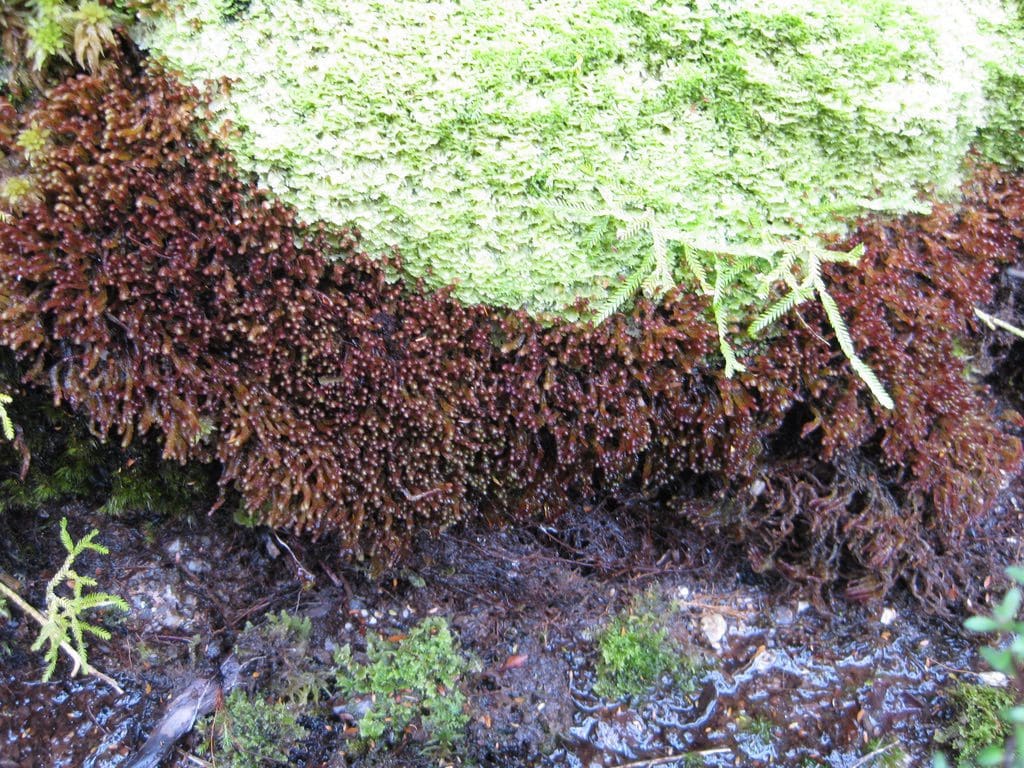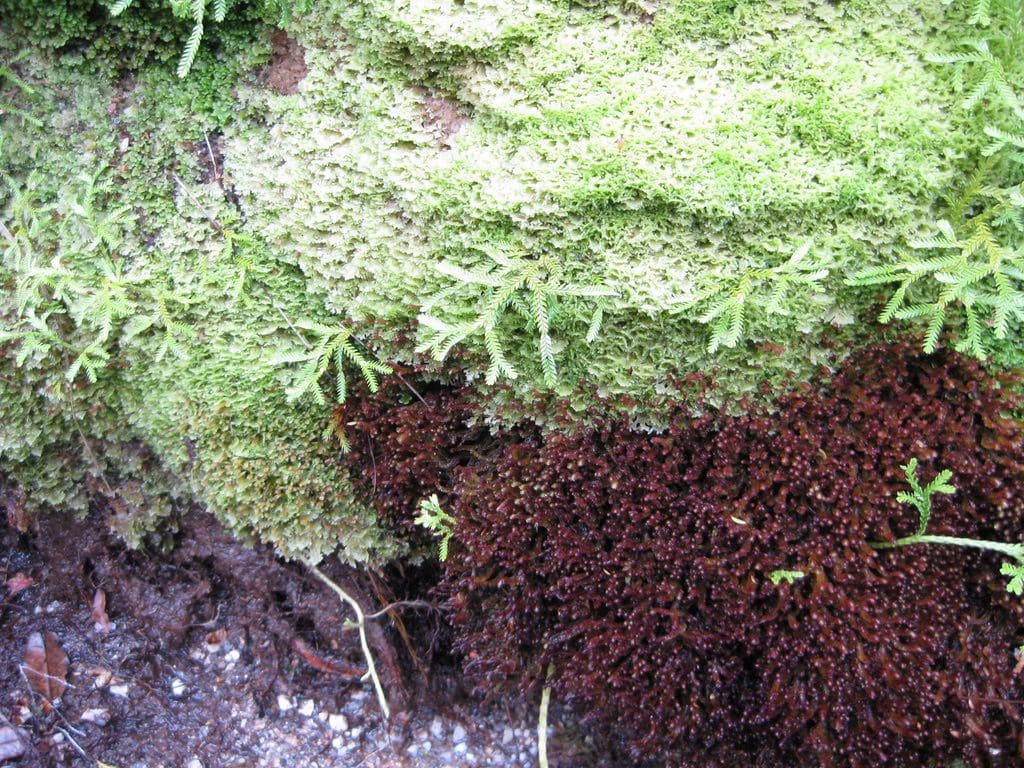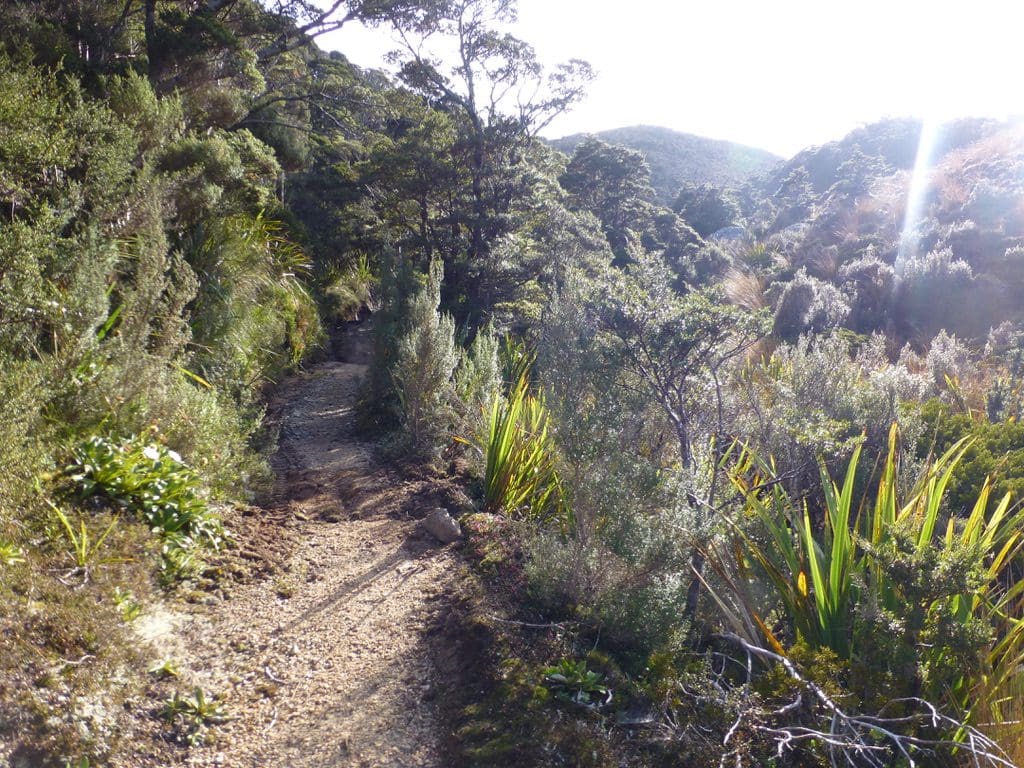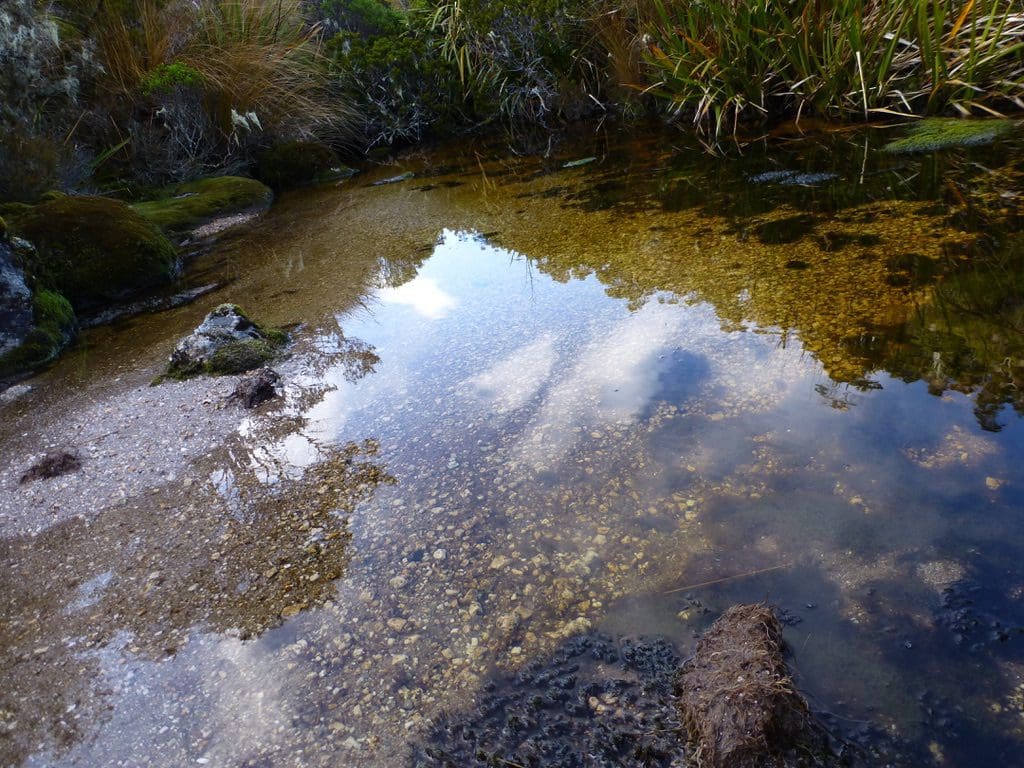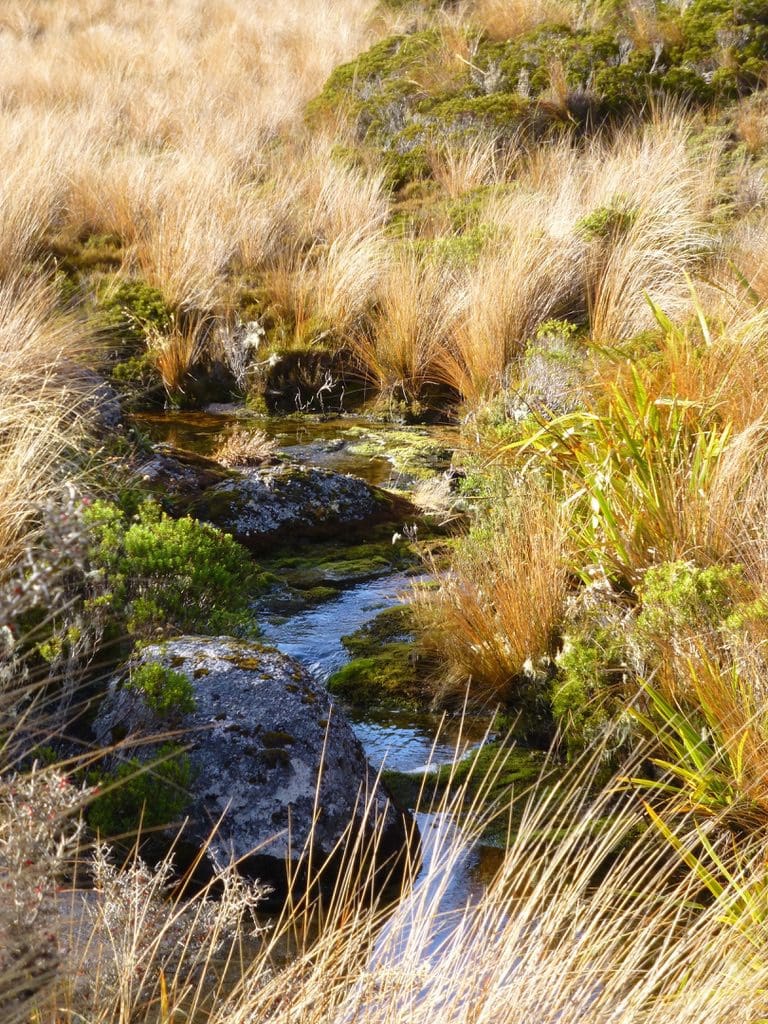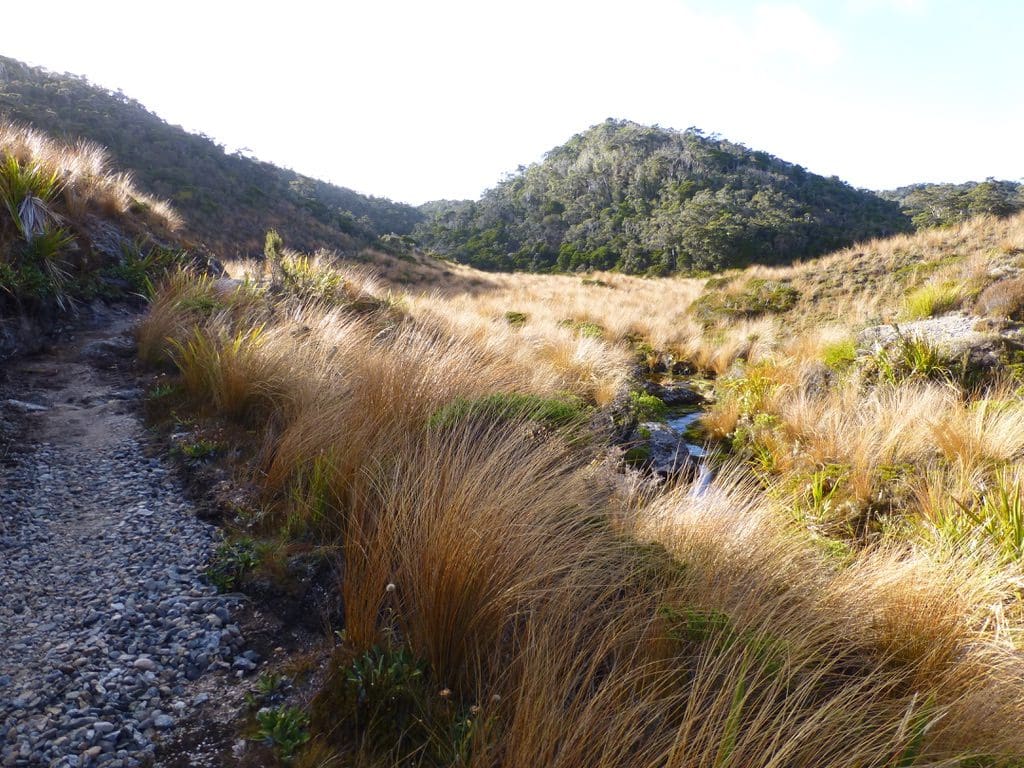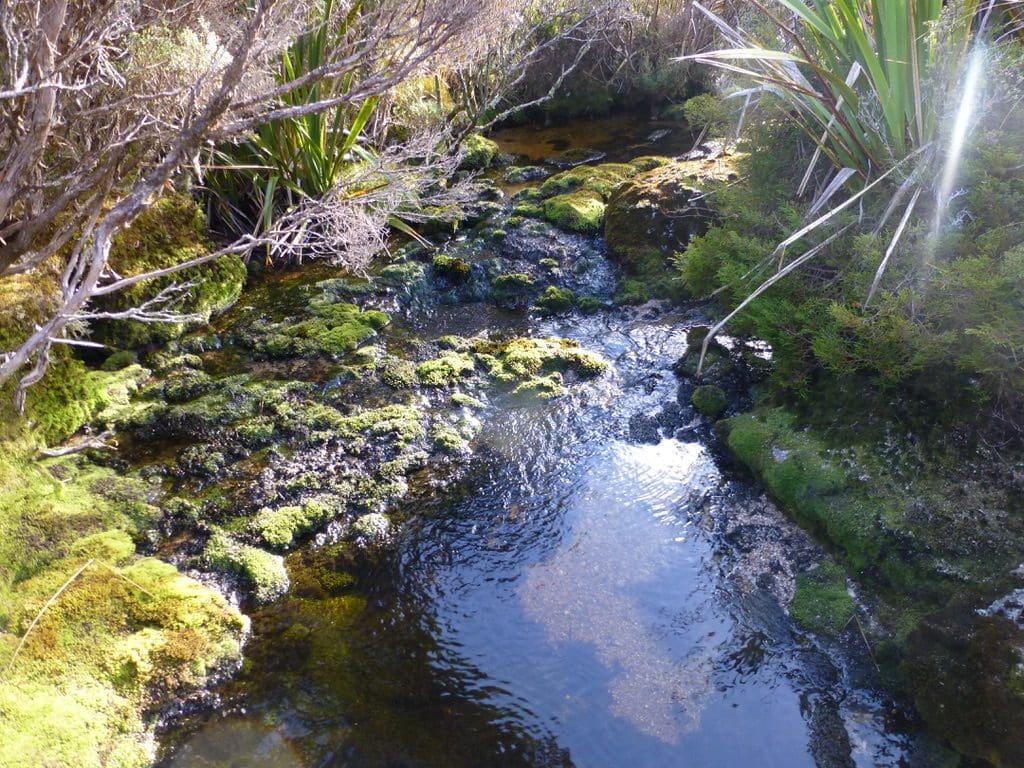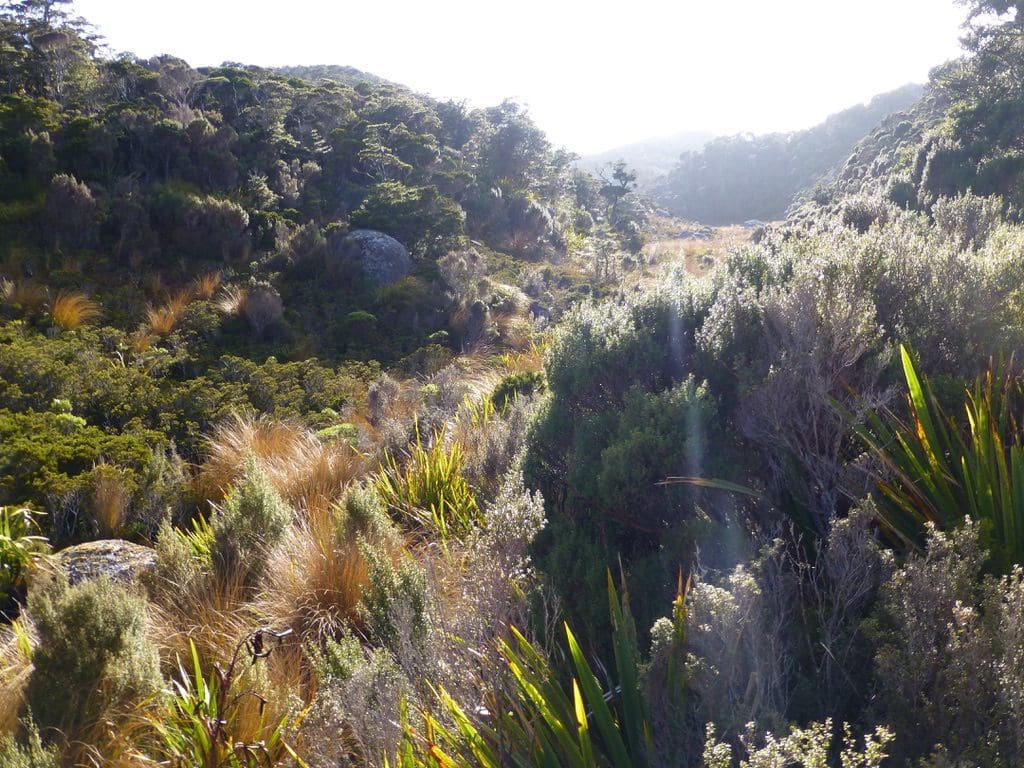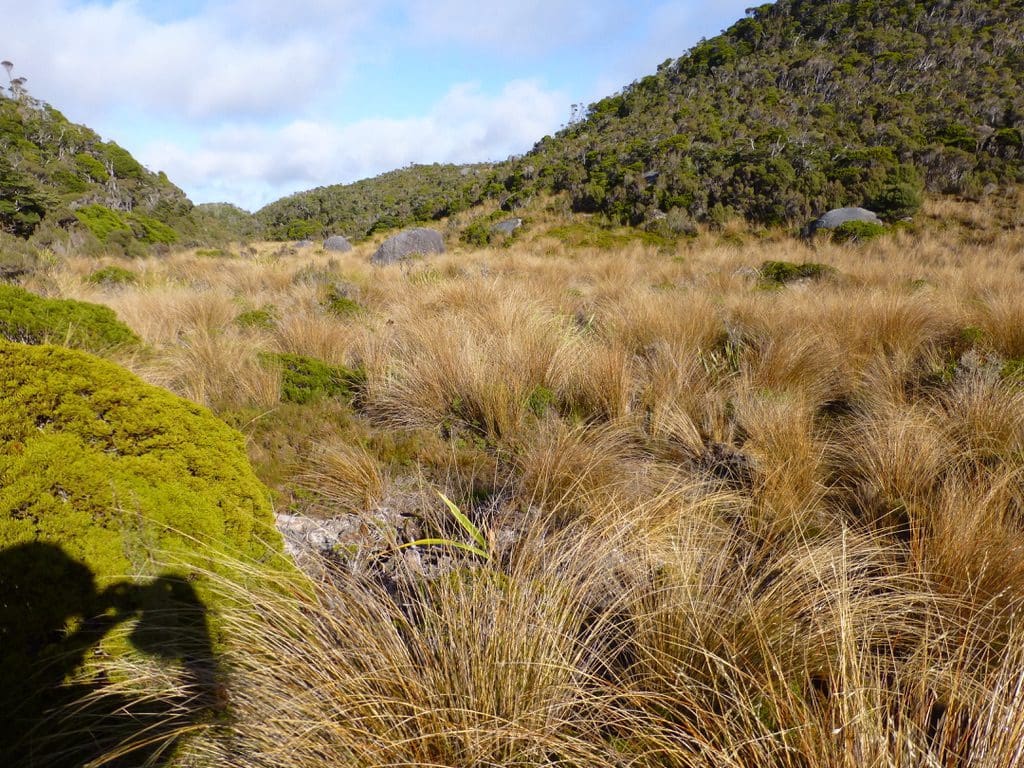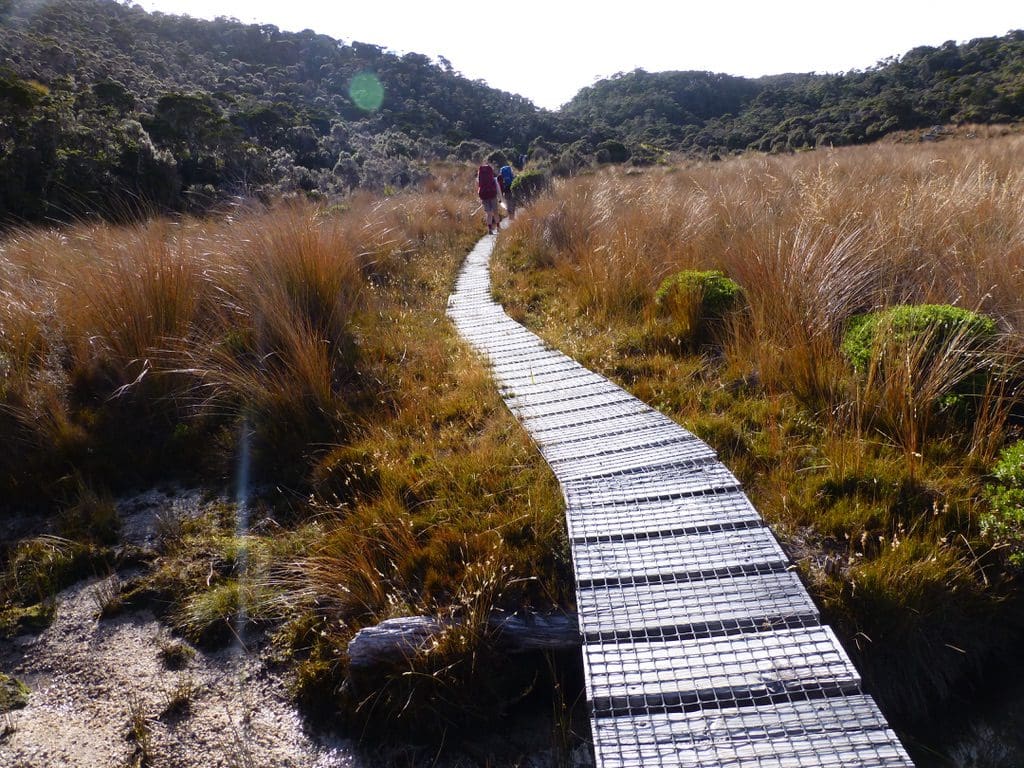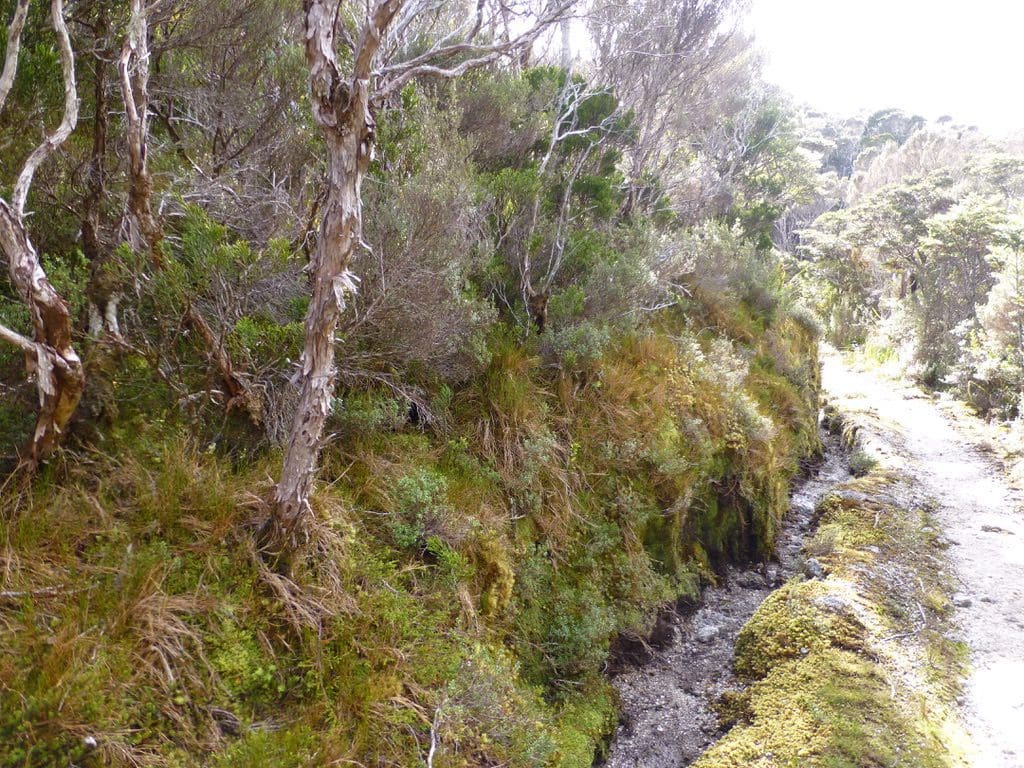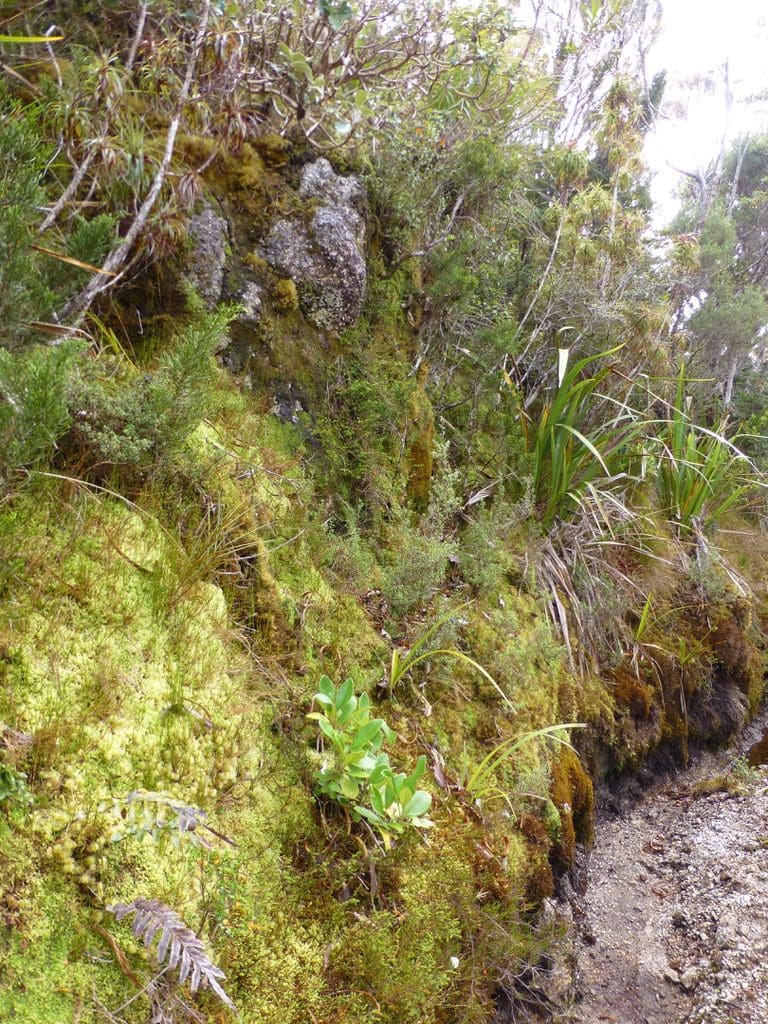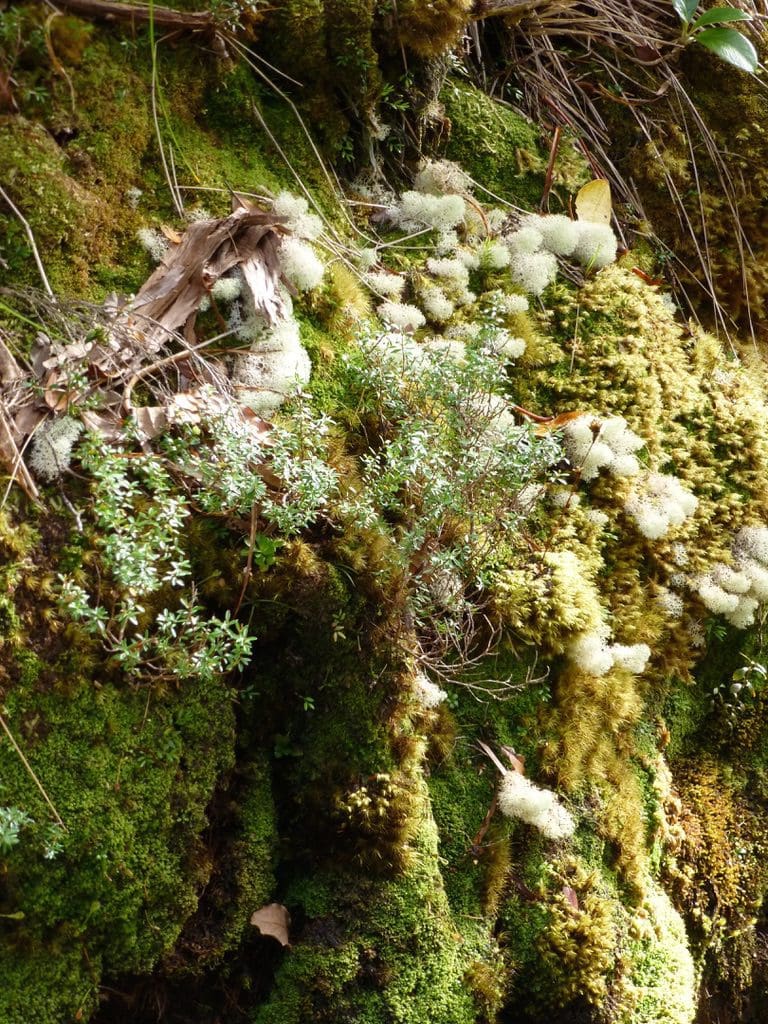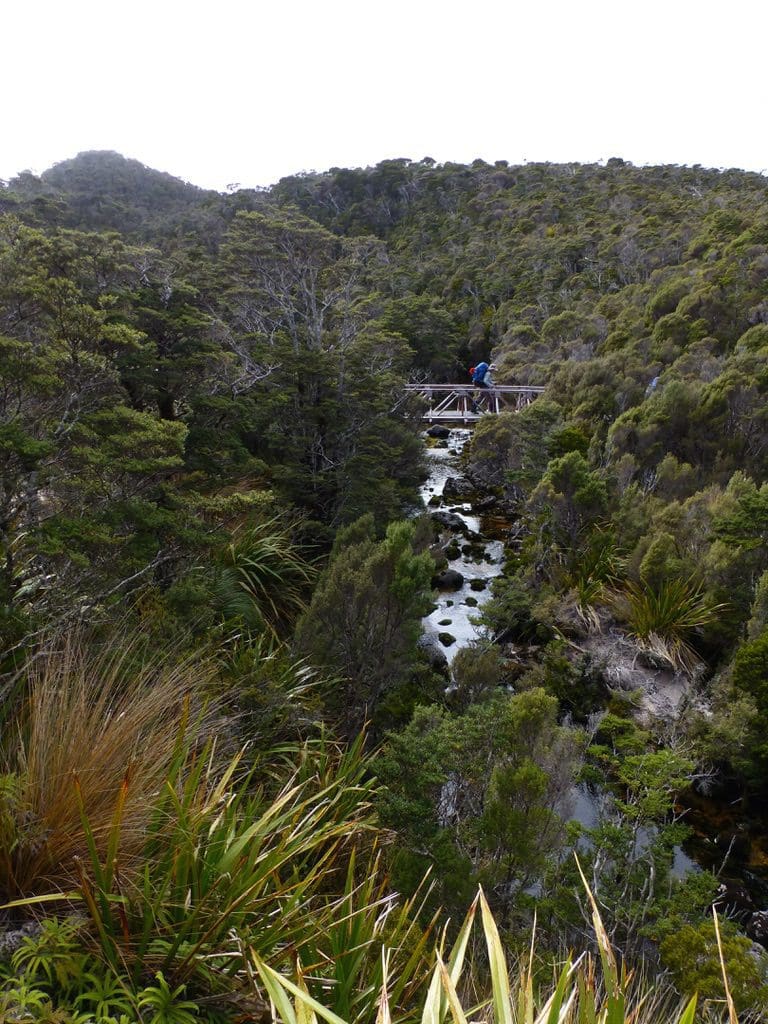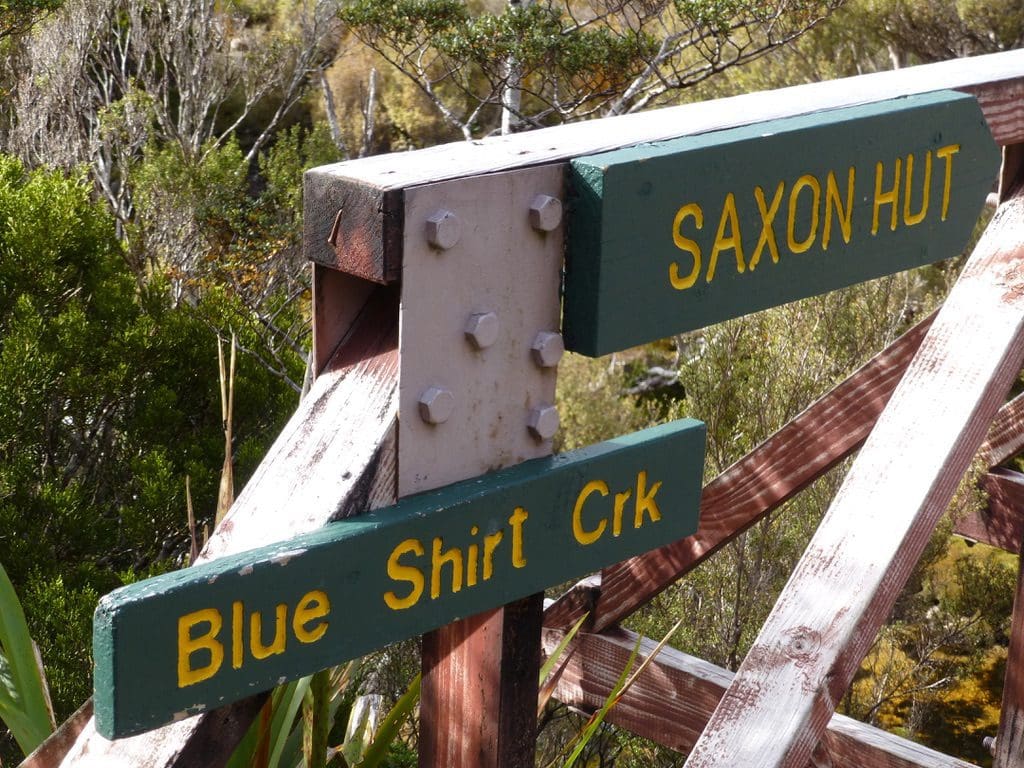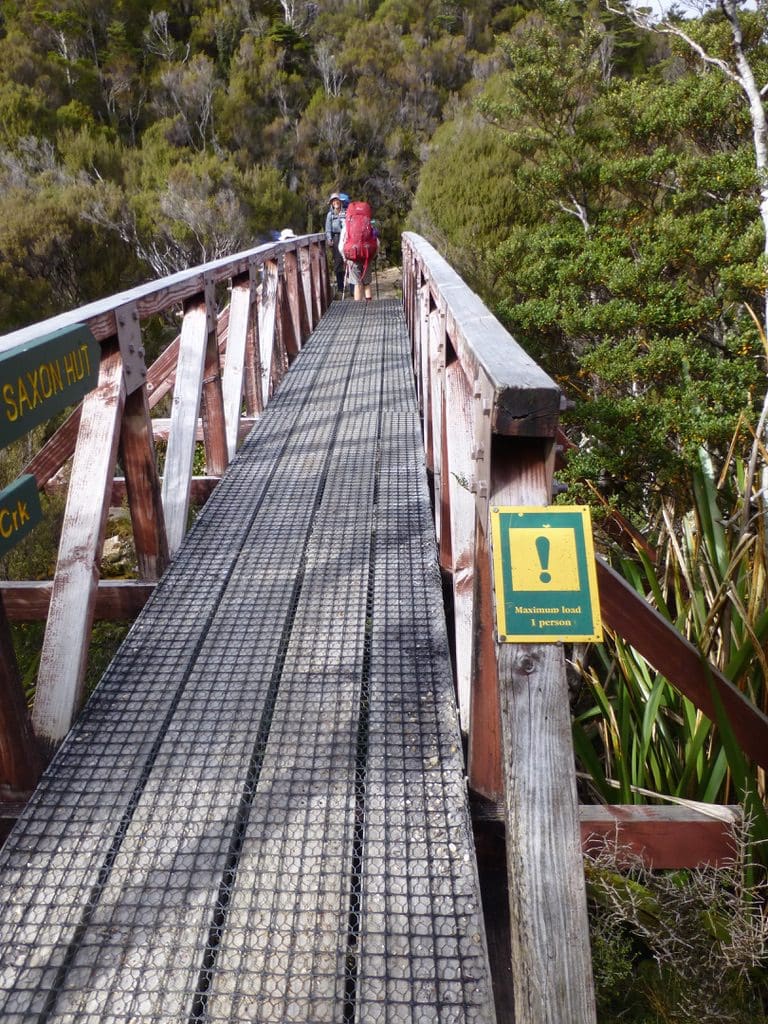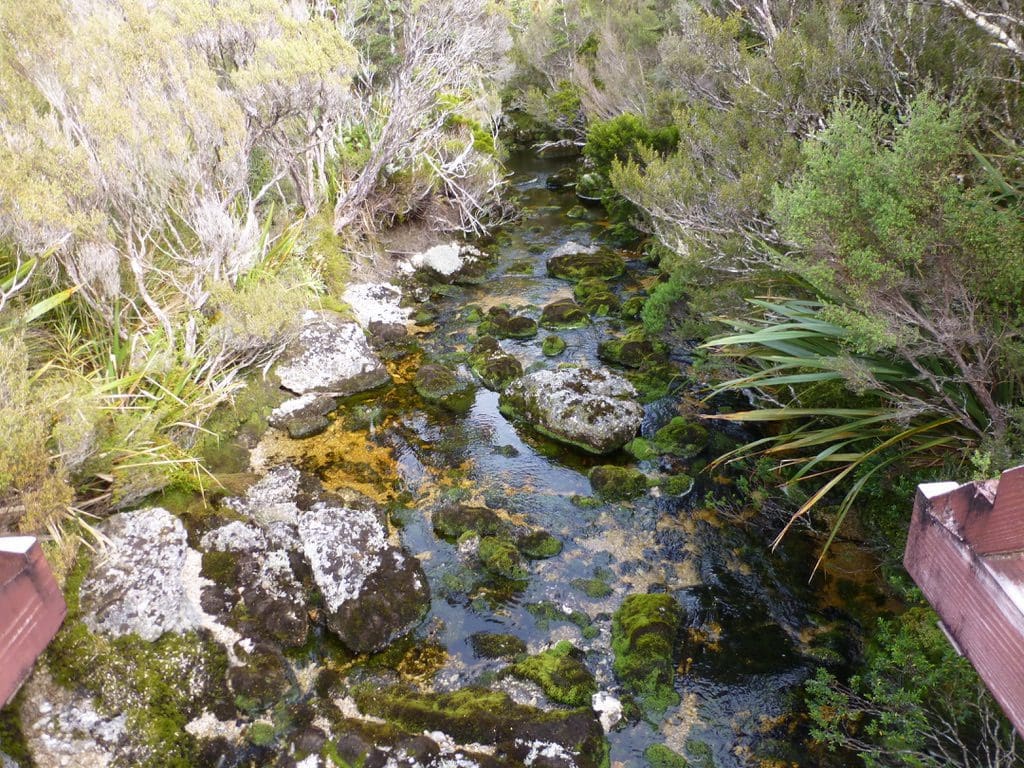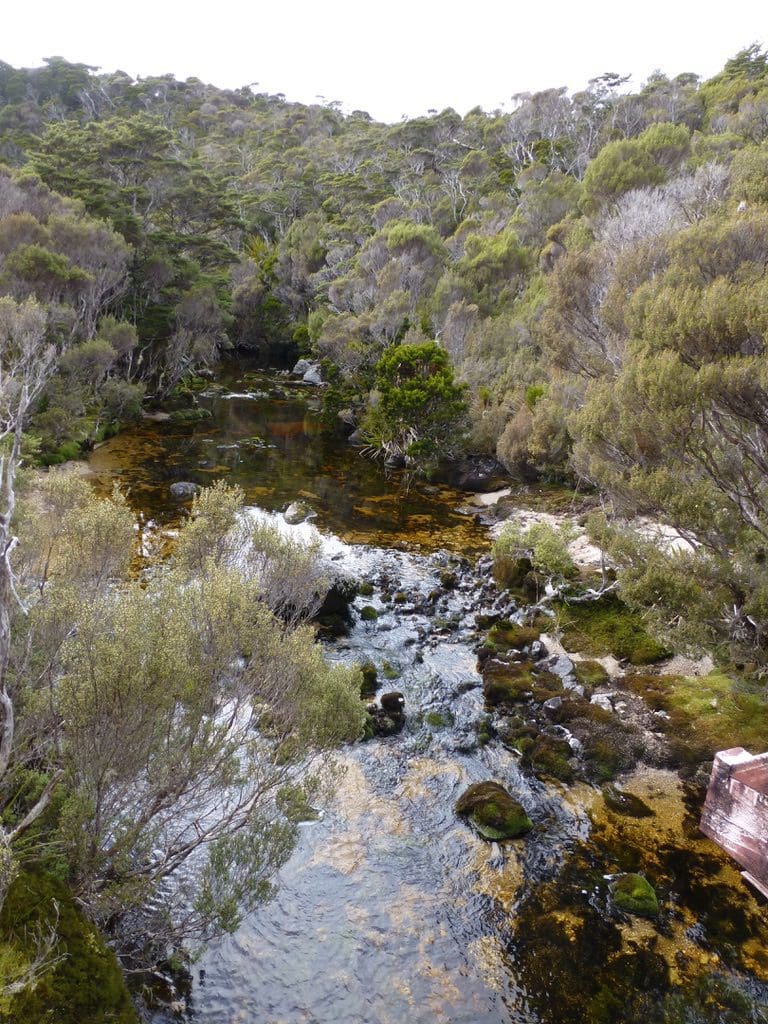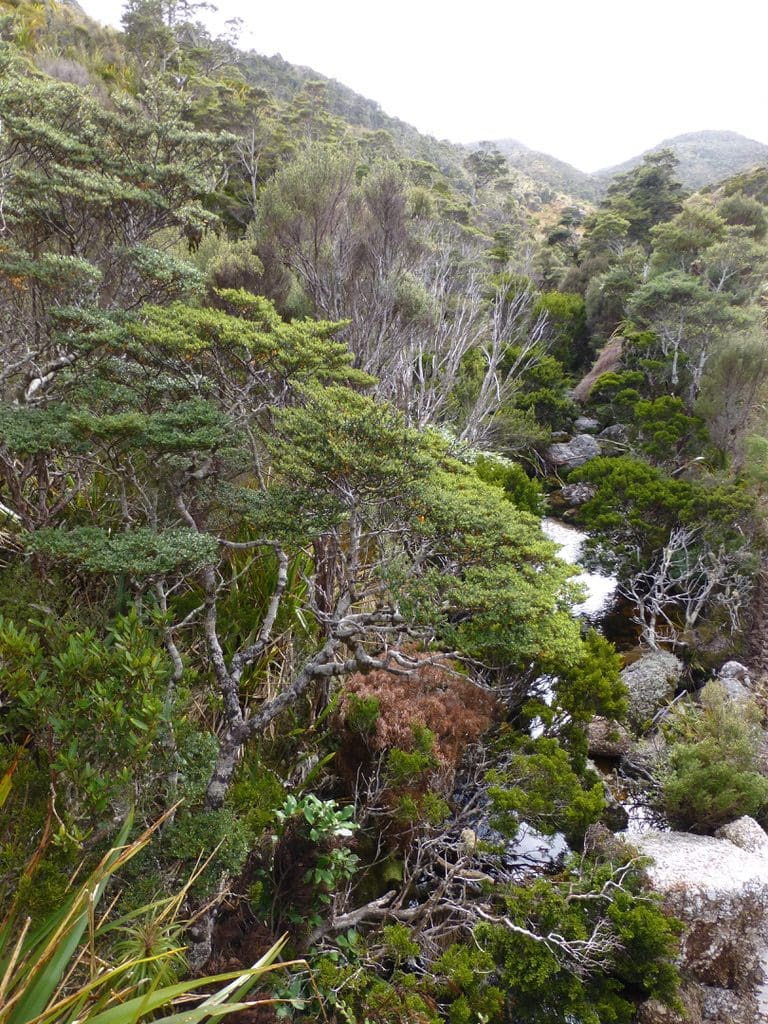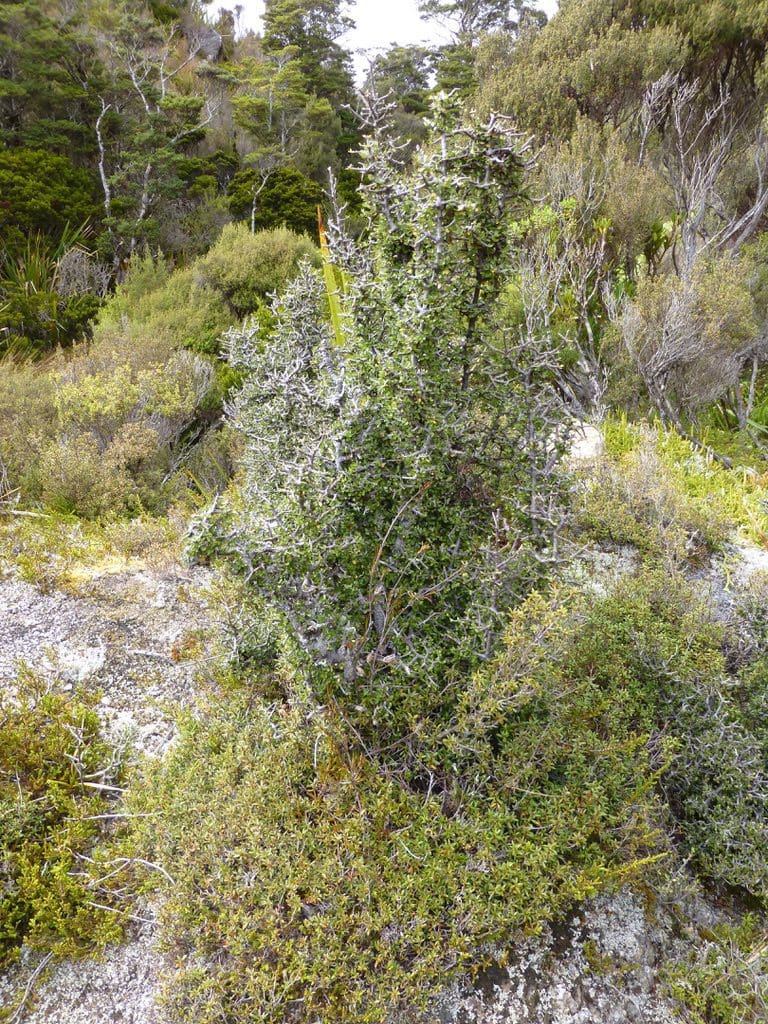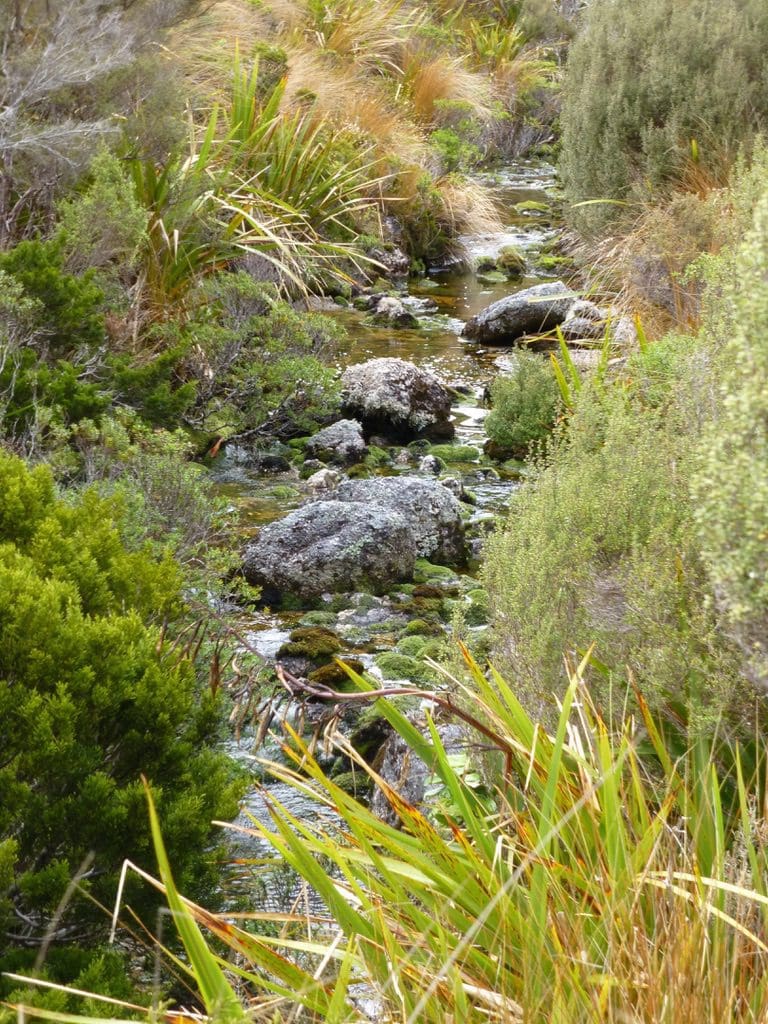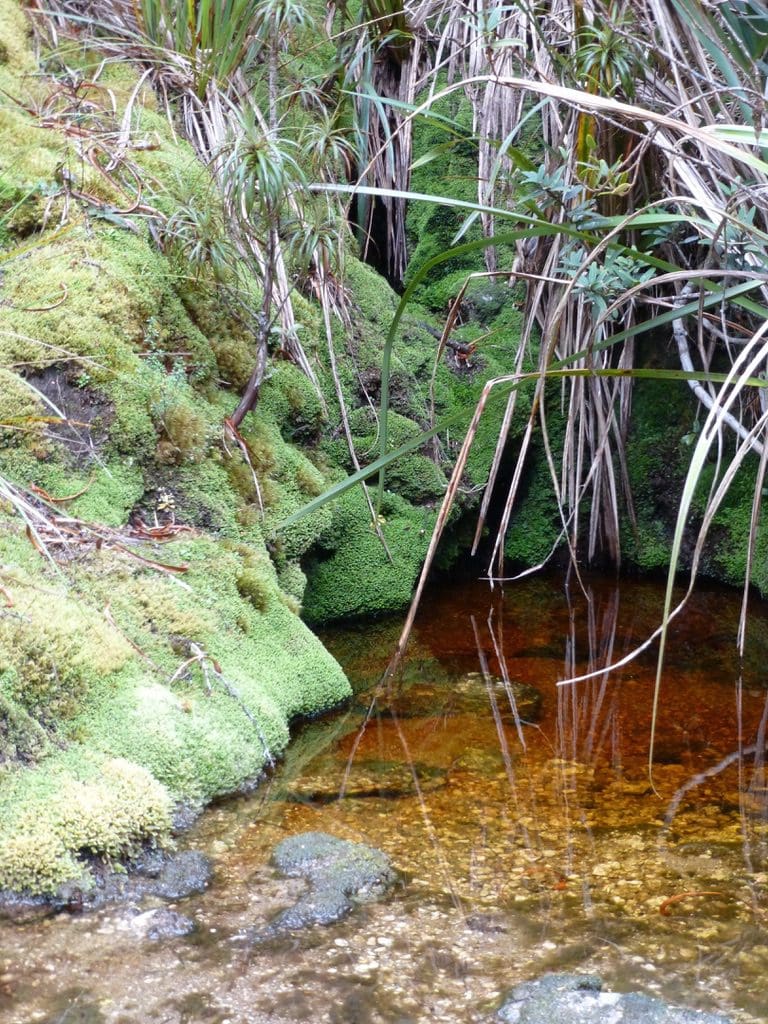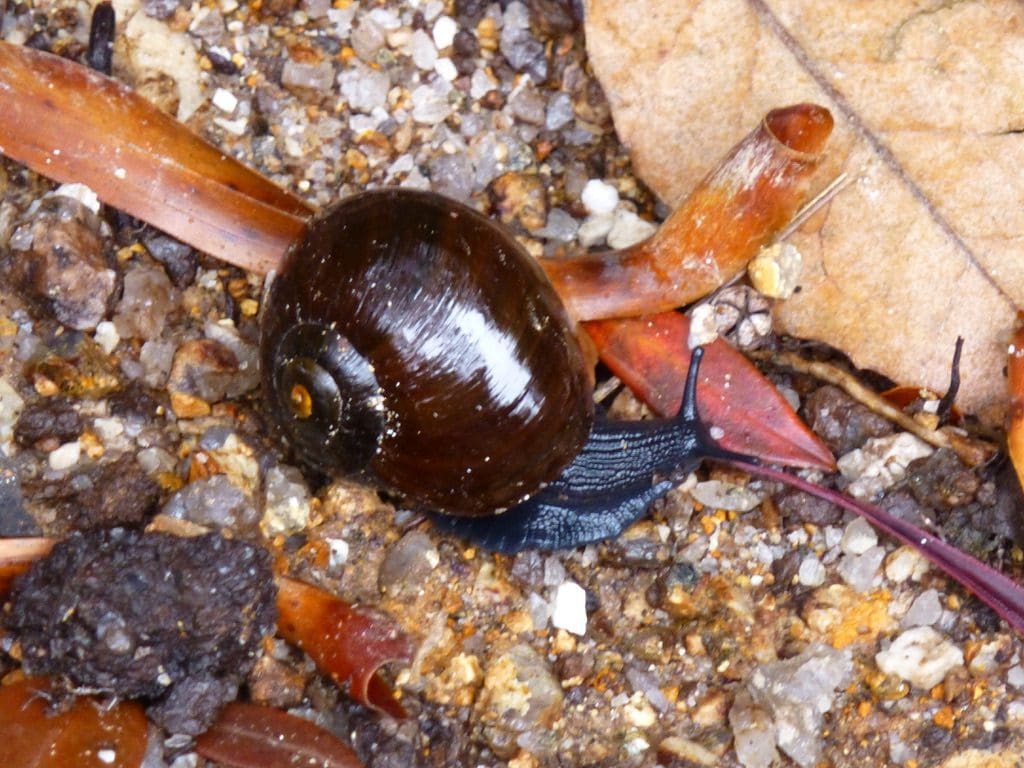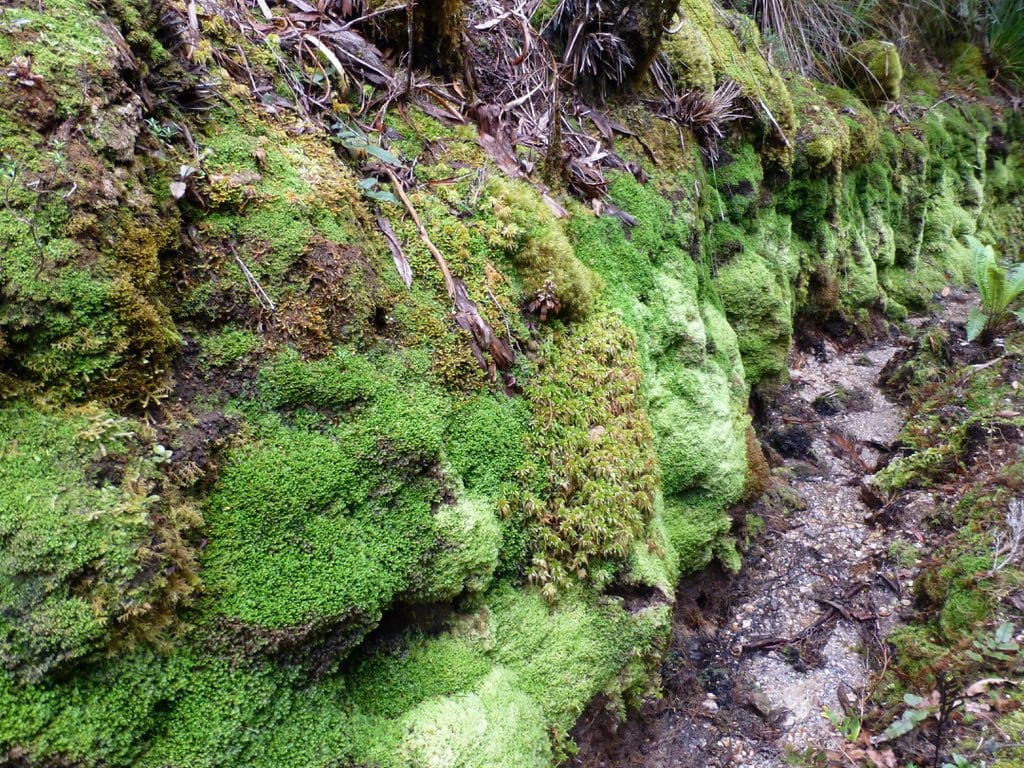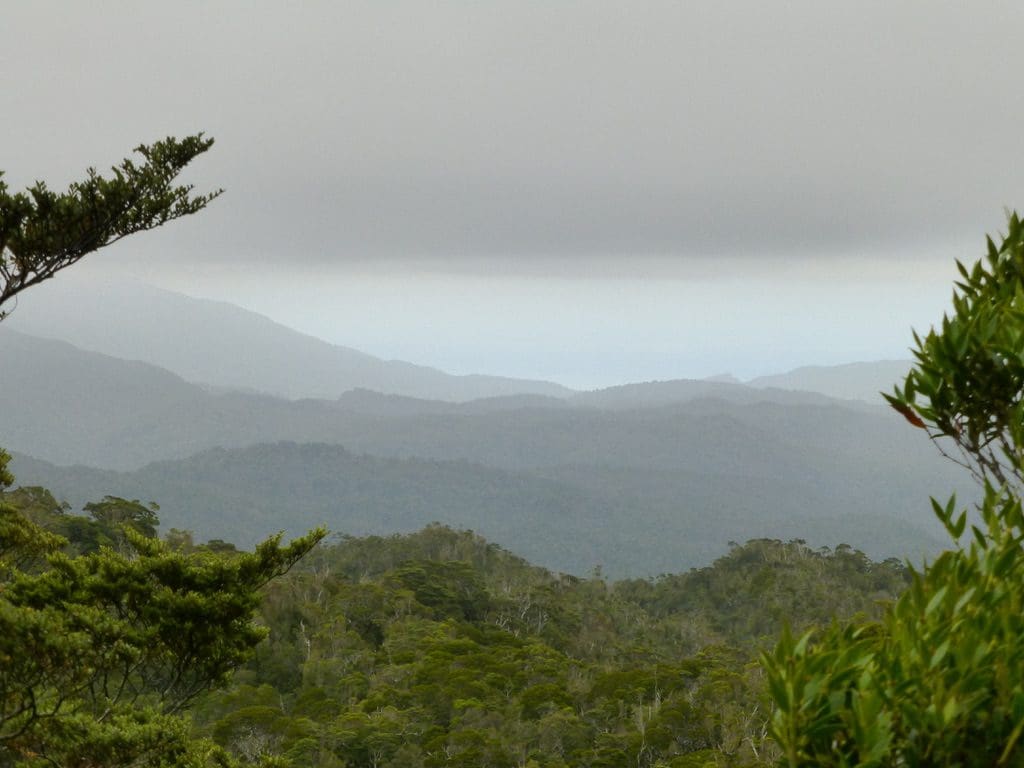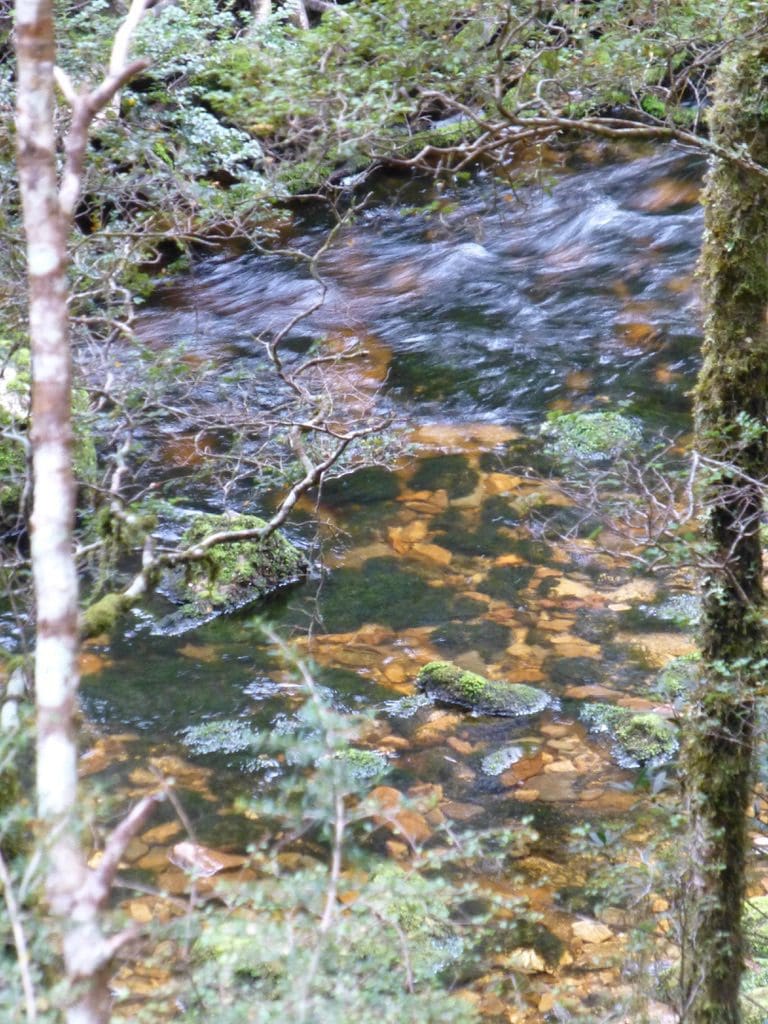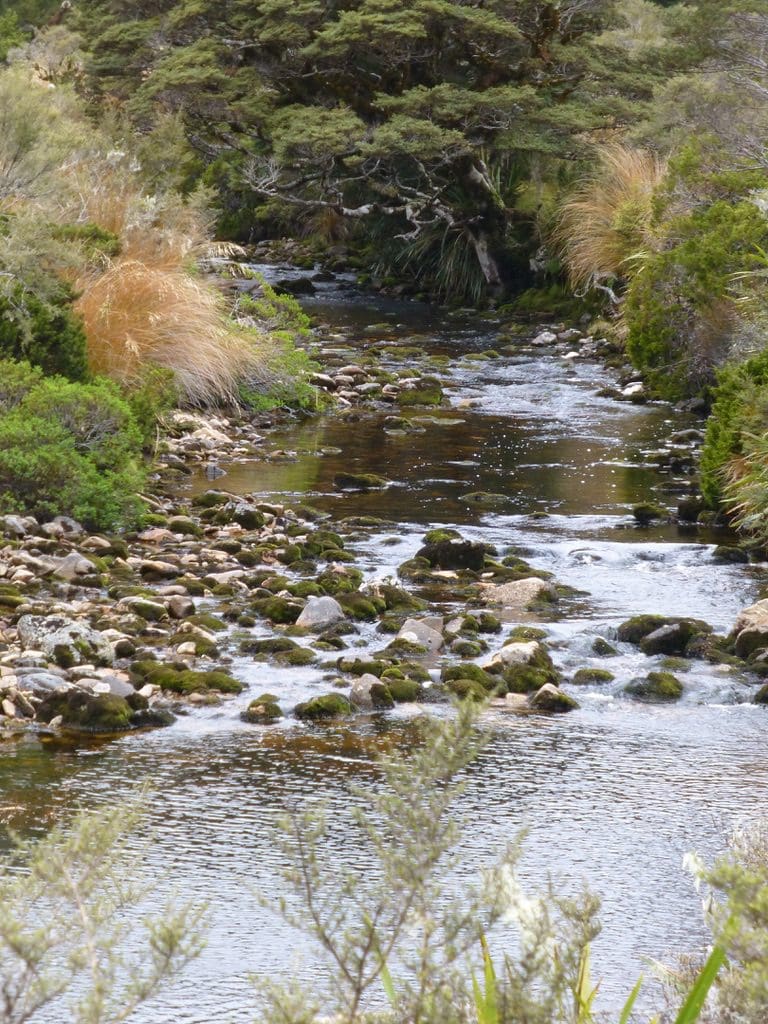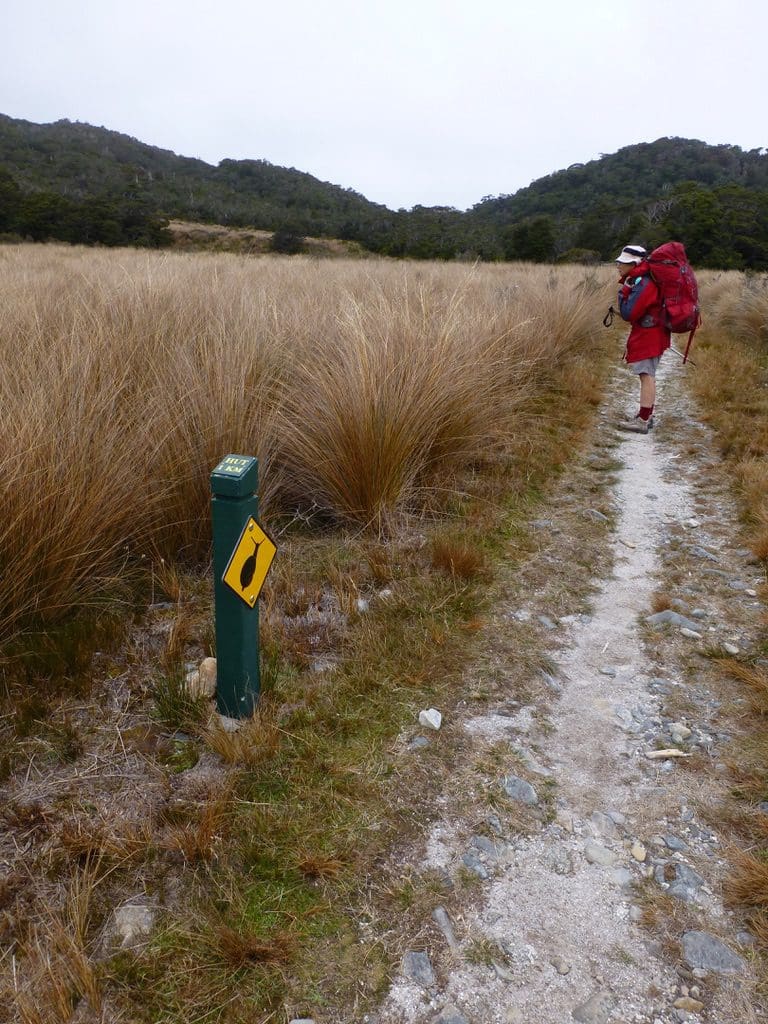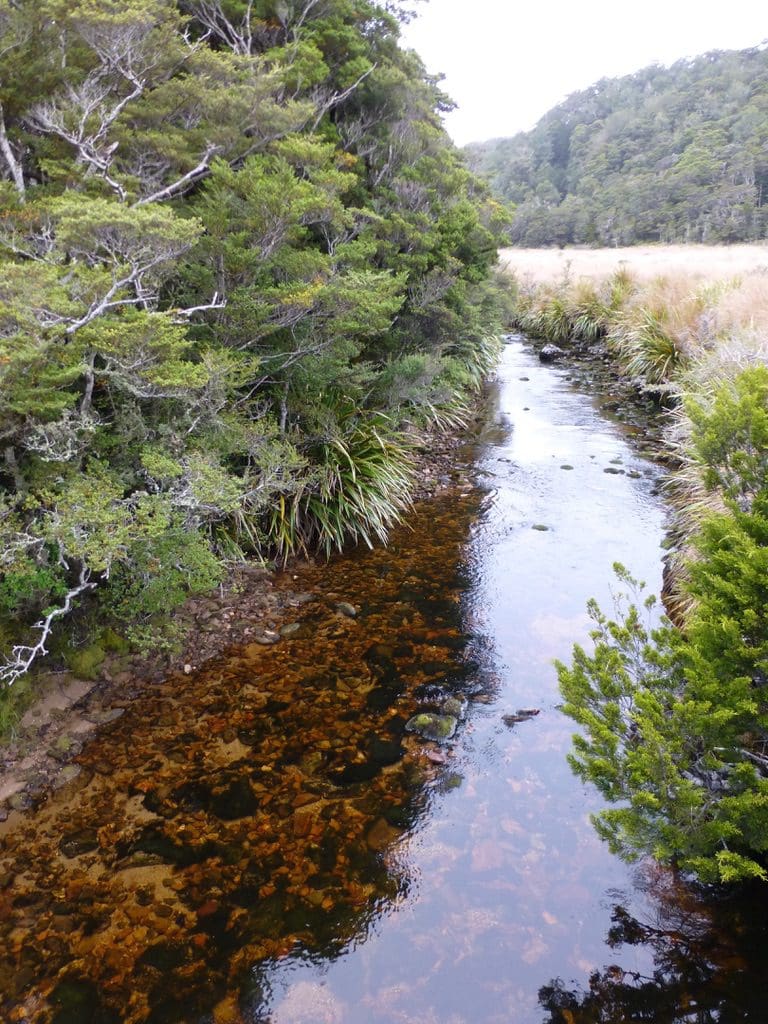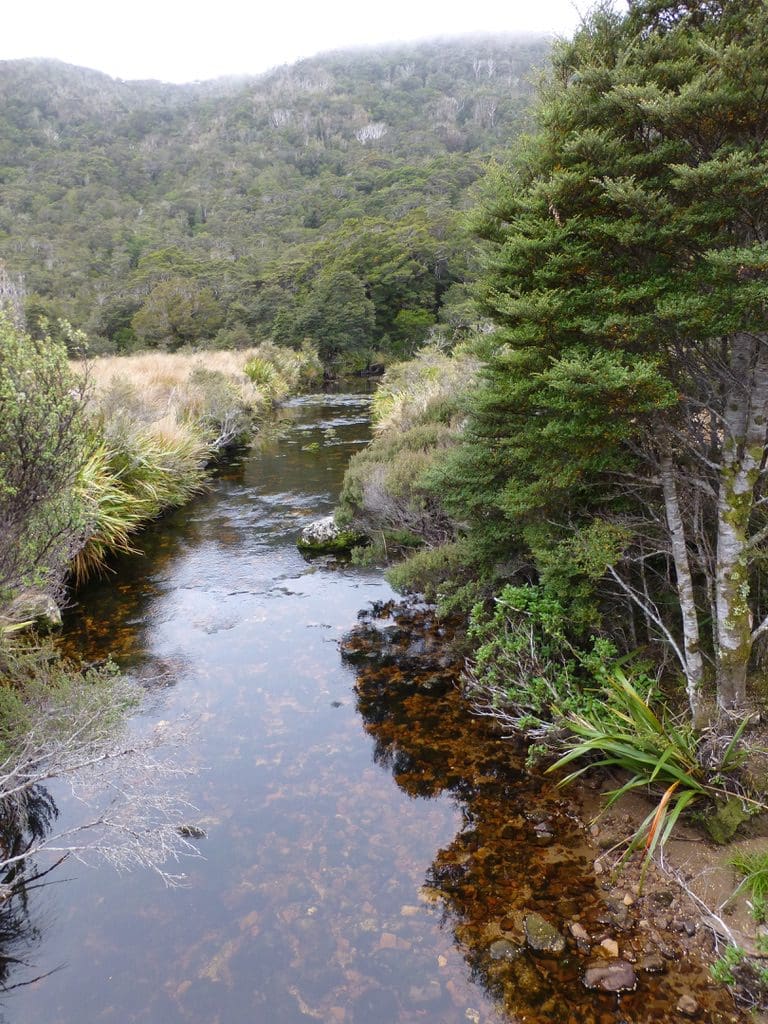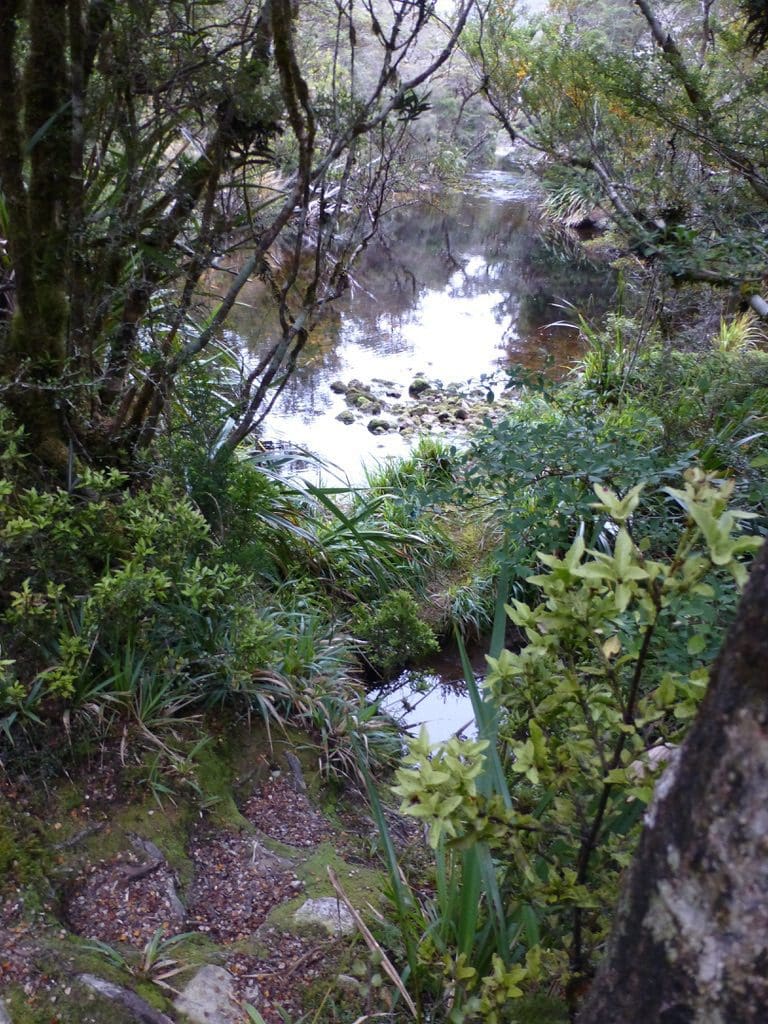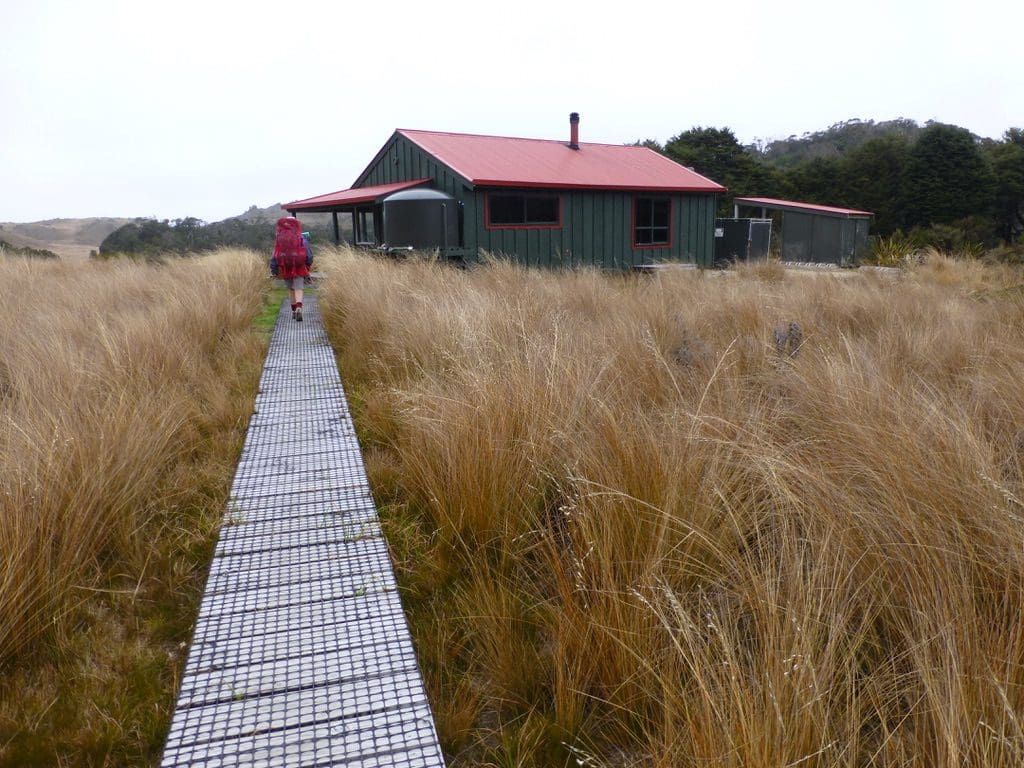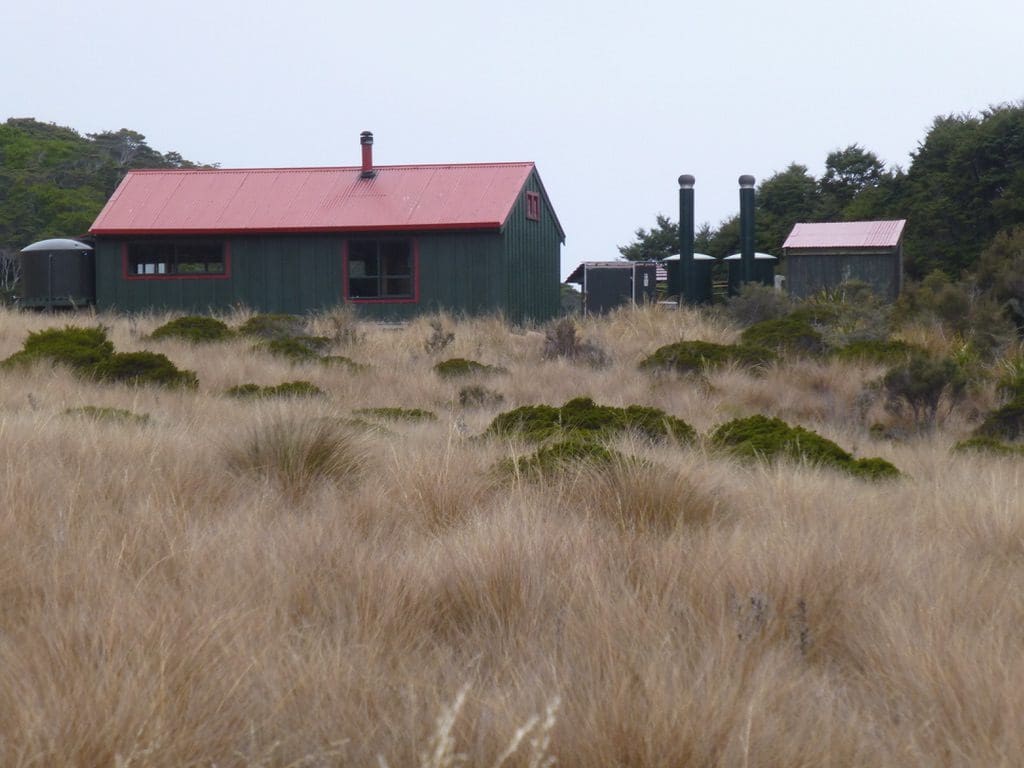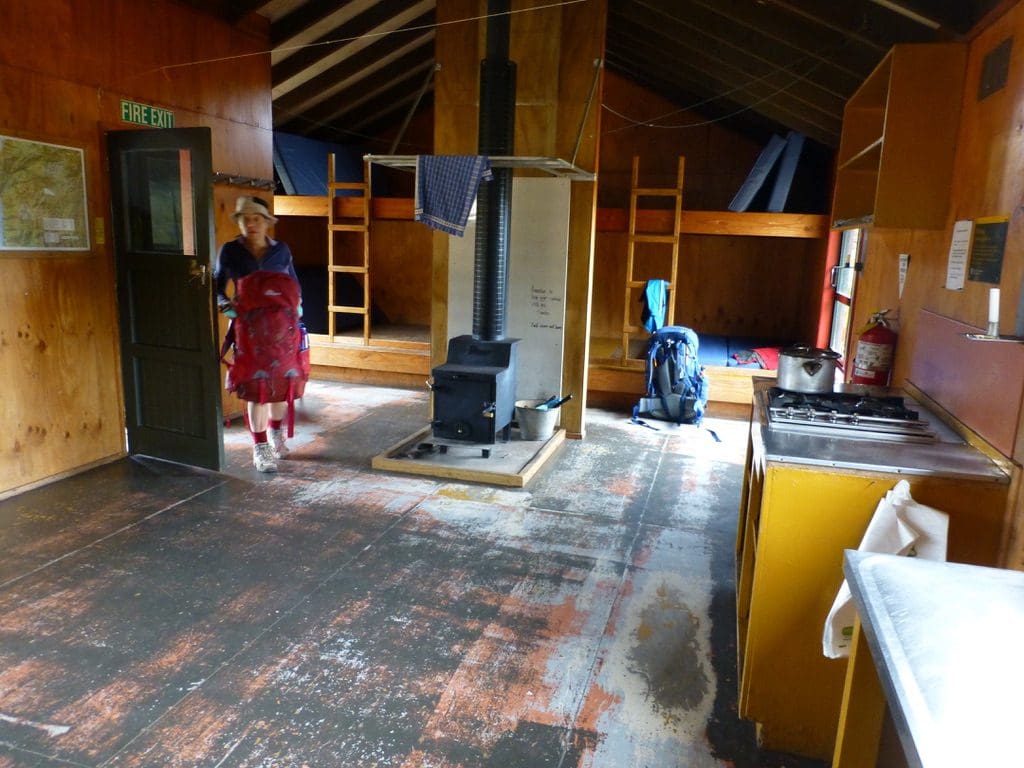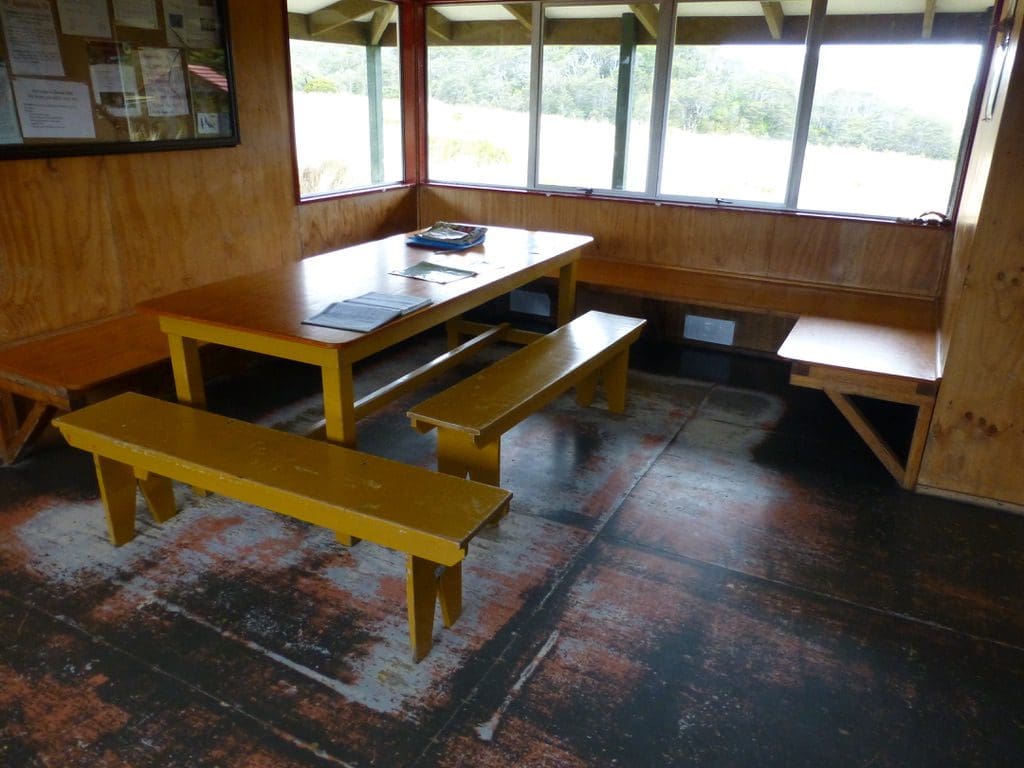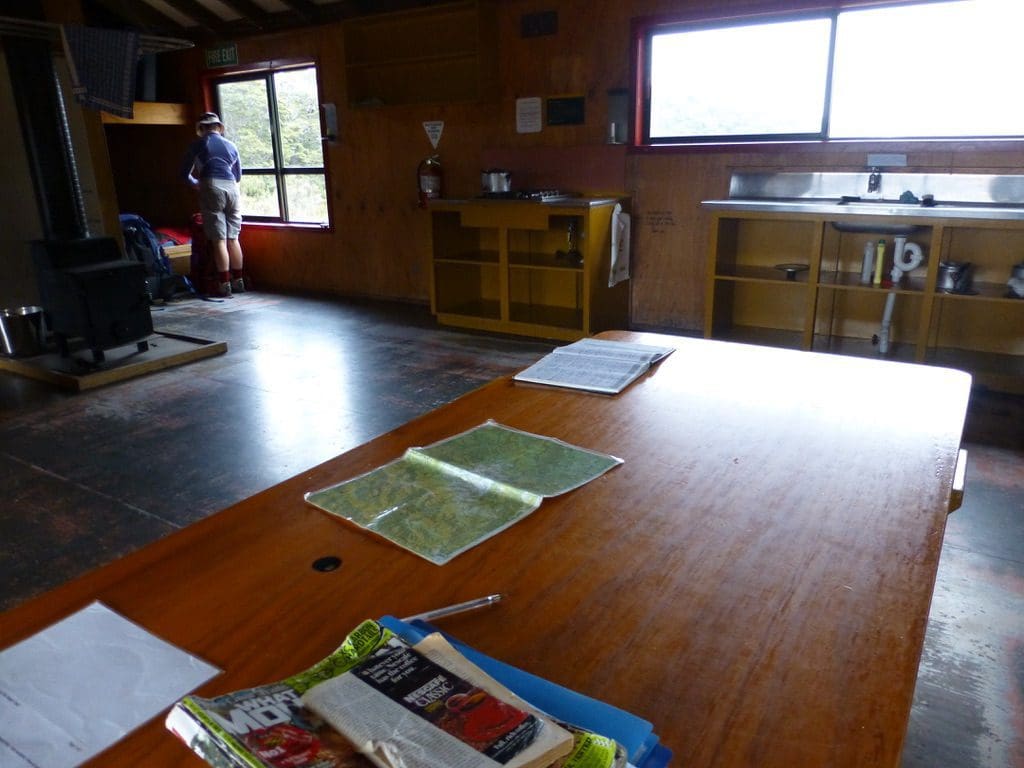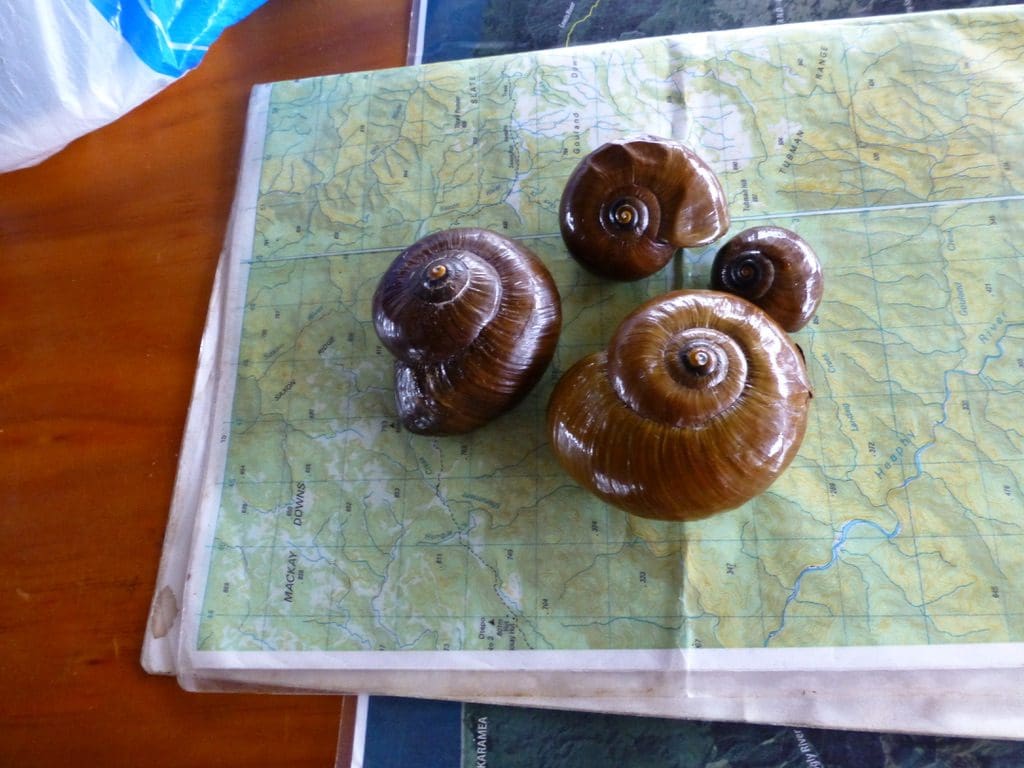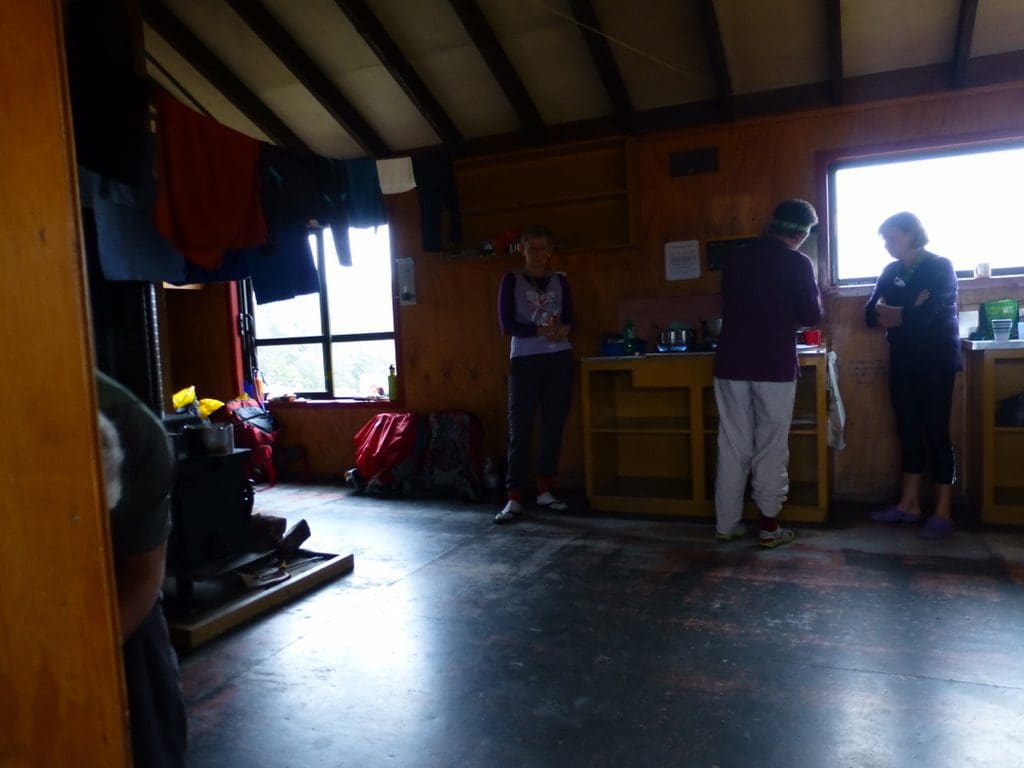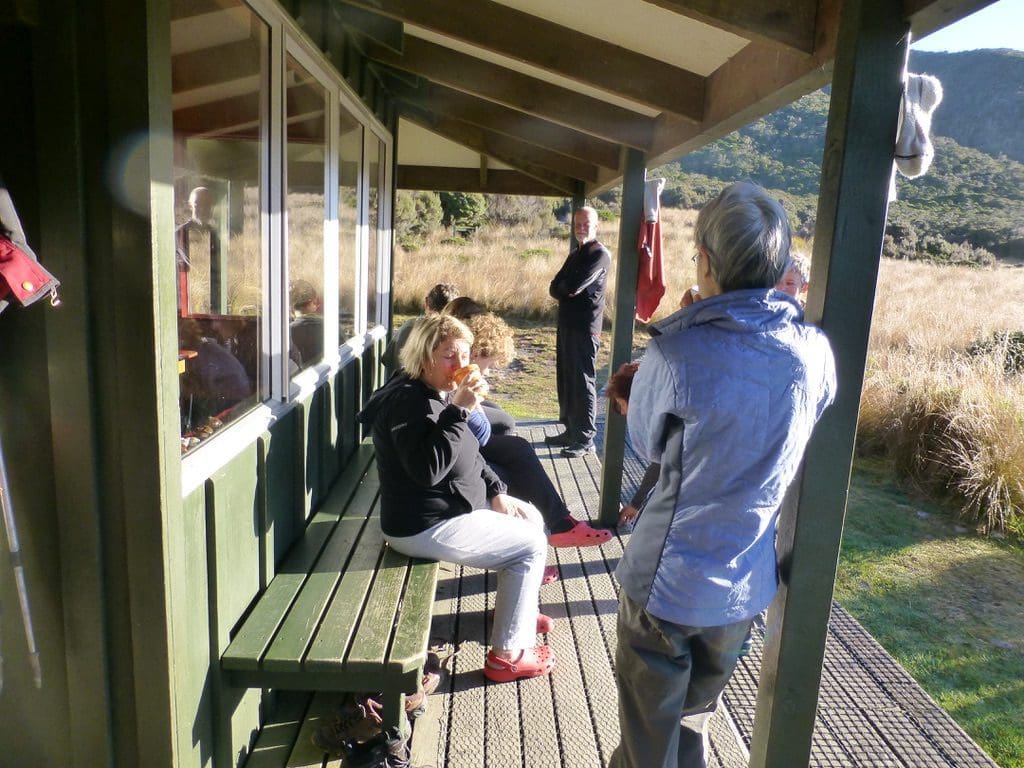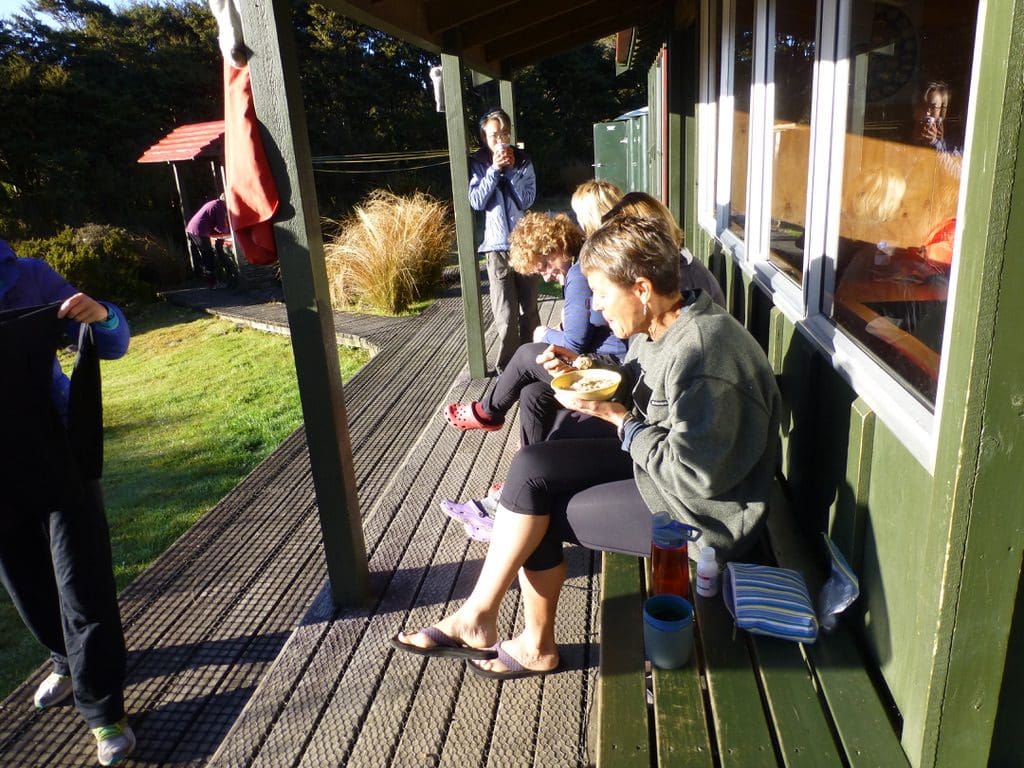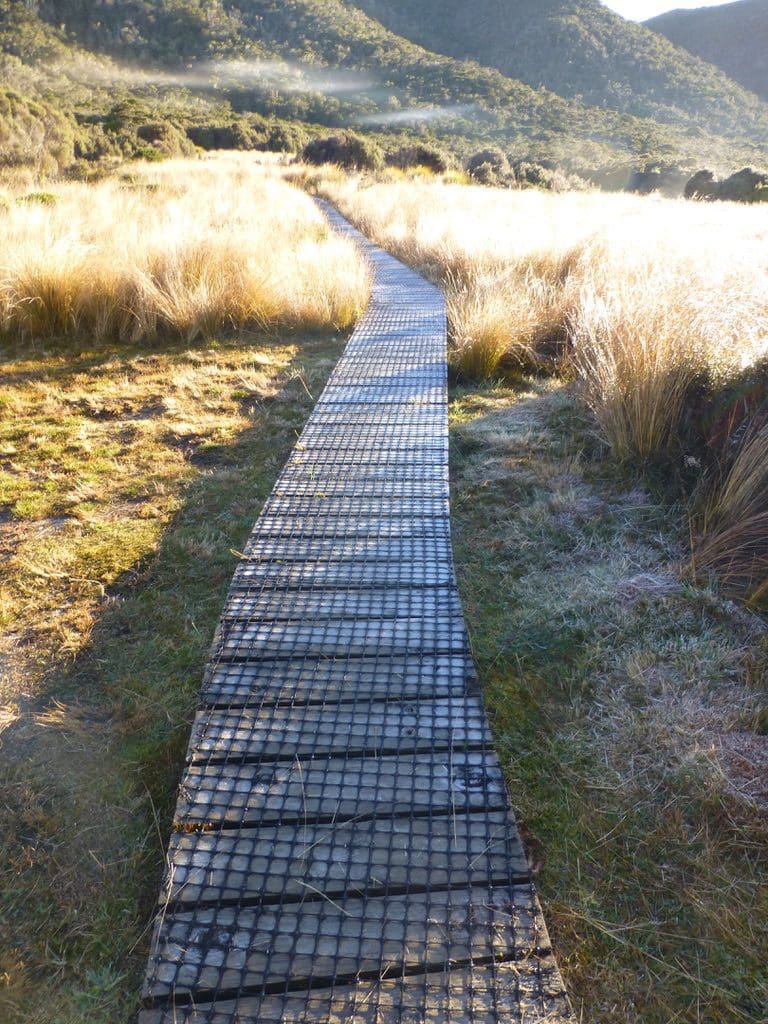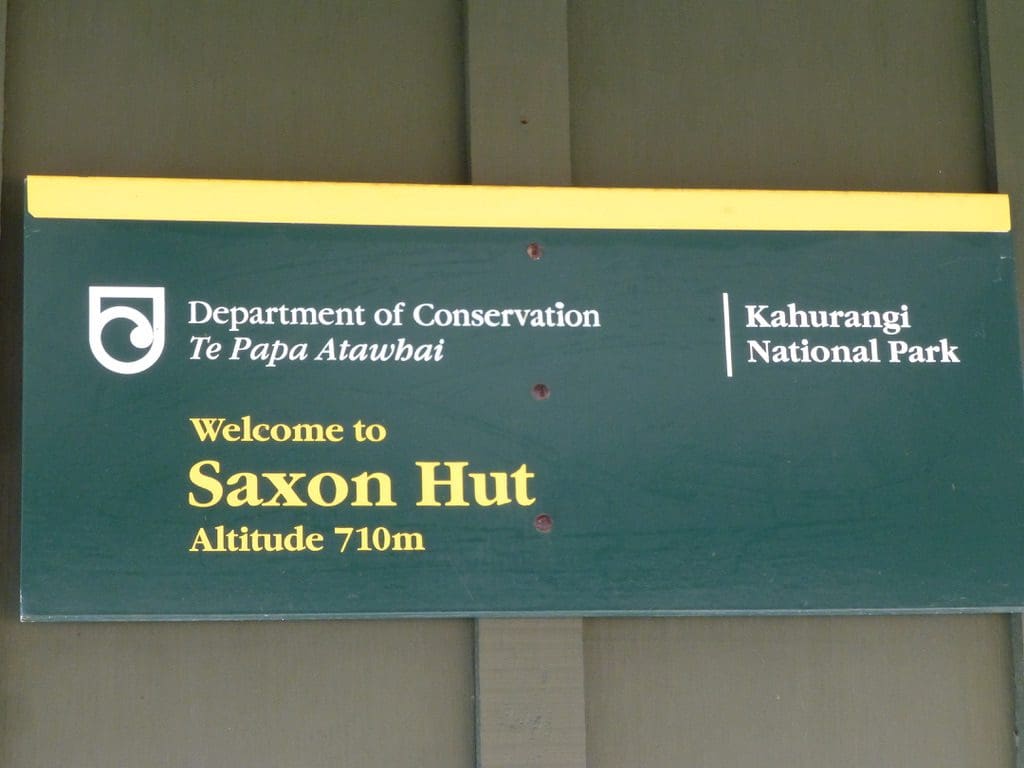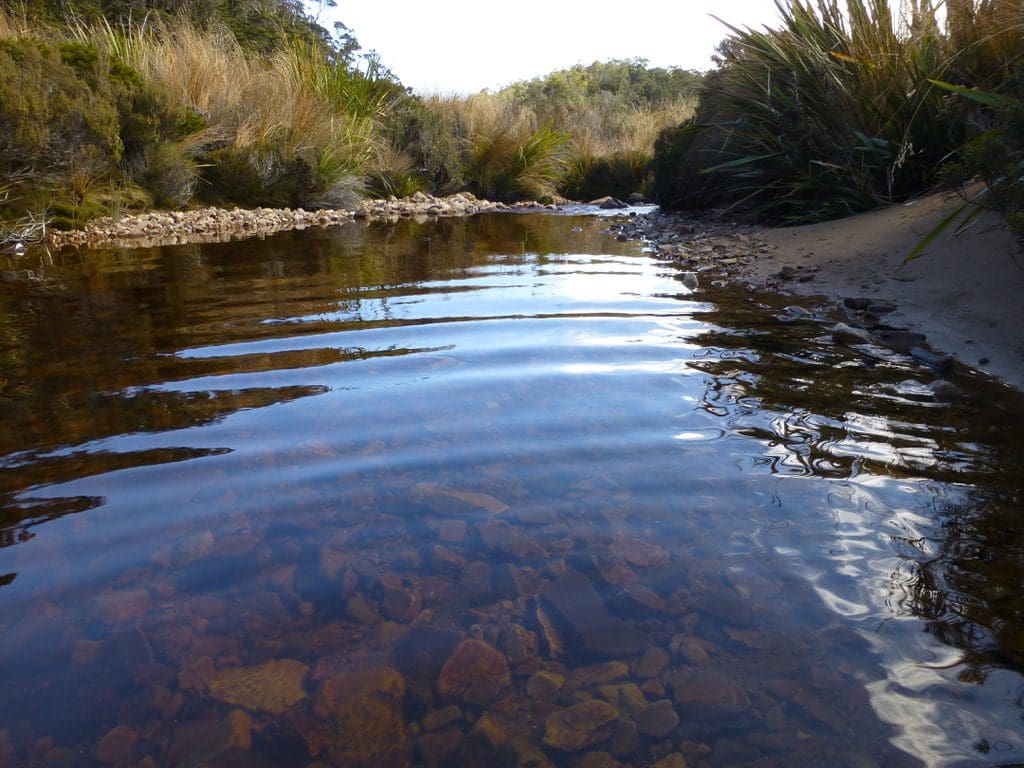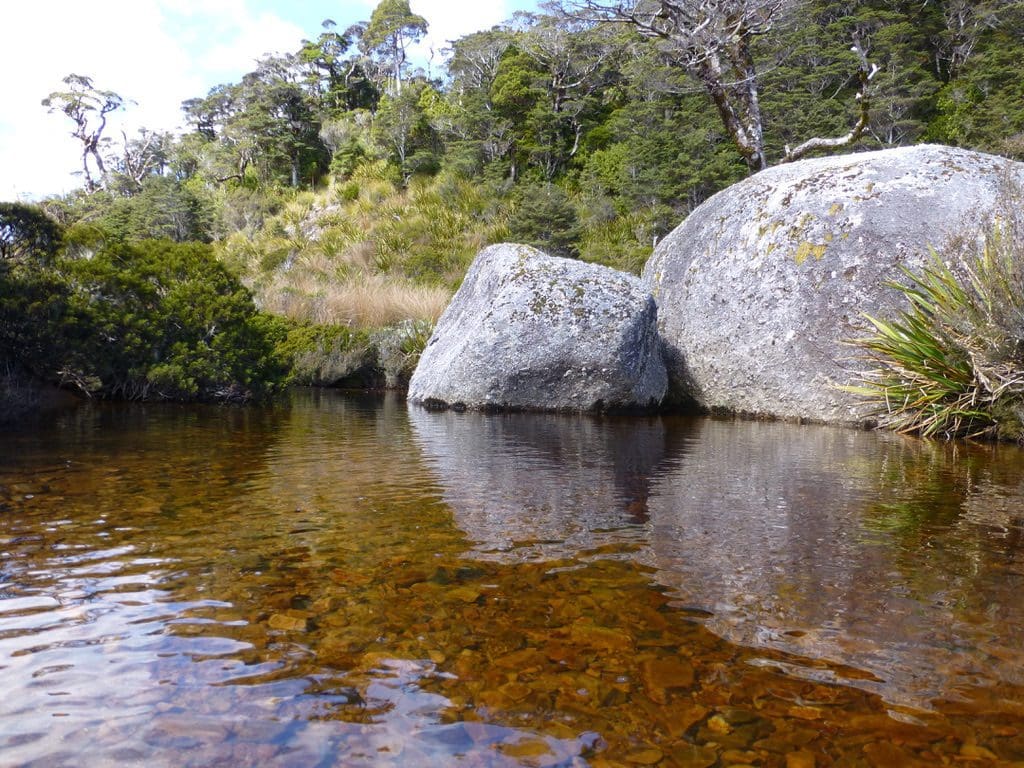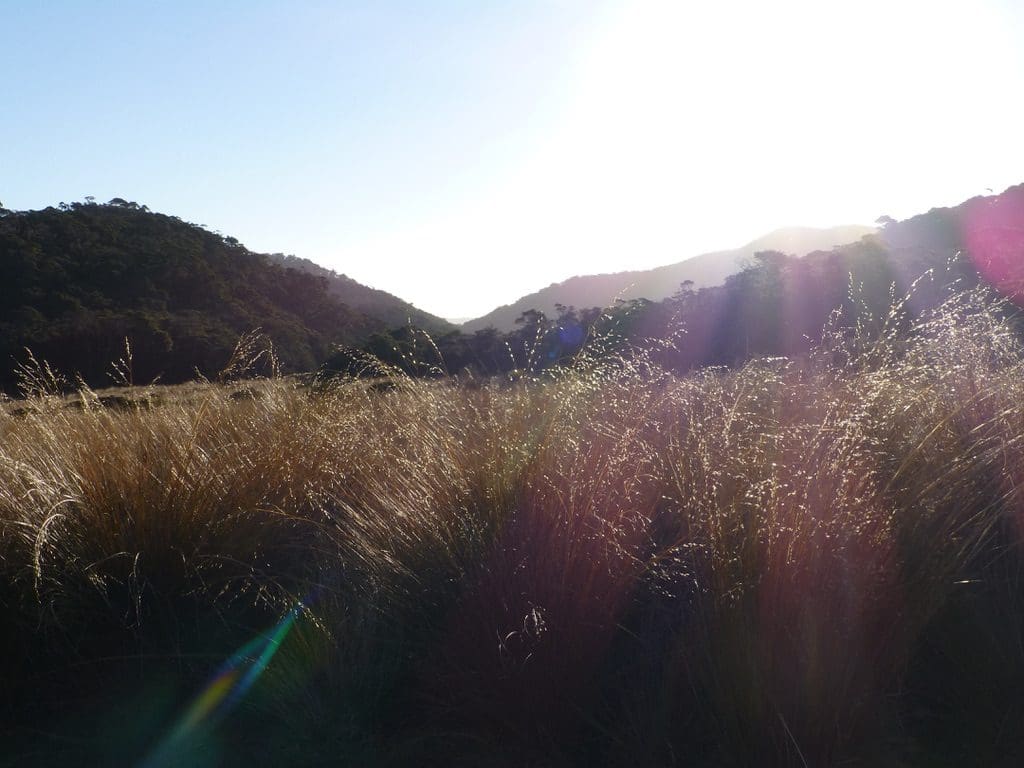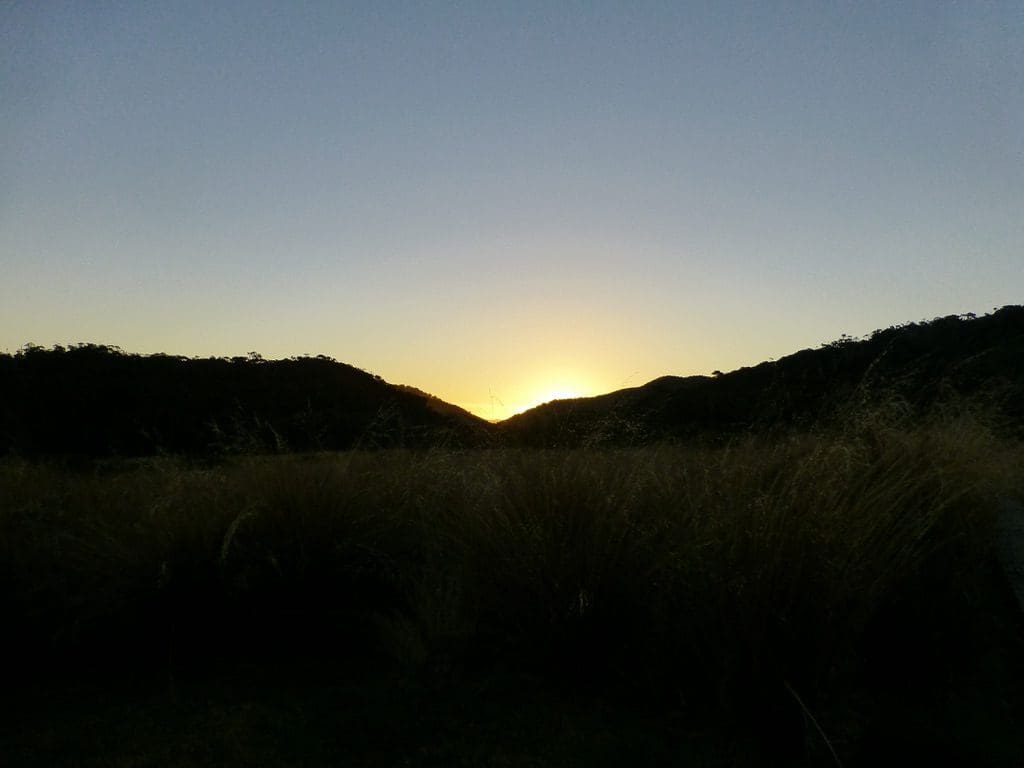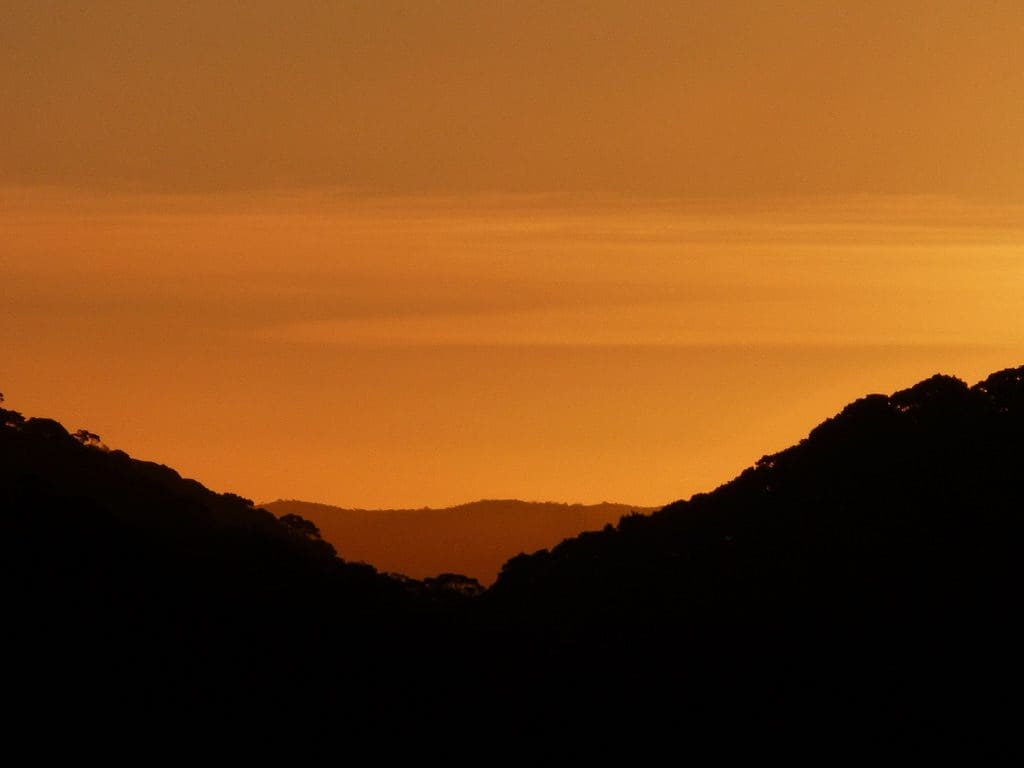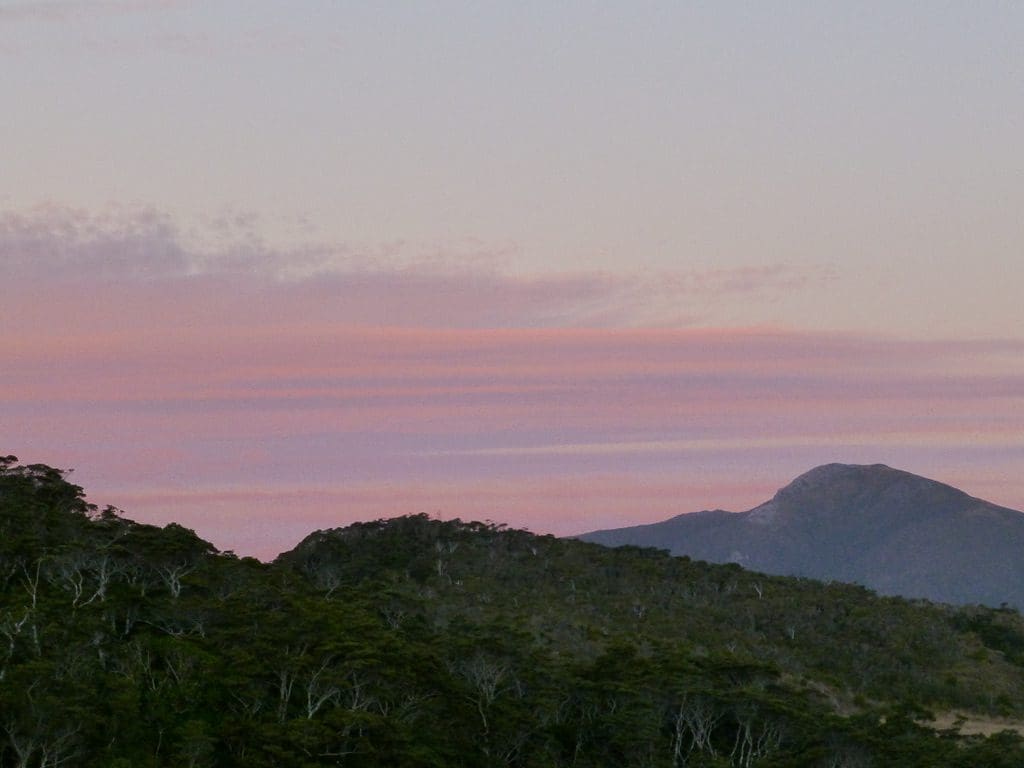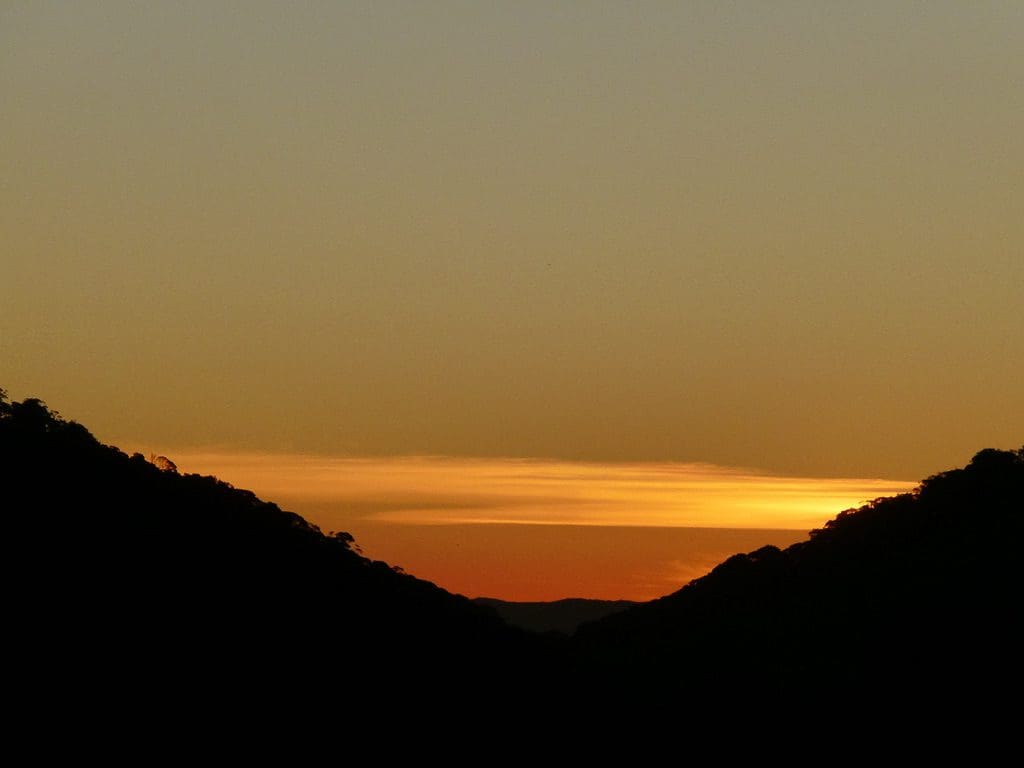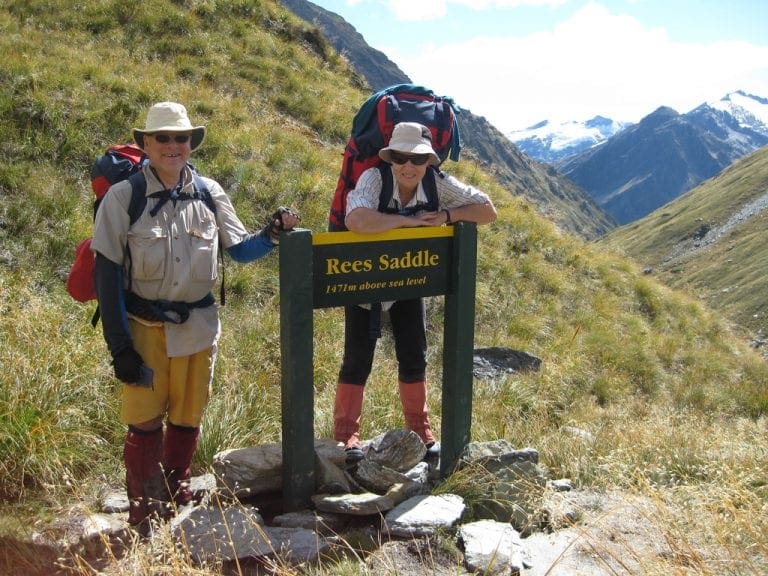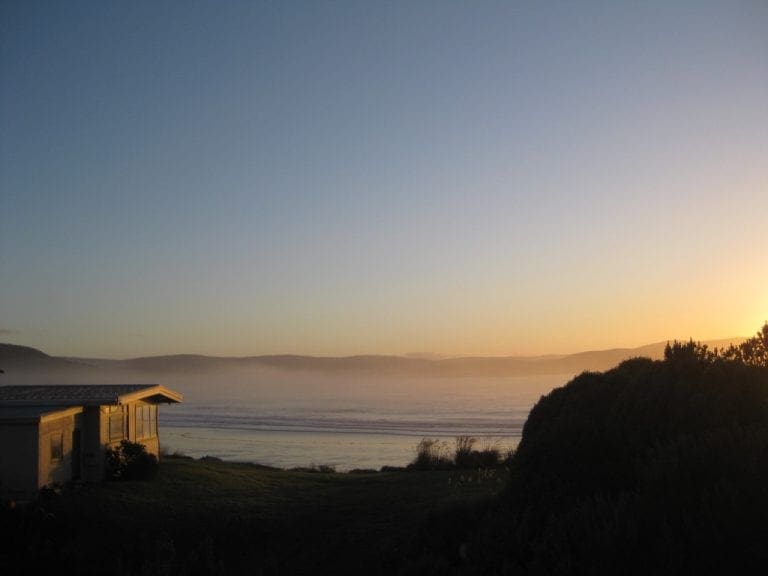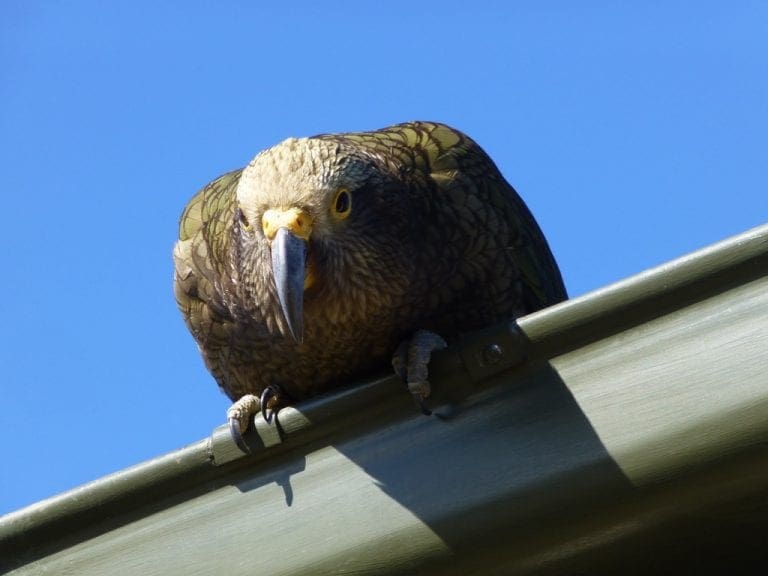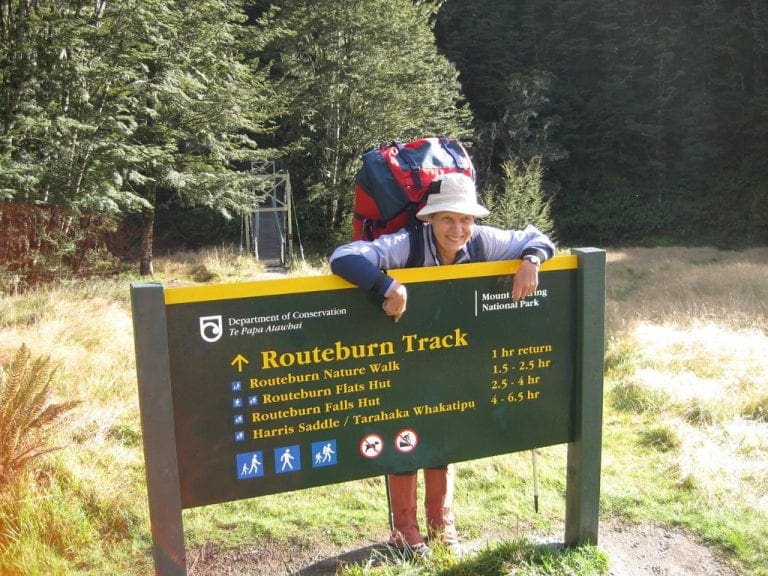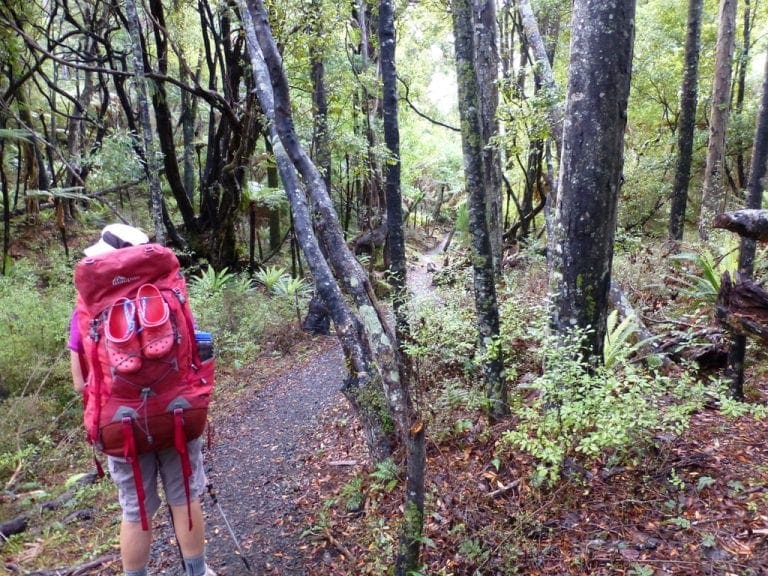New Zealand 2014 weeks 3 and 4 – Heaphy Track – Part 1
Sunday 16 March 2014. The 6:15 am alarm had us up so we would be ready for our 7:30am pickup from the front of Almond House by the Trek Express bus. Ex-tropical cyclone Lusi had blown a bit during the night but had dropped very little rain. A very uneventful bus ride over to the west coat. Piss stop at Murchison and coffee stop at Westport and we arrived at Karamea at 1pm. Very little rain – even less than normal over the Buller Pass. Wind quite strong from the East at Westport, but a few kilometres north of Westport, the wind had swung to the north and eased. The cyclone had gone pat us! (We saw on the TV that night that ex-cyclone Lusi had passed along Cook Strait between the North and South Islands and given Nelson a good belting.)
In Karamea, we are staying at ‘The Last Resort’ motel accommodation and certainly adequate. We had a large celebratory meal – roast pork and 7 veg followed by apple & berry crumble – washed down with a very nice local Pinot Gris.
Transport to and from the Heaphy Track is very well organised. Trek Express services both ends with regular runs – The Heaphy Bus – Wednesday: Nelson to and from Browns Hut; Sunday: Nelson to and from Kohaihai . They also run irregular charters for groups of 4 or more. Existing charters are published and you can often join one of them. The Kohaihai end to Karamea is serviced by Karamea Connections. There is a phone number to call in the Kohaihai Shelter. This will take you to Karamea. (They want you to spend a night in Karamea.) Karamea to Westport and places south is serviced by Intercity. The Eastern end to Browns Hut is serviced by Trek Express and Golden Bay Coachlines. Locals from Collingwood will also pick you up from Browns Hut if you have accommodation booking in Collingwood.
And of course there is Derry Kingston, the key runner from Heaphy Track Help. Derry will drive your car from one end to the other and then run/walk the track in the other direction and give you your car keys along the way. He has walked the Heaphy Track more than 300 times! Recently 5 times in 12 days. An amazing fellow. Derry charges $300 for the full key run. He moves 120 cars a years. Some are pick up from Kohaihai – for a discount. All that walking (and having a doctor for a wife) has not kept him healthy – a triple bypass a couple of years ago.
There is quite a lot of accomodation at Karamea. Far, far more than the Last Resort. Karamea needs a good village level web-site to advertise its accommodation, rather than each place struggle to to it independently.
Monday 17 March 2014. The walk into Heaphy Hut took us 8 hours (including 60 minutes of rests and lunch) to walk the 16 km. We arrived fairly exhausted.
An earlyish start from Karamea (a little late because the usual bus driver had broken his leg on the weekend and we had to wait until his mum had finished the School Bus run before picking us up and driving to Kohaihai). All well. I have a 20.4kg pack. Far too heavy. I’m very glad that I trained with a 21.5kg pack for the last 2 weeks at the gym – but for only 1 hour at a time – not 7 hours of pack time. The track itself is very nice – mainly flat and on a slight rise just about the beaches. Very good footing along the way and all rivers bridged.
There is one 300m part that crosses a beach and that bit can be dangerous in bad weather with a high tide. Helen had planned it all out carefully so that we arrived at that beach after high tide. Perfect easy crossing. The sea that we walked beside was still in convulsions from ex-cyclone Lusi. The sound of the waves pulling back across the pebbles and boulders was incredible.Very interesting. We stopped for lunch just after Crayfish Point and the dangerous beach. The sandflies were vicious and drove us onwards. They especially went after Helen’s bare legs and arms. Next, a short stop at the mid-point shelter. Sandflies!
The views along that coast are special. Walking through forests of Nikau Palm and flax. However, it was just a bit long for me. My left knee was in flames for the last 3 hours. The new Heaphy Hut is very well done, spacious and well planned – 4 bunk rooms (capacity 32), flush toilets, solar light, 7 double burners, ample seating and table space and great views down across the Heaphy River bar.
Tuesday 18 March 2014. A recovery day at Heaphy Hut. Quite a lot of rain overnight. We had a late arrival (after 10pm) who left early (before 7am). What a lot of effort to avoid paying NZ$35 – skulking around in the flax with the sandflies for a few hours. With that person, we were 8 in the hut – two Swiss women who had come to have a holiday and catch up, one kiwi who is using it as a training tramp for the Himalaya – he organises and runs guided tours to the Himalayas.
I think the CCC compression tights I had bought at Nelson have worked very well – especially for recovery. My only regret is that I did not buy two pairs. (I usually have a very bad time after an extremely exhausting day – shivers, cold and cramp. Last night I had none of that and I have to put that down to the CCC Compression tights.)
We are very impressed with this new Heaphy Hut. (Five engineers were here for a very, very brief inspection having been helicoptered in yesterday.) However, we can think of a few nigaldy improvements – more screened windows in the bunk rooms, more drying racks & lines to handle wet clothes from wet trampers, more sinks for washing up, solar hot water to reduce gas usage. (Gas is helicoptered in; most gas is used to heat water; solar could do that.)
Notes from the Track Book. ‘Here on my 50th birthday. Weather pissing down. Typical West Coast.’ Next day ‘Weather beautiful. Stars delightful.’
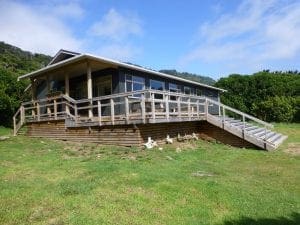 Finished reading ‘Mrs Queen Takes the Train’. Rain (heavy at times) until about noon, then it cleared up and blue skies. Warmer. Helen & I chopped a bit of wood with a weka prowling around the chopping block. Searchers for mussels on the beach were unsuccessful. Helicopter making drops of equipment here and further up the Heaphy. A party of 5 kiwis arrived from Kohaihai at 5pm having walked it in 3 1/2 hours. An excellent silvery sunset at 7:45pm had us very excited & taking pots of photos. The solar lights came on at 8:09pm tonight. They are very good – enough to read by. Huge changes in temperature today. This morning, cold in the rain (so that we lit the fire and stacked wood), when the rain stopped & the sun shone, we shed our thermals & sun baked. Very browsy.
Finished reading ‘Mrs Queen Takes the Train’. Rain (heavy at times) until about noon, then it cleared up and blue skies. Warmer. Helen & I chopped a bit of wood with a weka prowling around the chopping block. Searchers for mussels on the beach were unsuccessful. Helicopter making drops of equipment here and further up the Heaphy. A party of 5 kiwis arrived from Kohaihai at 5pm having walked it in 3 1/2 hours. An excellent silvery sunset at 7:45pm had us very excited & taking pots of photos. The solar lights came on at 8:09pm tonight. They are very good – enough to read by. Huge changes in temperature today. This morning, cold in the rain (so that we lit the fire and stacked wood), when the rain stopped & the sun shone, we shed our thermals & sun baked. Very browsy.
Wednesday 19 March 2014. Eight kilometer gentle walk to Lewis Hut through some of the most beautiful bush I have been through. Initially some excellent views of the Heaphy bar in the early morning light. Then, excellent trees, ferns, treeferns and huge trees (Rata?). The track is much changed from 2 years ago. A new swing bridge over the Gunner River (takes out about 3/4 km) – 3 planks, 5 people max; and a very long swing bridge over the Heaphy – 3 planks, 10 people max (also takes out about 3/4 km as well as several climbs to get to the old Lewis Bridge & the old 4 wire swing bridge over the Heaphy). Magnificent bridges. [Derry says that the new bridge over the Gunner River will not last – it has already had water over one end in a flood. The old Heaphy Bridge was washed away soon after we had crossed in 2012. The new Heaphy Bridge at 148m long is said the be the longest swing bridge in the Southern Hemisphere.]
Highlights were the sunshine into the coffee coloured water that Deslie called ‘liquid fire’. I hope my photos did it justice. The other was 2 old Rata trees about 1 km west of Lewis Hut. We thought the first was huge. The second dwarfed it. Two young kiwis going the other way exclaimed ‘holy shit!’ when they saw the magnificent old trees with huge communities of plants (orchids, ferns) growing on them. A good PhD project – the ecosystem of one tree. It would take 10 years to complete.
Over 200 photos for the day. Pancake rock in the early part. We missed seeing the Field Cave turnoff. In 2012, the turnoff to the Field Cave was after a Nikau Palm in the middle of the track just after a bridge. Nothing like that today. I think that there were even fewer bridges and the track has been much realigned.
Tonight we have a group of 7 from a guided walk (including 2 guides). SouthernWilderness.co.nz. Plus a chap, Mal, from the building team for James Mackay Hut. The water was playing up (no water at all and none in the toilets). He & I had a go at fixing the toilet and then a gas burner that had been malfunctioning for months.
Thursday 20 March 2014. A lovely sunny day. 12 km walk uphill 750m from Lewis to James Mackay Hut. Helen and I took 5 hours walking plus 1 hour of stops including lunch. A very good track and very constant, steady gradient up. The few few places that the gradient is not constant is to negotiate a stream. On the way up, we began with the big Rata forest that were had along the Heaphy. We left this after an hour and went through tall Rimu forest. The moss everywhere is spectacular. Much of the forest & track cuttings would never get sun. By the time we got to the top we were in low scrub. We followed the one ridge all the way up. For us, going up, it looked as though we were always about to reach the ridge top. An illusion that continued all day – moving in front of us. The substrate that we walked on changed all day – sandy clay, coal, granite, granodiorite. A lot of track work – dropping tons of crushed granite. Did I say a magnificent walk! Extremely enjoyable. I will say that walking uphill for 5 hours with a heavy pack can be a bit tedious. We did have a pack-off every 60 mins (to the second) and a 10 min sit down with the pack-off. What is it about this activity?
Mackay Hut is very full tonight. It sleeps 26 and has only 18 seats. Three DOC workers preparing for the new hut, new helipad and moving topsoil to replant where the old hut was. An excellent crowd sitting on the verandah chatting and swapping stories. Derry Kingston, the Key Runner (heaphytrackhelp.co.nz) arrived on dusk, slept on a mattress on the verandah because of the crowded hut and had left by 7am in the morning.
This old Mackay Hut has 2 bunk rooms – 12 bunks in one and 14 in the other. We are in the 14 bunk room. I can report that everyone on the lower bunks (ie 7 of us) snored – including me – and my new 3M Tri-flange earplugs worked. It looks as though standard walks through the Heaphy stop at Perry Saddle, Saxon, Mackay, Heapy – 4 nights; or Perry Saddle, Mackay, Heaphy – 3 nights.
The highlight of the walk was undoubtedly the robin that came and picked our socks, laces, boots and all the pack seams while we had stopped for a 10 min pack-off – which extended to 15 mins with the entertainment. The last major vegetation change was at the 1km to go mark we came tolow heath. The vegetation had been changing constantly – probably major changes every kilometer. I should record (so that I remember for next time) that for an uphill like that, I walk in my zone 2. To avoid going into zone 3 (ie above 139), I stopped BPM walking when I got to 137 BPM and began walking again when my heart rate dropped to 130 BPM. Ditto when walking in zone 1 – stop 2 beats below the max and wait for a 7 beat (half a zone) drop. Zone 3 – stopped at 150 and began again at 147 – shorter stop because the heart rate drops quicker. I also have to record how much I am impressed with the compression tights. My recovery appears to be significantly enhanced. After a day like today’s level of activity, I would have been exhausted, shaking and cold. Tonight, I have none of that. Compression tights are excellent. Perhaps recovery tights and compression shorts would be worth investigation. Derry Kingston recently walked the Heaphy Track 5 times in 12 days. I’d say that he might be getting a bit sick of the Heaphy by now and would like a change. He recently took time off from here and walked the length of the North Island.
Friday 21 March 2014. A day off at Mackay Hut. The hut woke up quietly at about 7am and ate quietly. Most were gone by just after 8am. We were slower off the sleeping bags – because of the shortage of seats. After breakfast, we did the laundry – strung up on our own line – swept & cleaned the hut. Many/most people arriving at this hut had small packs with sleeping bags & small bags strapped to the outside. Very, very bad idea. In rain, this leads to wet sleeping bags. Even the experienced group from Melbourne did not have pack liners. Heavy sustained rain would have meant wet clothes too – and maybe wet food. There is no such thing as a waterproof pack. Many walkers think that a pack cover will keep the rain out – and it will for 10 mins. After that only a very good pack liner will save you, and even then all those clothes & sleeping bags should be in their own plastic bags.
Today, I have no stiffness after yesterday’s climb. DOC stories. “On the Milford Track every time the group stopped, a bloke added a few rocks to his mate’s pack. The mate arrived 40 mins after everyone else, sweating and stuffed.” Also, “put a golf tee on the high point of the track & carrying golf balls down to where they would be found of top of moss & in forks of trees.” Richard, with DOC is a bit of a character – guided walks, feeding eels photos. The name of this hut is changing. Two years ago, it was James Mackee. Now, its is Mackay (rhymes with ‘eye’). The signs are all being changed.
We are just on half way through our walk. Our food catering has worked out very well. Breakfast muesli (175 ml) & powdered milk & coffee bag each. Lunch: salami (50g each), cheese (50g each), 2 large Vita wheat biscuits. Dinner: 1 freeze dry, 150 g rice or 100g couscous; chocolate (4 squares per day). All up, it weighs ½ g each per day – ie, 10 kg of food total for the 10 days & 9 nights for 2 people. The disadvantage of wanting to spend 9 nights on the track (rather than 3 or 4) is the additional 6-7 kg of food. That extra weight means we walk slower and it is more effort. However, because we stop on the track to recover, we do see more. And the day off means that we are more relaxed about it and it is less of a race. One very good thing is that there is no extra food waiting to be eaten. Everything is eaten and everything has to be carried. What might be surprising is that I don’t get hungry. Big energy expenditure on the walking days.
The Hut is very full again tonight – overfull. A few arrived without a booking and were told to walk on to Lewis Hut. We have a big noisy crowd of 14 kiwis who celebrated a 60th birthday last night at Saxon Hut plus several other smaller groups. A big noisy does take over a bit.
Saturday 22 Mar 2014. Six hours of walking and gawking from Mackay Hut to Saxon Hut – 12km. The track climbs about 150m in an up and down way. we bagan in another moss forest. We discovered moss all over again today. Moss that was totally different from the moss from Thursday – 2 days ago. Most of the way is on a very poor shallow soil covering a granodiorite – stunted trees, low shrubs, drosera, moss, ferns & fern allies. I think that section of the track is my favorite walking anywhere. This Heaphy Track does not have the vistas and grand views of the Routeburn, but is has a huge number of vegetation types – interesting vegetation too. Of course, if you roar through here in 3 nights, walking through this area just becomes a chore. Not for me. An extremely beautiful area.

A word of compliment to the fellows building the track. What a fantastic job they have done – extremely well dug drain along the sides & well formed track. The last hour plus, the temperature has dropped & we had to don thermals. Helen walked in her raincoat. I suspect it could be snowing on the Routeburn. About 3 km before the Saxon Hut, the track crosses a divide from streams that flow west to streams that flow NW. Till now, we have been crossing streams that flow into the Heaphy River. The Lewis we skipped because it comes in at Lewis Hut, and the new bridge was built upstream of the Lewis – saving a big bridge. Deception is a major tributary from about Mackay Hut down to the Heaphy. Blue Duck Creek is the first of the creeks that flows into the Saxon River – still going to the west.

I heard a female kiwi just after dusk calling just east of the Hut. A male calling just on dawn. This Hut is a study spot for the Great Spotted kiwi. Three mopokes calling. A few wekas. Wekas have a call that carries a very long distance – a ‘coo-ee’ like call.

Sunday 23 Mar 2015. A day off at Saxon Hut. A very late lie in. Got up at 8:30am. Very, very pleasant sitting around in the sun on the east side of the Hut looking out on Gouland Downs red tussock grass. Quite cold overnight – still frost on the boardwalk when I staggered out. A very congenial group sitting along the bench in the sun. Eight from healthcare – most from Royal Brisbane. They got away at about 10am. Just as the last of them was leaving, the first walker from Perry arrived. He had taken just 2 hours. After the group had left, we found that they had taken our tea and left behind their pot holder. One of the problems with big groups is that they are acquisitive – they sweep up everything insight – and forgetful – they leave stuff behind. I went for a dip in the ‘Saxon Spa’. The sign about it in the hut reads, after directions ‘down the track past the camping platforms’ – ‘As with the Perry Mountain Spa please take a friend with you to administer CPR when your heart stops’. Matt, the Hut Warden gave us a very good hutt talk last night, very informative. So, it was a bit of a surprise this morning to hear the group talking amongst themselves that it must be cats and dogs that kill kiwis (it is stoats & weasels) and still expecting to find kiwis everywhere – all species are very rare and hard to find. Matt scrubbed the hut this morning – it now smells of disinfectant. The water is excellent in all the huts. Unfortunately, DOC has had to put up a sign saying ‘might be advisable to boil water’ – so, many people do. The water fro Saxon Hut comes from about a kilometre away – a pristeen stream way up the valley. Much discussion about walking shoes – we all like our own and prefer them to any other brand. Another dip in Saxon Spa after lunch. Said goodbye to Matt at lunch time – an excellent Hut Warden. About 5pm a group of Aussies came in. We have had a very sunny day that looks like will lead to a cold night. The fire lit by 7pm. This has been a magnificent place to spend a day sitting and sitting. I finished my ‘Big Fat Lies’ book. When Matt was trying to get away, he had a checklist in his head that he needed to get through (so the hut would be ready for his fellow warden), he was chatting to us & we were chatting to him. I want to put a fake light switch on the wall here with a sign that says ‘switch on mains first (which is adjacent to the emergency chocolate supply’. Three male kiwis calling tonight & 1 female.
